


















































Hero Future Energies Signs MoU with Andhra Pradesh Government to invest a sum of Rs. 30000 Crores to Develop Renewable Energy Capacity
IREDA Sanctions Over Rs 1 45 Lakh Crores in RE Loans and Finances Over Rs. 92,000 Crores in RE Development
Aerem, Indian SolarTech & Financing Platform Raises $5 Million Funding Led by Avaana Climate
Insolation Energy Limited (INA Solar) Receives Funding Of USD 2 5 Million From EARF Funded By World Bank
CPPIB Buys Majority Stake in ReNew Energy Global, Solidifying its Position in Renewable Energy Investment
Jindal Stainless Invests Over Rs 120 Crores to Install Rooftop Solar Plants at its Jajpur and Hisar Units
Ramkrishna Forgings To Invest in 85 MW Renewable Energy Capacity
Greenko Energy Raises US$ 700 Million for Pumped Storage Projects
European Investment Bank and IREDA Collaborates on RE and Green Hydrogen Projects Financing
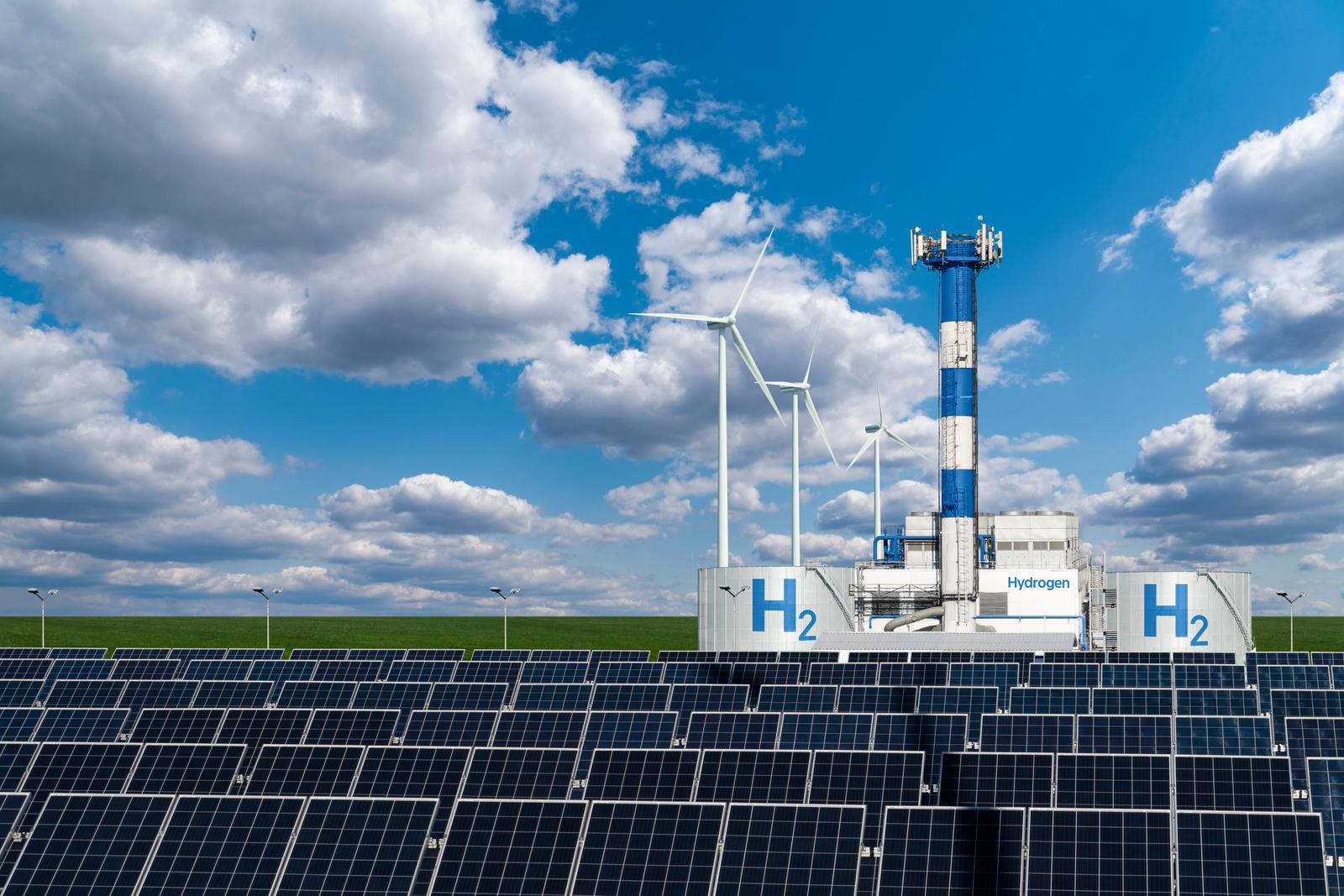
Indian Government’s $2 4 Billion Solar Manufacturing Incentive Scheme Gets Overwhelming Response
Vena Energy Closes Financing for 176 MW Solar-wind Hybrid Project in Karnataka
Tata Power’s Renewable Energy Arm Receives Rs 2,000 Crore Investment from GreenForest
Clean Energy-powered Livelihoods To Boost India’s Rural Economy by $50 Billion: Report
NTPC Green Energy to Raise Up to Rs 9,000 Crores Term Loan
NTPC Plans to Raise $750 Million Through Japanese YenDenominated Loan for RE Projects and Capital Expenditure
Indore Municipal Corporation Raises Rs 661 52 Crores on the First Day of Green Bond Issue
Andhra Pradesh Investment Board Clears Rs 1 10 Lakh Crores
Proposal of NTPC for New Energy Park
Centre Approves Rs 16,400 Crores for Five Solar Parks in Andhra Pradesh
World Bank Keen To Invest Rs 2500 Crores on Green Resilient Integrated Development Programme for Himachal Pradesh
Amp Energy India to Develop 720 MW of Renewable Energy Projects in Andhra Pradesh
Onix Group to Develop 2000 MW Renewable Energy Projects in Uttar Pradesh

Gautam Solar Catapults Green India Vision; Supplies 70 MW Of Highefficiency Solar Panels
Viraj Profiles and Avaada Energy Partner to Establish a 100 MW Solar Plant in Maharashtra
BrightNight and ACEN Partner to Deploy 1 2 GW Hybrid Renewable Power Portfolio in India
Tata Power Renewable Energy Signs Major PPA for 510 MW Solarwind Hybrid Project in India
Adani Group Plans to Develop 15 GW of Renewable Energy in Andhra Pradesh
Assam Government Approves Implementation of 620 MW Green Power Projects
KPI Green Energy Receives Commissioning Certificates from GEDA for 31 MWac Solar Power Project
KPI Green Energy Signs 20-Year Hybrid PPA for 1 845 MWac capacity with Indian Military Base
Copenhagen Infrastructure Partners Enters Long-Term Partnership In India To Develop 1 8GW Of Renewable Energy Projects
Adani Green Energy Operationalises World’s Largest 700-MW WindSolar Hybrid Power Plant in India
ully Commissions Its Largest Green Energy at
Thermax and Fortescue Future Industries to Explore Green Hydrogen Projects in India
India’s National Green Hydrogen Mission Aims to Reduce Fossil Fuel Imports by ₹1 Lakh Crores by 2030
Gujarat Government Signs MoU with Ocior Energy to Produce 1 Million Tonnes of Green Hydrogen and Ammonia
Indian Oil Corporation Invests Rs 2 Lakh Crores in Net-Zero Emissions Plan, Focuses on Green Hydrogen
ACME Group and IHI Sign MoU to Explore Opportunities in Green Hydrogen and its Derivatives
European Investment Bank Joins India Hydrogen Alliance with Indicative Funding of €1 Billion
Uniper, Greenko Sign Exclusivity for Green Ammonia Offtake to EU from India
Greenko Places India’s Largest 140 MW Electrolysers Order on John Cockerill
Sterlite Power Completes Lakadia-Vadodara Transmission Project, Unlocking 5000 MW of Green Power
Amplus Solar to Set Up a 200 MWp Wind-Solar Hybrid Project in Tuticorin, Tamil Nadu
Ramkrishna Forgings Plans To Set Up 7.82 MW Solar Power Plant at Jamshedpur
JK Cement To Offtake Green Energy From CleanMax’s 6.42 MW of Wind & Solar Farm In A Bid To Reduce Carbon Footprint
Virescent Renewable Energy Trust Acquires 25 MWp Solar Asset from Samta Energy
Cleantech Solar Commissions 37 MWp Solar Projects for Global Manufacturing Giant at its Solar Parks Across Maharashtra
Gensol Bags Orders for 247 MWp of Solar Power Projects worth Rs 501 Crore
NTPC Commissions 50 MW out of 300 MW of Nokhra Solar PV Project in Rajasthan
ŠKODA AUTO Volkswagen India Goes Green with 18 5 MW Solar-Power Rooftop at Chakan Plant
KPI Green Energy To Sell 8 35 MW Solar Power To Five Clients
Amplus Solar and JK Lakshmi Cement Sign 56 MWp Solar Open Access PPA in Chhattisgarh
SunSource Energy Commissions a Solar Power Plant at Max Hospital, Vaishali, Ghaziabad
Amp Energy India Commissions 5 MW Solar Open Access Project in Maharashtra
SECI Tender for 100 MW (AC) Floating Solar PV Project having 10 years plant O&M at Getalsud Dam, Ranchi, Jharkhand
NTPC Renewable Issues BoS Tender To Develop 1000 MW Solar Projects Across India
Coal India Floats EPC Tender To Select Contractors For 810 MW Solar Projects
Coal India Arm Floats EPC Tender To Install 35 MW Solar Projects In West Bengal
MSEDCL Issues RfS for Procurement of 1000 MW of Solar Power from Projects to be Developed in Maharashtra
TANGEDCO Tenders for 420 MW of Solar Power Under PM-KUSUM
Component A Program
RUVNL Floats Tender For Setting Up 1500 MW Wind-Solar Hybrid Projects with Storage Across India
RUVNL Issue Tender for 1200 MW Solar Power projects anywhere in India with Storage System
RUVNL Floats Tender To Develop 1 GW Solar Power Projects Across Rajasthan
PGVCL Invites Bids for 921 MW Solar Projects under PM-KUSUM
Component C

MSEDCL Tenders for 250 MW of Decentralised Solar Projects under PM-KUSUM Program
Karnataka Cooperative Milk Producers Federation Limited (KMF) Tender for 110 MW of Solar Power Plant on Group Captive Mode for KMF & its member Milk Unions
Himachal Pradesh Government through HIMURJA Invites Bids to Set Up 100 MW of Solar Projects
Assam Power Distribution Company Tenders for 200 MW Solar Power Project in Assam
The Indian government has issued a revised Tariff Policy under the Electricity Act, of 2003. As per the policy, any company that establishes a coal or lignite-based thermal generating station and begins commercial operations on or after 1st April 2023, must establish renewable energy generating capacity equal to a minimum of 40% of the thermal station’s capacity or procure and supply equivalent renewable energy
For thermal generating stations with commercial operation dates between 1st April 2023 and 31st March 2025, compliance with the renewable generation obligation (RGO) of 40% must be achieved by 1st April 2025 For any other thermal generating stations starting commercial operations after 1st April 2025, compliance with an RGO of 40% is mandatory from the start of commercial operations. Captive coal or lignite-based thermal generating stations will be exempt from the RGO requirement, provided they meet the Renewable Purchase Obligations set by the Central Government
The deadline to comply with and implement the Quality Control Order 2017, for solar photovoltaic Inverters, has been extended by the Ministry of New and Renewable Energy (MNRE) It will now be June 30, 2023
The Central Government issued the “Solar Photovoltaics, Systems, Devices, and Components Goods (Requirements for Compulsory Registration) Order, 2017” on 5th September 2017 Whereas, selfcertification for SPV inverters was extended up to 31st December 2022
Because of the availability of limited test facilities and providing more time for compliance, the implementation of the Quality Control Order,
JVVNL Issues Tender To Install 31 MW Solar Projects For Feeder Solarization
Vishakhapatnam Port Authority Invites Tender for O&M of 10 MW Solar Plant for a Period of 1 Year
HPPCL Tender for 10 MW Solar Power Project in Himachal Pradesh
CREST Tenders for Two Floating Solar Projects with Combined Capacity of 5.5 MW in Chandigarh
DVC Releases Tender for 8 MW Ground Mounted Solar PV Power Plants in Jharkhand
BBMS Tenders for 11 5 MW of Grid Connected Solar PV Projects in Haryana
PEDA Floats Tender For Installing 10 MW Solar Systems Across State
WBSEDCL Issues Tender For O&M Of 10 MW Solar Power Project in West Bengal
East Central Railways Issues Tender To Install 3 MW Rooftop Solar Systems in Bihar and Uttar Pradesh
Coal India Subsidiary CM PDI Tenders for 1.02 MW of Solar Power Projects in Jharkhand
Coal India Arm, BCCL, Tenders 2 5 MW Of Rooftop Solar Systems Installation in Dhanbad Jharkhand
Coal India Arm, CMPDI Floats Tender For Developing 4 MW Solar Power Project in the Giridih region of Jharkhand
Mazagon Dock Shipbuilders Ltd Invites Tender for Maintenance of 390 kWp & 650 kWp Rooftop Solar Systems
ANERT Issues Tender For Implementation of 1 MW of Solar Power Plants at Government Medical College Campus, Thiruvananthapuram
2017 for SPV inverters is now extended from 31st December 2022 to 30th June 2023 or till further orders The notification states that the manufacturers must have valid International Electrotechnical Commission (IEC) certificates and test reports from accredited labs for the smooth implement the order
The Central Electricity Regulatory Commission (CERC) in India has amended its regulations regarding the sharing of inter-state transmission charges and losses The amendments include waiving interstate transmission system (ISTS) charges for certain renewable energy generating stations and pumped hydroelectric stations that begin commercial operation by June 30, 2025, and will remain in effect for 25 years Additionally, battery storage systems that are charged using energy from REGS or RHGS, which begin operating before June 30, 2025, will be eligible for a waiver of transmission charges for 12 years
Under the amended regulations, solar power projects operating under the Solar Energy Corporation of India (SECI) manufacturing-linked capacity program to sell power to entities with renewable purchase obligations will also be eligible for a waiver of transmission charges for 25 years from their commercial operation date (COD) Hydro-generating stations with power purchase agreements (PPA) signed between December 1, 2022, and June 30, 2025, and where construction work is awarded by June 30, 2025, will also be eligible for a waiver of transmission charges for 18 years from their COD.
The amended regulations also detail how transmission deviation charges will be calculated for generating stations, battery storage systems, and captive projects, as well as for states and designated ISTS customers


The Indian government has announced the suspension of the Approved List of Models and Manufacturers (ALMM) order for the financial year 2023-24 The Ministry of New and Renewable Energy (MNRE) has issued a notification stating that solar projects commissioned by March 31, 2024, will be exempt from the requirement of procuring solar PV modules from ALMM This relaxation in the mandate will be applicable for one year only
Currently, 83 Indian manufacturers with a combined capacity of 21 GW have been approved under the list. Before the imposition of ALMM, Chinese manufacturers supplied 85% of India’s panel demand The intention behind the ALMM mandate was to reduce the import of solar equipment from China However, it turned out to be a barrier in ongoing projects as the demand for solar modules far exceeded its indigenous supply Only 10 GW of 500-watt peak panels could be made in the country against 70 GW of solar capacity installation that was underway. To add to the woes, the government has also imposed a 40% basic customs duty on the import of modules and 25% on the import of cells The suspension of the ALMM mandate for the financial year 2023-24 will provide some relief to the solar industry However, more needs to be done to promote domestic manufacturing and ensure the smooth implementation of ongoing projects
India’s coal-fired power plants are being encouraged to become more flexible to meet new load demands as the country faces delays in the addition of 175 GW of renewable energy sources due to the COVID-19 pandemic The Hon’ble Minister of Power recently launched a report that recommends conducting low-load tests on thermal generating units and tuning them effectively to meet new load demands According to the report, the Thermal Power Plants (TPP) fleet is expected to operate at an average minimum load of 40% shortly. This will drastically impact the schedule of most of the conventional generating plants and lead to operating thermal power plants at part load Hence, thermal generating units will need to be tuned in a very effective and efficient manner to meet the new load demands If any gaps are found, they will need to be fixed
Currently, about 70% of India’s energy demand is being met from thermal generation, making it essential to ensure that maximum flexible power is available from thermal power plants The report suggests that if measures are implemented for the operation of TPPs at 40% load instead of the present 55% minimum load, then it will be possible to achieve about 21 GW of additional flexible power from the thermal fleet The report concludes that coal-fired power plants remain the main source of flexible power, and the operators must undergo training for the implementation of flexibilization Added precautions must also, be taken to prevent catastrophic equipment failure
The increasing penetration of variable and intermittent renewable energy sources (VRES) like solar and wind in the Indian energy mix poses a grid-level of challenge that requires incentivization of technologies that offer storage and ancillary services attributes One such technology is Pumped Storage Projects (PSPs), which are domestically available, timetested, and internationally accepted PSPs not only provide storage and ancillary

CERC Amends Regulations, Waives ISTS Charges for Certain Renewable Energy and Hydroelectric Stations in India
services but also offer a range of positive attributes They are clean, green, safe, and non-explosive, and do not produce any harmful by-products or pose disposal problems
Recognizing the immense utility of PSPs in grid stabilization and meeting peaking power demand, the Ministry of Power has formulated draft guidelines to promote PSPs across the country with proactive support from State Governments. The guidelines aim to set the direction of PSP development in India All State Governments and other stakeholders are requested to provide their comments and suggestions on the draft guidelines within 15 days of their issuance With the proactive promotion of PSPs, India can leverage this technology to meet its energy storage and ancillary service needs while also contributing to a cleaner, greener, and safer energy future
The Ministry of New and Renewable Energy (MNRE) has extended the timeline to complete solar and solar-wind hybrid project completions for bids received before March 9, 2021 This extension is available until March 2024 On April 1, 2022, the Basic Customs Duty was imposed on solar cells and modules The ministry pointed out that bids for many projects, which were submitted before the announcement, were not yet finalized due to the COVID-19 epidemic and subsequent supply chain disruptions.
MNRE stated that there are several projects for which bids were finalized by the agencies of the government (SECI/NTPC/NHPC) before the said announcement Normally, these projects would have been completed before the imposition of BCD; however, because of disruptions, these projects could not be completed before the customs duty took effect While a decision on bids that were finalized before the announcement of customs duty is pending, in the meantime, the extended completion dates of many projects have expired It has therefore been decided that projects, for which bids were finalized before 9th March 2021 may be given time for completion of projects upto March 2024.
The Ministry of New and Renewable Energy (MNRE) has increased the Central Financial Assistance (CFA) for Residential Category in Hilly, North Eastern States The Ministry has decided to provide higher CFA for residential consumers of North Eastern States including Sikkim, Uttarakhand, Himachal Pradesh, UT of Jammu & Kashmir, Ladakh, Lakshadweep, and Andaman & Nicobar Islands
Individual Household – For first 3 kW: Rs 17662/ kW and for RTS capacity beyond 3 kW and upto 10 kW: Rs 8831/kW
Resident Welfare Associations/Group Housing Societies (RWA/GHS) –Rs 8831/kW for common facilities up to 500 kWp @ 10 kWp per house On the National Portal, any residential consumer from any part of the country can apply for the installation of RTS and get CFA directly in his/her bank account. All the steps starting from application to release of CFA can be monitored by consumers online on the Portal In the National Portal, the CFA amount for the RTS capacity installed by a consumer is common for the entire country which is as under:
Individual Household – For first 3 kW: Rs 14588/ kW and for RTS capacity beyond 3 kW and upto 10 kW: Rs 7294/kW
Resident Welfare Associations/Group Housing Societies (RWA/GHS) –Rs 7294/kW for common facilities up to 500 kWp @ 10 kWp per house
After careful examination and avoiding ambiguity, it has been decided that uniform and fixed CFA as applicable under the simplified procedure will be applicable for both implementation modes
CERC Authorizes INR 2 37-2 38/kWh Tariff For 1 4 GW Solar Power Projects Linked to ISTS CERC Gives Nod to NTPC’s INR 2 43/kWh Tariff for 200 MW Rajasthan Solar Project

The cumulative installed solar energy capacity in the country increased from 6 76 GW in FY 2016 to 54 GW in FY 2022, expanding at a compound annual growth rate of 41.39% “Solar Energy Market in India 2022-2027” report has been added to Research And Markets com The solar energy market is constantly expanding through efficient collaboration between the government and the private sector In 2021, India achieved the fifth position in solar power deployment, globally
Solar energy generation has become central to the National Action Plan on Climate Change At present, most of the solar photovoltaic (PV) panel installations in India are done using crystalline silicon, which improves power efficiency by about 22%. The National Solar Mission is one of the key initiatives to promote solar power expansion/generation Ministry of New and Renewable Energy (MNRE) has aimed to provide solar PVbased applications in areas where grid power is either not available or is unreliable, with the help of its Off-grid Solar PV Applications Programme
With the easing of restrictions on movement, solar companies started procuring and setting up solar plants once again. The government also started promoting domestic solar products and introduced several policies to boost the solar energy market before and after the second wave of the pandemic Given the government’s efforts to revive the market considering the pandemic, solar energy along with other renewable resources may be dedicated to tackling climate change
Implementation of the Indian domestic solar ALMM (The Approved List of Models and Manufacturers) is crucial to safeguard investments of $7 2 Billion (INR 53,773 crore), which India would need over the next three to four years to indigenize its solar manufacturing value chain The Indian solar industry will have more than 95 GW of PV manufacturing capacity if it continues to focus on domestic manufacturing. Additional production of solar cells is expected to rise to 18 GW by 2023
ALMM list features 83 solar module manufacturers totaling 20 98 GW capacity The outlook for the solar manufacturing sector both in the Indian and global markets on the back of the government’s policy push, climate action commitments and carbon-neutrality goals coupled with the China+1 strategy to diversify supply lines offers immense opportunity for indigenous solar PV module manufacturing India is expected to play a larger role in the global supply chain.
The government of India’s continuous focus and policy support to build a robust solar manufacturing ecosystem is noteworthy The Indian solar manufacturing sector will continue to collaborate with the government to enable the target of 500 GW of renewable energy by 2030 and India’s net zero emission target by 2070
Implementation of the Indian domestic solar ALMM (The Approved List of Models and Manufacturers) is crucial to safeguard investments of $7 2 hich India would need over the next three to
four years to indigenize its solar manufacturing value chain The Indian solar industry will have more than 95 GW of PV manufacturing capacity if it continues to focus on domestic manufacturing Additional production of solar cells is expected to rise to 18 GW by 2023
ALMM list features 83 solar module manufacturers totaling 20 98 GW capacity The outlook for the solar manufacturing sector both in the Indian and global markets on the back of the government’s policy push, climate action commitments and carbon-neutrality goals coupled with the China+1 strategy to diversify supply lines offers immense opportunity for indigenous solar PV module manufacturing India is expected to play a larger role in the global supply chain
The government of India’s continuous focus and policy support to build a robust solar manufacturing ecosystem is noteworthy The Indian solar manufacturing sector will continue to collaborate with the government to enable the target of 500 GW of renewable energy by 2030 and India’s net zero emission target by 2070.
India needs a combination of technological advancements and regulatory support to make green hydrogen cost-competitive and widely adopted Power only accounts for 40% of India’s carbon emissions, making green hydrogen essential for decarbonizing the hard-to-abate sectors such as transportation and steel. The industry has the potential to transform India from a net energy importer to a net exporter in the long run However, the cost of production needs to be reduced from $3-6 per kg to less than $2 per kg to be competitive with other energy sources
Grey hydrogen is already in use by oil refineries and fertilizer companies, and these industries could be early adopters of green hydrogen However, for other uses such as fuel for commercial vehicles or shipping or as feedstock for producing iron and steel, economics will play a crucial role To reduce the cost differential, India needs to reduce the cost of renewable power generation and electrolyzers, which are the key steps in producing green hydrogen
India’s renewable energy prices, which account for 50-65% of the total cost of green hydrogen, may have to decline to below Rs 2 per unit Additionally, a waiver of energy banking, transmission and distribution charges, and inter-state transmission charges will be crucial to reduce the landed cost of power The Green Hydrogen Mission has provided an initial financial incentive of Rs 19,744 crore, wherein Rs 17,490 crore is allocated towards funding domestic manufacturing of electrolyzers and green hydrogen production Mandates for green hydrogen consumption for refineries and fertilizers are also expected
To establish itself as an export hub and achieve the target of green hydrogen consumption of 5 million tonnes by 2030, India will face competition from other countries such as China, the Middle East, Australia, and Chile Developed economies such as the US and Europe have announced massive subsidies to incentivize green hydrogen production and adoption Hence, the pace of execution and regulatory and policy support will determine India’s export competitiveness
A new study by researchers at Cornell University has shown that colocating commercial agriculture and solar panels on the same land can increase food production while improving solar panel performance and longevity
The study found that solar panels mounted over vegetation reveal surface temperature drops compared to those arrays built over bare ground This cooling effect leads to an improved solar panel lifespan and conversion efficiency The study suggests that agrivoltaic systems can potentially help resolve future global food-energy problems, especially in hot and arid climate zones
With global food demands expected to increase by 50% by 2050, and the need to accelerate the deployment of renewable energy to mitigate the impact of climate change, co-locating solar panels and commercial agriculture could be a mutually beneficial solution
A study by two economists from the International Monetary Fund (IMF) suggests that a combination of renewable subsidies and higher tariffs on coal could help India achieve nearly one-third lower emissions by 2030, as well as decrease coal imports by 14% by the same year
India has made significant progress towards meeting its emissions reduction targets under the Paris Agreement, but total greenhouse gas emissions could still increase by more than 40% by 2030 with current policies. While a modest increase in short-term emissions may be necessary for poverty reduction and energy security, a more rapid scaling up of current policies could help lower emissions significantly over the medium term and bring India closer to a path to net zero by 2070, according to the study
The research shows an alternative emissions trajectory could be achieved by scaling up current policies It includes a gradual increase in subsidies on the use of renewable energy coupled with higher taxes on emissions. The added benefit of early reduction in the reliance on imported fuels would help to ensure universal access to energy, and lessen the negative health effects of pollution
The policy proposed by the study’s authors would result in a modest reduction in the level of real gross domestic product as firms and consumers pay higher taxes However, enough fiscal revenues would be raised to compensate the poorest citizens, and the small cost of this policy is less distortionary than other options Lower emissions would have significant benefits. Increasing renewable energy usage and allowing coal to taper off in this policy scenario would lead to a 2 5% reduction in pollution, saving lives and leading to fewer missed school and workdays The study suggests that combining renewable subsidies and higher tariffs on coal could have positive environmental benefits and help India move towards achieving its emissions reduction targets

Global energy-related carbon dioxide emissions rose by under 1% in 2022 –less than initially feared – as the growth of solar, wind, EVs, heat pumps and energy efficiency helped limit the impacts of increased use of coal and oil amid the global energy crisis, according to new IEA analysis published
Although the rise in emissions last year was far smaller than the exceptional jump of over 6% in 2021, emissions remain on an unsustainable growth trajectory, calling for stronger actions to accelerate the clean energy transition and move the world onto a path toward meeting its energy and climate goals, according to the new analysis, CO2 Emissions in 2022 The new analysis, CO2 Emissions in 2022, is the first in a new series, the Global Energy Transitions Stocktake, and will be freely accessible to support the first Global Stocktake leading up to the COP28 Climate Change Conference in November
The report shows that emissions from coal and oil increased, while emissions from natural gas declined China’s emissions remained flat, the European Union’s emissions fell, and emissions from emerging and developing economies in Asia increased. While clean energy helped avoid additional emissions, fossil fuel companies need to take more responsibility to align their strategies with meaningful emissions reductions
According to the latest report, the green bond market in the country accounts for only 3 8 % of all outstanding corporate bonds exceeding USD 500 billion Fitch Ratings said that as of January 2023, GSSS (Green, Social, Sustainability, and Sustainability-linked Debt) bonds accounted for USD 20 billion or 3.8 % of the country’s overall corporate bond market while the government bond market is more than double this size
According to the report, it stated that one of the reasons the domestic green bond market is so small is that issuers are concentrated in the energy sector, particularly renewable energy from solar projects, another reason is that they are all denominated and held in the rupee by domestic banks, insurances, and the Reserve Bank of India (RBI) However, the vast majority of issuers (as much as 90%) prefer issuing GSSS bonds in dollars

The RBI, which issued sovereign green bonds worth Rs 16,000 crore in two equal tranches, on January 23rd and 9th February, can be observed Fitch believes the maiden issue reflects increasing policy focus on domestic financing for climate adaptation and mitigation Fitch also believes that domestic investors will hold these bonds largely due to the national climate policy’s incentives
The sovereign green bonds’ proceeds will be used to finance projects that achieve the decarbonization goals, including net-zero emission by 2070, decreasing the GDP’s emissions intensity by 45% by 2030, and increasing non-fossil fuel energy sources to 40% by 2030 According to the report, domestic issuers have many problems accessing the capital market These include low credit ratings; low credit guarantees and low investor demand

Trina's focus is on steady growth, creating a dominant market position, while remaining committed to renewable energy goals, and providing high-quality solar solutions.
Trina Solar will support the government's efforts to achieve its ambitious energy goals, and to empower its journey towards a cleaner future.
Trina Solar has shipped over 8GW of solar panels to India since its arrival This has contributed significantly to India's total installed solar capacity

How has the year 2022 been for Trina Solar?
Trina Solar celebrated its 25th anniversary as a leader in the solar industry in the year 2022 We are proud of Trina's many milestones and achievements as we celebrated the silver anniversary
Trina shipped over 120GW of modules worldwide by September 2022 with our customers spread across more than 100 countries This is a notable development Trina Solar shipped over 40GW of 210 modules across the world, ranking first in the industry As for the Indian market, Trina Solar supplied more than 8GW to PV projects throughout the country across all three segments: residential, commercial & industrial, and utility. Trina Solar places a strong emphasis upon innovation and is focused on 210 and N-type technology This was evident in the launch of the first 210 N-type modules NEG21C 20, the first 210 N-type solution designed for utility scenarios in India.
In 2022, Trina also built our own PV factory - Trina Solar (Xining) New Energy Industrial Park This plant will further industrialize next-generation N type cell technology, help the industry switch to Ntype cells, and provide greater value to customers
Trina also set a new world record in N-type technology by setting the aperture efficiency of Ntype modules at 24 24% for the 25th consecutive time Trina's financial resilience was evident as we were widely acknowledged by authorities and the global financial market for our bankability, reliability and solid performance Trina has a 'Ranking in PV Tech Q322' Bankability Report, and 12 Vertex products demonstrated superior performance in UL’s bankability report
Trina's focus is on steady growth, creating a dominant market position, while remaining committed to renewable energy goals, and providing high-quality solar solutions
How do you think India's solar industry can become internationally cost competitive?
s most open to solar
The government's tial growth will likely
lead to an increase in demand Union Science and Technology Minister Dr Jitendra Singh spoke at a conference and expressed confidence that India will be able to achieve the 500GW nonfossil fuel energy capacity by 2030 Trina Solar has shipped over 8GW of solar panels to India since its arrival This has contributed significantly to India's total installed solar capacity Trina Solar also appreciates the lifting of import restrictions for central public sector enterprise (CPSEs) which will boost the development and production of solar energy We believe in the benefits of an open market This will promote innovation and wider adoption and will help the country achieve its goals Trina Solar will support the government's efforts to achieve its ambitious energy goals, and to empower its journey towards a cleaner future
improves terrain adaptability with threedimensional articulation Advanced stow strategies, integrated alarm strategies allow for fully autonomous protection in adverse weather like high wind, hail, snow, flood, and hail storms
The N-type modules showcased were the NEG21C 20 which are India's first 210 N type solutions for utility scenarios Dual-glass bi-facial, 210mm solar modules offer 690W maximum power output, up to 22 24% module efficiency, and high customer value They also deliver high reliability and energy yield at lower balance of system (BOS), and levelized cost of energy (LCOE) Trina Solar is a leader in high-efficiency n type technology and strategically develops these products Trina Solar's high efficiency and highpower n type modules have been widely recognized by the market since 2018
Trina Solar has planned an 8 GW of 210+ n type solar modules to meet growing demand These are based on Trina Solar’s 210+N technology which best combines the high reliability of 210 Vertex modules with Trina Solar's high-efficiency n cells These modules will provide residential customers with a premium green technology combined with a perfect aesthetic experience
The Vanguard 1P has excellent O&M efficiency and is equipped with a variety of fully qualified cleaning robot solutions This allows for efficient, cost-effective module cleaning Trina Smart Cloud is a smart O&M solution that combines remote monitoring, control and reporting on component performance, triage, and diagnostic functionality The Vanguard 1P also offers high energy yield It is the only integrated tracker/module solution in the solar industry, providing the highest level of compatibility and performance over the longterm It achieves up to 8% energy gain in heavy clouds and backtracking on sites that have uneven terrain using SuperTrack Smart Tracker Control integration
What can we look forward to from Trina Solar in 2023?
Trina Solar is a pioneer in 210 technology Production capacity for solar cells and modules will reach 50GW and 65GW respectively by the end of this year, 90% of those being 210 products. Trina Solar also has shipped more than 30GW worth of 210 modules
TrinaTracker, a Trina Solar tracker business, has installed its first trackers in India, Malaysia and Myanmar in 2022 We also have large tracker and module deals ranging from 160 to 200MW in New Zealand and Israel In the first quarter of 2023, we will be shipping our 650W DEG21 Vertex modules as well as 1P trackers to a project of 39MW in Australia
TrinaTracker Vanguard 1P, a 1 in-portrait independent tracker that can be used on complex terrains, is highly flexible. Vanguard 1P uses the 1P single-row design It has technology advantages that ensure higher reliability, greater power generation, increased adaptability, and better balance of system (BOS) Vanguard's advanced technology provides the tracker with outstanding reliability O&M efficiency and high energy yield
These features are what give the Vanguard 1P its extraordinary reliability: A bi-damper system to ensure suitability in high winds; an optimized torque tube design to provide tremendous torsional stiffness in wind-induced dynamic phenomena; a patented spherical bearing that
As we start to implement our decentralization strategy, we have already qualified several Indian vendors for the supply of tubes, posts, and purlins We have invested heavily in the team, as well as in R&D to be a leader in technology and innovation This will allow our customers to see how TrinaTracker can help them reach their energy goals of higher energy yield and reduced LCOE
Trina Solar product range, including trackers and batteries. Trina Solar is the only industryleading integratiis a leading provider of smart energy total solutions and PV modules It continues to expand its ve solution for modules, trackers, energy storage and smart controls to help reduce EPC risk and cost This allows Trina Solar to unlock the best long-term energy outcomes for IPPs in India and long-term asset owners
"Trina Solar places a strong emphasis upon innovation and is focused on 210 and N-type technology."
You had showcased Cutting Edge N-Type Modules at REI 2022. Please tell us more about it.
Please highlight the key features of Trina tracker Vanguard 1P.
Trina Solar’s new Vertex N NEG19RC.20 module has a low voltage design, delivering higher efficiency and lower balance of system (BOS) cost But the new module also has high-power because of 210 technology
Solar cells that are 210mm-long inherently have more power than earlier generation solar cells that are smaller
With each module producing more power, fewer modules in total are required to achieve the project’s target power output, resulting in a lower levelized cost of energy (LCOE).
The new Vertex N NEG19RC 20 module, which is now entering the Indian market, has maximum power output up to 590W and maximum efficiency up to 21 8% It is a dual-glass module available in a mono-facial or bifacial format The product is ideal for small and large-scale utility projects
The Vertex N family of modules are unique because - even though the module delivers high-power - it has a lower voltage design allowing the module to achieve a higher efficiency
The lower voltage design means you can have 29 modules per string, delivering 11 2% more power per string This is one of the reasons why the Vertex N NEG19RC 20 modules delivers a lower balance of system (BOS) cost for your project We have calculated that the BOS cost reduction is 71 US cents per watt
Trina Solar’s modules are compatible with popular inverters and trackers available in India The versatility and compatibility of Vertex N NEG19RC 20 modules with other leading product brands, makes Trina Solar’s modules a far more viable option
Trina Solar’s modules are also renowned for their proven durability and reliability Each module comes with extended product and performance warranties
The new Vertex N NEG19RC 20 is a n-type module A key advantage of ntype technology over modules that use p-type technology, is n-type modules have lower power degradation over time
Independent third-party testing and quality assurance organizations have certified that Trina Solar’s Vertex N modules perform well in and withstand
harsh weather and environmental conditions, including: extreme temperature, high salt, ammonia, sand, and humidity

Third-party organizations have also validated and certified the modules as having excellent energy yield Due to the module’s lower temperature coefficient of -0 30%/ ℃ , it generates a higher energy yield and lower energy loss even during hotter months of the year Standard PERC modules perform less well in hotter months because the module has a temperature coefficient of -0 34%/ ℃ The new Vertex N NEG19RC 20 module has 5W higher power than other modules that use PERC cell technology working under the same temperature conditions
Besides 210 technology, the module incorporates other market-leading technologies such as multi-busbar for greater light absorption; the cells are created using non-destructive cutting technology, so each cell has ultra-smooth edges; and we use high density encapsulation to maximize the module’s surface area. We maximize the module’s surface by having only a 0 5mm gap between each solar cell whereas modules from the other manufacturers have a 2mm gap
Trina Solar is focused on seeing that its products have a low carbon footprint from manufacturing through to the end of the product’s lifecycle
TÜV Rheinland, an independent organisation headquartered in Germany that certifies products for performance and reliability awarded Trina Solar a Lifecycle Assessment for our Vertex modules that incorporate 210mm-long solar cells We are the first solar module manufacturer to receive this certificate for 210 modules This certificate is important, because it recognizes that Trina Solar’s manufacturing processes and the product’s lifecycle has a low carbon footprint
In terms of financing, Trina Solar is the only module manufacturer to be voted seven years consecutively as bankable by 100% of respondents in Bloomberg New Energy Finances’ bankability survey. Respondents include financers responsible for financing renewable energy projects Bankability is important because solar farm developers want to know that the projects – that use a particular brand of solar module - will be able to get financing Bankability depends on several factors such as: reliability and performance of the brand’s modules and the financial performance and track record of the module company
Trina Solar is publicly-listed on the Shanghai Stock Exchange Star Market, China’s equivalent to the NASDAQ The Star Market is popular with tech stocks and high-growth companies
Being publicly-listed means Trina Solar’s financials are publiclydisclosed, giving confidence not just to investors but financers in the solar industry
In conclusion, Trina Solar’s Vertex N NEG19RC 20 modules offer high-efficiency and high-power delivering a lower LCOE, but with a lower voltage format that provides a lower BOS cost

Trina Solar’s modules are compatible with popular inverters and trackers available in India.
A 100 MW fishery photovoltaic project using Trina Solar’s modules proved to generate power with high performance The modules, with high energy yield and high reliability, can withstand harsh maritime environments and deliver great economic value to customers.
This project, installed over fish ponds in Taishan, Guangdong, China, continued to be used for fish and shrimp breeding after the system was connected to the grid However, the climate in the marine mudflat location places particularly tough demands for modules’ safety and reliability, such as potential induced degradation, corrosion of electrical equipment, tougher installation, construction
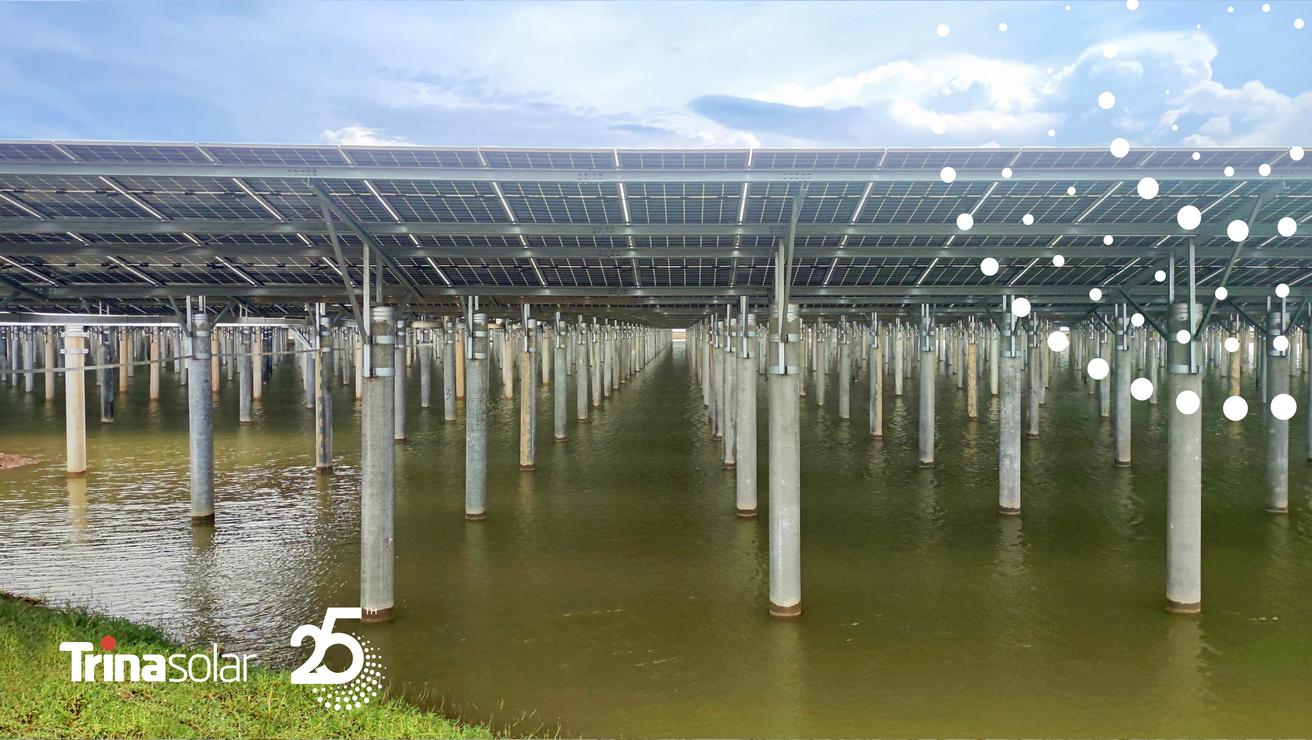

Trina Solar's modules fully consider weather-fastness in design avoiding the risk of water intrusion, ensuring high reliability and energy yield in harsh environments From multiple rigorous mechanical load tests in the laboratory to practical applications in projects worldwide, Trina Solar’s modules have always withstood any challenges with first-class reliability
Its Vertex 670W module was awarded a damp-heat reliability prize by China General Certification Center in early 2022, which fully confirmed its superior reliability and applicability in fishing, mudflat, floating, and seaside scenarios

Besides , solar modules installed above the water can shade the fish pond, reduce the water temperature, cut evaporation and effectively block strong sunlight, which significantly reduces the incidence of fish
dying as a result of high water temperatures With the integration of technology and nature, this project not only improves the local natural environment but also reaps a harvest in fishery and power generation
As a natural choice in the hot and humid climate, previous to this 100MW fishery project, Trina Solar Vertex modules powered a 60MW solar farm, one of the world’s largest inland floating solar PV systems in Singapore, and a 70MW fishery photovoltaic project in Hebei, China, and many other projects worldwide
For the past 25 years, Trina Solar has focused on technological innovation to provide systematic solutions based on local conditions and customers’ needs. Trina Solar modules have proven their worry-free power generation throughout the life cycle, delivering lower LCOE of with high reliability, high efficiency, high power and high energy yield
Trina Solar's modules fully consider weatherfastness in design, avoiding the risk of water intrusion, ensuring high reliability and energy yield in harsh environments.
We have seen rapid growth in India, and now we have almost 3 GW of installed base
We have seen rapid growth in India, and now we have almost 3 GW of installed base.
We have launched the PRO Models and S5 Series of the inverter where DC currents are at the higher side to comply with higher peak modules requirement
According to you, what is the reason behind the slowing down of new solar capacities in 2022? Do you see the trend reversing soon?
This slowdown is mainly due to two factors. The first is the unviability of the 25 GW project pipeline due to high module prices and ALMM policies The second is the global semiconductor crisis, which has caused an increase in inverter costs and made it difficult for the material to be available However, the ALMM policy has helped to strengthen the growth of 'Make in India' in module manufacturing The solution to revive the market is to allow importation of modules for older projects, which I believe GOI has already begun to do.
With the slowdown in utility installations, C&I seems to be the next big hope What do you have to say about this?
India is yet to realize the immense potential of the C&I sector, which could outpace all other segments This segment is critical and has a huge demand We have witnessed a significant increase in demand for the C&I segments despite ongoing module price challenges It was able to absorb all price fluctuations and experienced a significant increase in 2022 We expect an explosive rise in C&I in the upcoming years


What changes on the policy front could push the sector ahead, according to you?
We think easing import duties on modules at least for a few years, until India has a sufficient manufacturing base to meet its internal needs would be of great help. We are also seeking stronger and more favorable policies for inverter manufacturing to help us establish our manufacturing base here in India
What technology shifts are we likely to see this year?
The disruption is already here and the market has shifted to higher peak module Modules below 500wp will soon be obsolete We work very closely with module manufacturers and customers Therefore, we have launched the PRO Models and S5 Series of the inverter where DC currents are at the higher side to comply with higher peak modules requirement
How do you see the solar cost trend evolving?

India has one of the most competitive Solar PPA rates in the world However, the global scenario is changing The price rise was inevitable due to global issues But, I believe it will stabilize Although we have seen a decline in module prices recently, they won't be further reduced and will be standardized now The same trend is also evident in recent bids
Indian developers are facing huge problems with previous projects, where the PPA rates were even lower than INR 2 3 These projects are unviable with current inverter and module prices This should be seriously considered by the government. In a recent comment, Mr. R.K. Singh from the Power Ministry stated that older projects would be allowed to import modules at very low import duties
How do you think the renewable uptake of Discoms can be improved?
This issue is being taken seriously by the central Govt, who has been pushing discoms to fulfill their RPO They will have to accept it, today or tomorrow This is certain
What do you have to say about Green Hydrogen's uptake?
It's still in its infancy, I think However, we have seen developers show enthusiasm, which is a positive sign. Recent policies and the focus of Govt definitely indicates a bright future for Green Hydrogen in the next years
Which segment among utility, C&I and residential is expected to do well this year?
Given the low prices of modules, the utility segment will continue to grow We will see a lot of demand for C&I segments as the market matures and customers are more informed about the benefits of solar State policies will affect the growth of residential sectors Customer intent would depend on the factors of net metering, subsidy, and easy financing options.
How do you see Solis growing this year?
Solis is working hard to meet Indian market demands We have seen rapid growth in India, and now we have almost 3 GW of installed base This includes residential projects, utility and C&I projects The C&I segment holds the majority
India is our strategic market We have big plans for 2023. Our PRO Model has been launched for our 80K, 100K, 110K and S5 Series inverters below 60K We are launching a larger Solis-350K-5G inverter with 1500V DC for the utility segment We are also expanding our service network to provide the best service possible
"We are launching a larger Solis-350K-5G inverter with 1500V DC for the utility segment. We are also expanding our service network to provide the best service possible."
Solis is working hard to meet Indian market demands. We have seen rapid growth in India, and now we have almost 3 GW of installed base."
Solis has just won the National First (Set of) Equipment Award for its S6EH1P(7 6-11 4)K-H hybrid energy storage inverter, making this further proof of the S6 inverter's leadership in technology and innovation

First (set of) equipment refers to the first (set of) or first batch of equipment, system and core components with independent intellectual property rights and major breakthroughs in varieties, specifications or technical parameters after innovation They are an acknowledgement of a manufacturer's in-house competency and ability to do independent research and development across the country.
The S6-EH1P(7 6-11 4)K-H independently developed and produced by Solis has been re-certified to the latest UL 1741 SB test standard and is qualified for installation across North America Customers will be able to monitor their entire home via hybrid inverters, smart breakers, and an updated SolisCloud Solis manufactures products (the Power Hub and new apps) to give customers more control and information about decisions they make for their own energy usage These products will allow homeowners to be independent of the grid so that they can power their entire home during a power outage
In addition, the Power Hub solution has been specifically developed to form a backup system for the whole house, as required by consumers in the North American market This is completely green backup power supply was made to meet and exceed customer expectations
As the energy industry evolves, Solis is committed to driving sustainable development to the future with technological innovation backed by a strong R&D focus The company is aligned with the global goal of carbon peaking and carbon neutrality, which will require the fast development of an energy storage market This is especially true since the installed capacity of global energy storage is estimated to be 209 GWh in 2025, with demand for PV energy storage inverters up to 104 GW
Solis plans to continue to increase investment in R&D, to continuously enhance the innovation and core competitiveness of its products and solutions As a top global player, Solis remains committed to developing technology to power the world with clean energy

Established in 2005, Ginlong Technology Corporation (Stock Code: 300763 SZ), under the brand name Solis, is one of the world’s largest and most experienced solar inverter manufacturers The company provides cost-effective solutions for homes, businesses, and large-scale power plants delivering value at every level of the solar supply chain and appealing to both homeowners and businesses, as well as electricity producers and renewable energy investors globally Combining a global supply chain with world-class R&D and manufacturing capabilities, Solis optimizes inverters for each regional market, serving and supporting its customers with a team of local experts The company aims to work with stakeholders to accelerate the world's journey towards a more sustainable future
For more information visit www solisinverters com

The company is aligned with the global goal of carbon peaking and carbon neutrality, which will require the fast development of an energy storage market.
We are highly vertically integrated to ensure the most stringent QA & QC according to Jinko Solar's standards across the supply chain
We see a 100% transition towards costcompetitive and higher efficient N-type to further lower costs
We have also introduced a liquid cooling energy storage system that ensures the temperature difference of thousands of batteries enclosed in the cabinet within 2 5 degrees Celsius
Can you tell us about any recent innovations or advancements in Jinko Solar's solar module technology?
Absolutely We have been continuously striving to improve our solar module technology to ensure greater efficiency and cost-effectiveness One recent innovation we have initiated and developed is NType-TOPCon technology, which has increased efficiency and allows for mass production efficiency of our N-type TOPCon cell up to 25% and power output of Tiger Neo panel up to 630Wp. Additionally, we have introduced BIPV products that apply N-TOPCon technology and can boost efficiency up to 19-21% depending on light transmittance, making them ideal for building facades, atriums, terrace floors, and canopies
We have also introduced a liquid cooling energy storage system that ensures the temperature difference of thousands of batteries enclosed in the cabinet within 2 5 degrees Celsius This triples the safety of our energy storage system, prolongs its lifespan, and increases discharging capability, which are key challenges faced by current available ESSs
How does Jinko Solar ensure quality control and product reliability in its solar modules?
Quality control and product reliability are essential to us, and we take several measures to ensure them Firstly, we are highly vertically

 Vice President, Jinko Solar
Vice President, Jinko Solar
integrated to ensure the most stringent QA & QC according to Jinko Solar's standards across the supply chain Secondly, we use a smart factory model that is copied in every facility, which highly automates and digitalizes our operations to provide accuracy and consistency of quality We have a minimum of 54 steps inprocess quality monitoring and control, and we have state-of-the-art testing labs on-site set in each factory Lastly, we have an n-type grand alliance ecosystem to guide, audit and chase quality data of key suppliers via digital tools
How does Jinko Solar approach pricing and cost competitiveness in the solar module market?

We approach pricing and cost competitiveness in the solar module market through several methods Firstly, we continuously advance our technology to achieve faster and higher efficiency improvement We also use a vertical integration model that encompasses 65GW wafer, 55GW cell, and 70 GW module by the end of 2022 This provides us with scale advantage Additionally, we have a resilient, flexible, and diversified supply chain ecosystem via joint ventures, share exchanges, strategic alliances, and long-term supply agreements with key vendors Lastly, we prioritize efficient operation and management
Can you give us a brief overview of Jinko Solar's ESS solutions?
Our ESS solutions are designed with a focus on higher safety, higher energy density than competitors (3 44MW), more charging and discharging capability, lower power consumption, longer lifetime, pre assembled modularized design that saves installation and commissioning time, lower LCOE, and O&M cost
What are your thoughts on the current state of the solar industry, and where do you see it headed in the future?
The solar industry faces several challenges, including cost, land/transmission constraints, and energy intermittency To address these challenges, we see a 100% transition towards cost-competitive and higher efficient N-type to further lower costs. We also anticipate speedy deployment of highly efficient as well as cost sensible BIPV to utilize facades and other non-used available space Lastly, we believe that peace-of-mind high safety, more power capacity, low cost, smart O&M, and liquid cooling ESSs will be essential to the future of the solar industry
"One recent innovation we have initiated and developed is NType-TOPCon technology, which has increased efficiency and allows for mass production efficiency of our N-type TOPCon cell up to 25% and power output of Tiger Neo panel up to 630Wp. "


Residential
Residential ESS (1kWh-50kWh)
Standardization / Customization Modes Available
Automatically switch between grid-connected and off-grid, compatible with existing PV Power Station
C ll l l fi f d i li bl f h
Residential ESS Product
Cell type: Lithium iron phosphate
Cycle life: 6000 cycles
Capacity: 5.12-20.48kWh support parallel connection
Warranty:10 years
Protection class: IP66(Inverter),IP65(Pack)
Residential ESS (1kWh-50kWh)

Standardization / Customization Modes Available
Automatically switch between grid-connected and off-grid, compatible with existing PV Power Station

Cell-level fireproof design, more reliable for home use
Intelligent management platform realize remote monitoring
C&I ESS Product
Battery Type: Lithium Iron Phosphate (LFP)
Battery Life Cycle: 8000 Cycles 0.5C @25°C
Nominal Capacity: 50-1000kWh
(Customized) Voltage Range: 500-1500V
IP Rating: IP54

Cooling:Air
Certification:IEC
Utility Energy Storage System
Effective Liquid coolingable
Higher E ciency
Early Detection
Real Time Monitoring
Liquid Cooling Energy Storage System
Higher Energy Density 3.44MWh / 20ft



Apraava Energy will continue to focus on growing its renewable and transmission portfolio through greenfield as well as acquisition opportunities
The company has steadily grown its wind and solar energy portfolio and currently has 47% renewable-energy-led installed capacity
Our diverse portfolio comprises over 3,000 MW of installed capacity, which consists of ~1175 MW wind energy (this includes an under-construction 252 MW wind project at Sidhpur, Gujarat) and 250 MW of solar energy projects across seven Indian states
How do you assess the growth of India’s solar sector in the recent past?
India is one of the frontrunners in the renewable energy (RE) space The Indian government is trying to scale up RE capacity through the Production Link Incentive (PLI) Scheme, grid-connected solar rooftop installations, and the development of solar parks and ultra-mega solar power projects in Madhya Pradesh, Gujarat, Andhra Pradesh and Jharkhand to name a few

The 2022-23 Union Budget has given a boost to India’s ambition to become a leader in green energy The government has approved the framework for sovereign green bonds – a move that will help in deploying resources for renewable and green infrastructure in India The proposed inter-state transmission system in the budget for evacuation and grid integration of 13 GW of renewable energy from Ladakh will facilitate the development of large RE projects in the Union Territory, which is endowed with abundant solar and wind potential
Furthermore, there has been a substantial drop in the pricing and lending rates of NBFCs and commercial banks that are financing RE projects In the light of all these positive developments, we can expect solar energy to continue playing an important role in supporting the Government’s aim of achieving net-zero emissions by 2070 and install 500 GW (gigawatt) of renewable energy capacity by 2030
What is the company's current renewable energy portfolio?
Our diverse portfolio comprises over 3,000 MW of installed capacity, which consists of 1175 MW wind energy (this includes an underconstruction 252 MW wind project at Sidhpur, Gujarat) and 250 MW of solar energy projects across seven Indian states
What are the current challenges and potential opportunities for the solar energy sector in the near future?
India is endowed with abundant solar energy and if harnessed efficiently, it can substantially reduce the dependence on fossil fuels and reduce the carbon emissions involved in energy generation. Solar PV systems are now among the most costcompetitive energy alternatives on the marketplace
What is the energy mix that Apraava Energy is aiming to achieve in 2023?

Apraava Energy has always been one of the frontrunners in the renewable space We were one of the first companies to see the possibilities of renewable energy in India and had established a wind farm as far back as 2009 We were also the first power company in Southeast Asia to issue a green bond and one of the early corporate partners of the International Solar Alliance Over the years, the company has steadily grown its wind and solar energy portfolio and currently has 47% renewableenergy-led installed capacity The company is pursuing setting up of green power capacities at its power plant in Jhajjar as part of the GoI’s scheme for ‘Flexibility in Generation and Scheduling of Thermal/ Hydro Power Stations through bundling with Renewable Energy and Storage Power ’ Apraava Energy will continue to focus on growing its renewable and transmission portfolio through greenfield as well as acquisition opportunities Additionally, we will also explore opportunities in customerfacing areas with a long-term objective of becoming a trusted integrated energy utility/ energy solution provider in the country
Acceleration of the energy transition is essential for long-term energy security, price stability and national resilience The biggest challenge with the country is its widely spread and uneven distribution of renewable energy sources across different regions – this needs better coordination for the flow of power across state-run grids and calls for large investments not only in RE generation but also in the T&D sector for augmentation and modernization of the network
Even as challenges persist the Government of India is vigorously introducing steps to create a positive and enabling environment for renewable energy in the country The government has waived interstate transmission system charges for interstate solar and wind power sales for projects completed by June 30, 2025 along with permitting 100 per cent foreign direct investment in the sector The government has also enhanced the funding under the PLI scheme for the domestic solar cells and module manufacturing to Rs 24,000 crores from the existing Rs 4,500 crores which will reduce import dependence and make India an exporting nation
India is on a steady path towards becoming a major hub for renewable energy in the world, with solar energy playing a critical role
We were one of the first companies to see the possibilities of renewable energy in India and had established a wind farm as far back as 2009.
Sungrow has been the torch-bearer in its approach towards innovating its inverters

We are focused on energy storage market too by offering complete BESS solution for utility scale projects
We look to build on our 1+X series platform of Central inverters and are also keen to expand in the residential segment of single and three phase inverters with a special set of features that would appeal to the growing market
Tell us how has 2023 kickstarted for Sungrow.
Year 2023 has kickstarted with lot of optimism A lot of Solar PV projects have simultaneously started gaining momentum and hope to see the commissioning in the later quarters of this year or early next year
This brings in a sense of responsibility at our end to provide the latest solutions which adapt well to the requirements posed by the project sites and to meet the statutory requirements of the government bodies. Sungrow well prepared to achieve no 1 position this year too as achieving consecutively last 3 years and started year 2023 on high note by starting delivery of solar inverters for 1 GW Tata-SJVNL-Rajasthan project
Technical Head-APAC, Sungrow
What are some ways Sungrow inverters stand out in the market and competition?
Sungrow has been the torch-bearer in its approach towards innovating its inverters We do not shy to further improvise our products to better our customers' overall design, procurement and installation experience

Be it launching that largest capacity string inverter SG320HX in utility segment and to creating a new dimension in central inverter market by 1+X modular inverter series, we are always thinking ahead of the current market offerings.
What are some updates/additions you are planning to your product portfolio?
We look to build on our 1+X series platform of Central inverters and are also keen to expand in the residential segment of single and three phase inverters with a special set of features that would appeal to the growing market In addition, we are focused on energy storage market too by offering complete BESS solution for utility scale projects
What have been some technological upgrades in Sungrow's inverters over the years?
Over the years, we have been researching and improving our products in the following area:
Efficiency: Newer generation of converter devices with better thermal management and temperature withstand capabilities and modulation techniques to improve utilization of the switching devices
Storage: Smaller form factor, physical modularity
Modularity: One module can be tagged out of operation without affecting other healthy modules
Capacity: Flexibility to design large block size and variable block size as per uneven land parcels Modular capacity chosen for easy replacement and/or repair Ease of repair/replacement: String inverter with reduced weight Central inverters with plug and play design Universal spare parts concept with BESS converters
What is your outlook on the solar inverter market for this year?
With the momentum that the market has picked up, we hope to see consistency in utility scale order closures for later quarters of this year and early quarters next year We see tremendous growth potential in C&I and residential markets as well this year In 2023 year, 30-40% extra capacity of solar addition is expected while compared to last year addition

"Sungrow is well prepared to achieve no. 1 position this year too as it has been achieving consecutively since last 3 years. The year 2023 has started on a high note by beginning delivery of solar inverters for 1 GW Tata-SJVNL-Rajasthan project."
A lot of Solar PV projects have simultaneously started gaining momentum and hope to see the commissioning in the later quarters of this year or early next year."

The year 2022 has been more lucrative, as Saatvik has commissioned India's biggest Rooftop project for a well-known steel manufacturer, and numerous landmark projects are in pipeline and will be operational in the subsequent months. In addition, Saatvik has secured and shipped export orders for Mono perc and bifacial modules. With these export shipments, Saatvik will create a global presence. Our products are extremely efficient and give maximum output; solar modules manufactured at our cutting-edge manufacturing facility are subjected to a range of tests to assure the highest quality
In the coming financial year, we will launch our Greenfield project, increasing our production capacity from 1.5GW to 3GW. Moreover, Saatvik will debut their mega project in Gujarat Gandhidham, introducing its integrated cell and module manufacturing line.
For us, the year 2022 was full of expected possibilities; we ascended to new heights, observing an exponential increase in module sales throughout both domestic and international markets Notwithstanding certain hurdles, such as fluctuating raw material prices, we successfully fulfilled our pre-booked orders.
Innovation is always a key to success, we continually worked hard on innovative ideas, acquiring the newest technology and implementing it to use in our operations Saatvik being the fastest-growing module manufacturing brand has always given priority to quality and customer service for which we ensured and amplified new methods in our system
The year 2022 has been more lucrative, as the Saatvik EPC team has commissioned India's biggest Rooftop project for a well-known steel manufacturer, and numerous landmark projects are in the pipeline and will be operational in the subsequent months In addition, Saatvik has secured and shipped export orders for Mono perc and bifacial modules With these export shipments, Saatvik will create a global presence
what are some products that you have recently launched?
During the REI exhibition, we showcased our new technology Topcon 620 Wp modules which we will soon be launching in the domestic market All testing and certification procedures are in process and soon the product will be available for the domestic retail market. Apart we have launched DCR modules in Mono Perc and Bifacial up to 590Wp which are ALMM approved as well
Tell us about the USPs of your newly launched products and how has the response been to them so far?
Our products are extremely efficient and give maximum output; solar modules manufactured at our cutting-edge manufacturing facility are subjected to a range of tests to assure the highest quality Because we have implemented modern MBB (Multi Bus bar-10BB) technology, our module efficiency is up to 21% in any scenario Superior glass and surface texture provide exceptional performance even in lowlight conditions We have been able to grab a significant portion of the domestic market due to our commitment to quality and timely technological upgrades, and we have seen a
what are your goals for this year 2023?
The year 2023 will be even bigger because the market is rapidly shifting towards green energy, resulting in increased demand for solar products To meet this demand and opportunity, Saatvik will be adding an additional Greenfield project 1 5 GW module manufacturing line, increasing our production capacity from 1 5GW/Annum to 3GW/Annum Our strategic goal for 2023 is to focus on the international market and book at least 400MW of export orders; also, because the manufacturing line has been doubled internally, we want to acquire at least a 1GW+ order from the domestic market

Anything else you would like our readers to know?
Saatvik is a leading brand in the renewable energy segment and we are moving ahead toward our committed mission The industry has witnessed ups and downs in the last year, whether it was the price fluctuations in cells price, Government policies, etc Despite these unpredicted challenges Saatvik has still emerged as the most preferred brand i.e is because of the quality of products and

"With quality products, Saatvik aims to cater majority of the domestic and international Market share"
Saatvik is a leading brand in the renewable energy segment and we are moving ahead toward our committed mission. Saatvik has emerged as the most preferred brand because of the kind of quality of products and services that we deliver."

South India's solar PV development has been accelerating in recent years South India has some of the country's highest levels of solar irradiation, making it an ideal location for solar PV projects The Indian government has been promoting solar energy through a variety of policies and initiatives, including the Jawaharlal Nehru National Solar Mission, which aimed to achieve 100 GW of solar power by 2022 Furthermore, various South Indian state governments have launched their policies to promote solar energy, such as the Tamil Nadu Solar Energy Policy
South India has seen the development of several large-scale solar PV projects. For example, the Kamuthi Solar Power Project in Tamil Nadu, with a capacity of 648 MW, is one of the world's largest solar PV projects, while the Pavagada Solar Park in Karnataka has a capacity of 2,050 MW Kurnool Ultra Mega Solar Park with a capacity of a GW in Andhra Pradesh
Apart from large-scale projects, rooftop solar installations are becoming increasingly popular in South India. Many homes, businesses, and institutions are installing rooftop solar PV systems to meet their energy needs while lowering their carbon footprint
Overall, the growth of solar PV in South India is expected to continue in the coming years, driven by government policies, falling solar technology costs, and increased awareness of the benefits of solar energy
In South India, developing a solar PV project entails several steps, including site selection, design, financing, construction, and operation
The first step in developing a solar PV project is to find a suitable location with high solar irradiance and land availability. South India has a high potential for solar energy generation, and various tools are available to assess a specific site's solar potential After deciding on a location, the next step is to design the solar PV system The design process includes deciding on the type of PV modules, inverters, mounting structures, and other project components. Factors such as shading, temperature, and wind speed should also be considered in the design
Financing is a critical component of the development of solar PV projects

There are several financing options available, including debt financing, equity financing, and subsidies To ensure the project's success, it is critical to secure funding from reputable sources. Construction can begin once financing is

secured Land preparation, installation of PV modules, inverters, and other components, and system commissioning are all part of the construction phase The solar PV system is ready to generate electricity after commissioning The system is monitored and maintained during the operation phase to ensure optimal performance and long-term reliability
It should be noted that developing a solar PV project necessitates expertise in a variety of fields, including engineering, finance, and project management To ensure the project's success, it is best to collaborate with a team of experts
Southern India has high levels of solar irradiation, making it an ideal location for solar power generation The levels of solar irradiation in Southern India vary depending on location and time of year, but the region receives high levels of solar radiation all year
The average daily solar irradiation in Southern India ranges from 4 5 to 6 5 kilowatt-hours per square meter (kWh/m2) with the highest levels in coastal areas, according to the National Institute of Solar Energy (NISE) In addition, the region has relatively low variation in solar radiation levels throughout the year, making it a stable and reliable source of energy for solar power generation
Tamil Nadu, a southern Indian state, has the country's highest solar potential, with an average daily solar irradiation of 5 5-6 kWh/m2 Other southern Indian states with high solar potential include Karnataka and Andhra Pradesh, which have average daily solar irradiation levels of 5 1-6 4 kWh/m2 and 5 kWh/m2, respectively
Overall, the region's high levels of solar irradiation, combined with favorable government policies and initiatives, have made it a hub for solar power generation and a leader in renewable energy in India
Southern India receives some of the country's highest levels of solar radiation, making it an ideal location for solar PV projects Furthermore, the region has a relatively stable and predictable climate, which ensures that solar PV systems produce consistent output
Several state governments in Southern India, including Tamil Nadu and Karnataka, have implemented policies and incentives to promote solar energy These policies provide various benefits for solar power generators, such as subsidies, tax exemptions, and preferential tariffs, making it financially attractive to invest in solar PV projects
Furthermore, the region has an abundance of land available for large-scale solar PV project development Several large-scale solar PV projects, including some of the world's largest solar parks, have already been developed in states such as Karnataka, Tamil Nadu, and Andhra Pradesh
Overall, Southern India is an appealing destination for solar PV projects due to its high solar irradiation levels, favorable policies and incentives, and land availability The region has the potential to contribute significantly to India's renewable energy targets and to become a leader in solar energy development
LONGi, the largest solar technology company in the world has retained the top position in the module shipment ranking for 2022 after it grabbed the top in 2020 and 2021 based on a PVTech report


Founded in 2000 LONGi is committed to being the world’s leading solar technology company, focusing on customer-driven value creation for full-scenario energy transformation LONGi dedicated itself to technology innovation and established five business sectors, covering mono silicon wafers, mono cells and modules, commercial & industrial distributed solar solutions, green energy solutions, and hydrogen equipment The company has honed its capabilities to provide green energy with its featured and best-selling “Hi-MO” series module products and more recently launched a new generation of electrolyzed water hydrogen production equipment ALK Hi1 and solutions to support global zero carbon development
As planned in 2022, the Comapny's production capacity is 150GW for mono wafers, and 85GW for mono modules LONGi ranked Top 1 in module shipment for many consecutive years both in India and globally
LONGi Group has laid out several manufacturing bases in China Vietnam Malaysia and other countries and regions, and branches in the United States, Japan, India, Australia, Thailand, the United Arab Emirates and other countries, with businesses in more than 150 countries and regions



Over a number of years, LONGi has consistently maintained an industryleading ability to mitigate risk and adapt to market changes and, as part of operations, the company prioritizes corporate financial health and stability, with its asset-liability ratio at a low level compared to other global PV manufacturers
LONGi has also been rated ‘100% bankable’ in BloombergNEF’s survey of PV Module & Inverter Bankability, underlining its capability in assisting project developers to secure access to financing from banks in order to bring a consistent, steady return on investment for global clients
Based on comprehensive evaluation of module manufacturers’ financial strength, product technology and production/supply capacity, PV ModuleTech has identified LONGi as AAA rated manufacturer The PV ModuleTech rating report is based on the evaluation system of PV market research team, which takes into account the manufacturing capability and financial health of the enterprises to determine the investment risk of all PV module manufacturers It is one of the authoritative analysis tools in the industry
LONGi’s Hi-MO 5 series, which has been the most popular choice of solar modules for developers in India, with over 85% of India shipments comprising the Bifacial Hi-MO5 modules, would be a key attraction
LONGi has announced by the end of 2022 that, the global shipments of its Hi-MO 5 module have exceeded 50GW, cumulative shipments approaching 100 million panels. The Hi-MO 5 based on 182mm cells, was officially released in June 2020 and is adaptable to an extensive range of application scenarios, being easy to handle, transfer, store and install, with a very low breakage rate

Based on gallium-doped, half-cell, crackless smart soldering technology, Hi-MO 5 modules have received wide industry recognition, including awards from Intersolar and TÜV Rheinland for Energy Yield Simulation at its ‘All Quality Matters’ congress, while end-user consumers have endorsed the product for exceeding expectations in terms of power generation performance
According to industry sources, the market share for 182 modules has seen a rapid increase during 2022, moving from 27% in 2021 to a current high of 70%
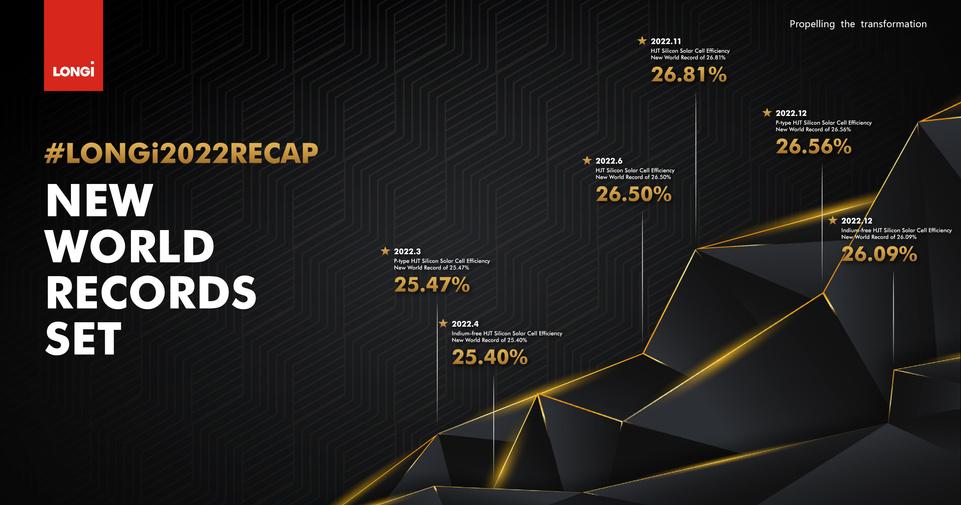
To better serve the distributed market, LONGi has launched the Hi-MO 6 Series-Explorer, Scientist, Guardian, and Artist based on HPBC (Hybrid Passivated Back Contact) cell technology in the standard M10 size (182mm) and are available in 72C and 54C types The Series is the first product to be exclusively designed for the DG market and with a maximum efficiency of 22 8% in mass production, is optimized in terms of low light performance, temperature coefficient, and power But due to certificate regulations, the launch of the series was delayed in India
The continuous reduction of Levelized Cost of Energy (LCOE) is inseparable from the constant pursuit of solar cell conversion efficiency Since 2021, LONGi has broken the world record of multiple solar cells conversion efficiency for 12 consecutive times According to the latest certification report of Hamelin Solar Energy Research Institute (ISFH) in Germany, the conversion efficiency of silicon heterojunction (HJT) solar cells independently developed by LONGi reached 26 81% This is the latest world record since the Japanese company set a single crystal silicon solar efficiency record of 26 7% in 2017
By virtue of its scientific and technological innovation in the new energy photovoltaic field, LONGi was awarded as "2022 Forbes China Most Innovative Companies” in 2022 Forbes China Innovation Summit.
With the significant reduction of photovoltaic electricity cost, more countries and regions around the world, especially developing countries and less developed countries and regions, can enjoy affordable clean energy
LONGi is committed to be the advocator, practitioner, and leader in the sustainable development of global clean energy And will continue to focus on technology and product innovation, utilizing solar energy power in a green world

LONGi’s Hi-MO 5 series, which has been the most popular choice of solar modules for developers in India, with over 85% of India shipments comprising the Bifacial Hi-MO5 modules, would be a key attraction.

Since LONGi made its presence in the Indian market in 2015, depending on its Hi-MO series module products, it has expanded the business map across India as well as in the Pan-India countries Till yet LONGi has achieved over 8GW cumulative shipment of high-efficiency modules and took the most market share in both the utility and rooftop sectors in India

LONGi Hi-MO series products adopt M6 and M10 cell sizes, which allows the module can be adaptable to an extensive range of application scenarios, being easy to handle, transfer, store and install, with a very low breakage rate
In 2021, LONGi Solar supplied 1.16 MWp of Hi-MO 4 Monofacial modules to Viridis Engineering, a leading solar EPC in India The solar system was built at the premises rooftop of a spinning mill in Tiruppur, Tamilnadu The generated electricity from the power plant will be feed into the local grid at LT level for captive consumption for their own purpose In that year, Indian Solar Industry was heavily impacted by the 2nd wave of pandemic and shipping constrains, but still LONGi and Viridis managed to complete this project within 100 Days saving 99 Lakh/Annum to the end client. The completion of this Rooftop Solar project proves that solar power remains an economically viable energy option for prosumers, especially Spinning Mills in India
The words from Mr Raveendran, MD of Viridis Engineering, "Being a firm that values and thrives on quality, we choose only the top-of-the-class products for our projects While we have used the premium brand inverter for this project, we had to match it up with LONGi Solar Modules, which is the global technology/manufacturing leader in the space This combination along with our superior BoS/EPC has helped us realize results which were far beyond our customer's expectations And so, this has become our template to delivering high-quality/high-performance projects to our customers across India."
With the EPC partner Dexler Energy Pvt Ltd, LONGi supplied

6 5MW of Hi-MO 4m modules for the solar system at a dairy farm of Sunvik Steels, one of the largest steel manufacturers in Karnataka The plant generates 5 87 kwh/KWp on an average daily basis, and 90 million kWh in the past year since its commission on October 1, 2021!

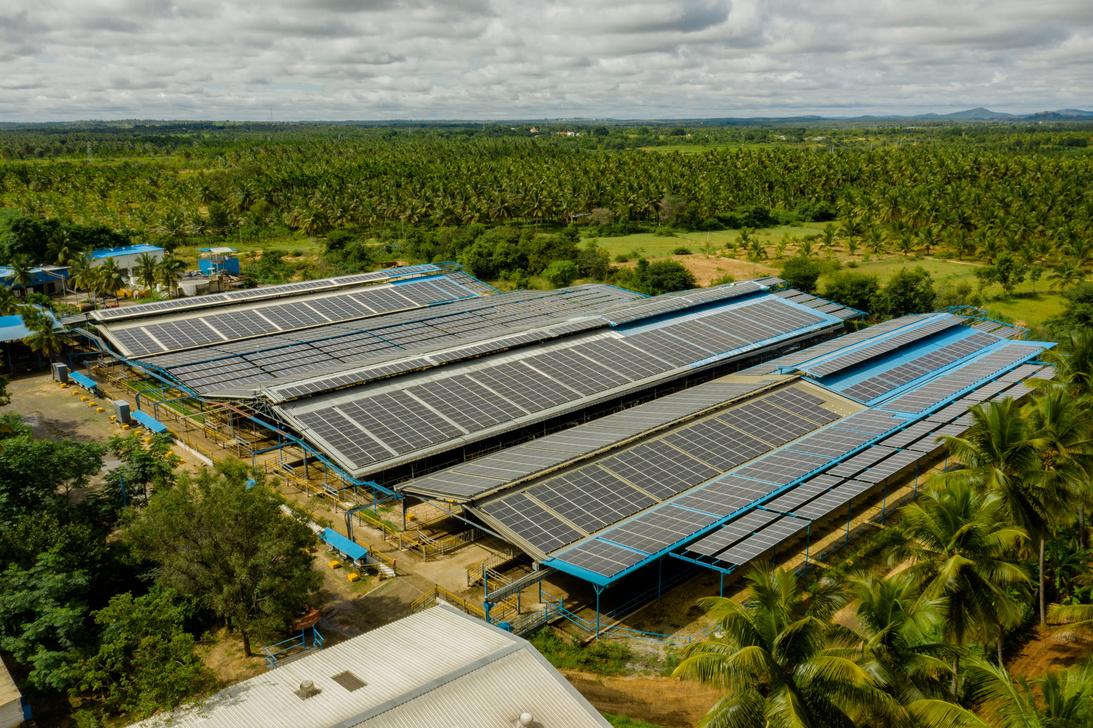
It is one of the largest C&I rooftop projects in the state, spanning 17 tall structures with multiple orientations and tilts Since there are no GI sheets or tin sheets for roofing, the modules also provide waterproof shelter to the dairy farm The project will save around 226,443 tons of carbon emission throughout its lifecycle, which is equivalent to 754,810 trees as a carbon sink for 30 years or 85,129 tons of coal saving
In 2022 E.B. Creasy & Co. PLC installed more than 250kW of LONGi solar modules for water pumping projects to facilitate Sri Lankan irrigation There are two projects at the premises of Pelwatte Sugar PVT LTD in Buttala, Monaragala District of Uva Province, SriLanka By using only solar energy, one of the systems is expected to pump nearly 3 million liters of water per day to irrigate sugar cane plantations without any grid or diesel-powered pumps
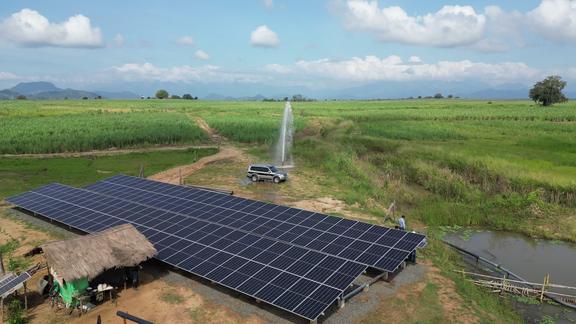
Solar modules as the “Generator” of a solar plant, will be exposed to a variety of harsh environmental conditions for many years, and any failure or abnormality may affect the returns With this in mind, the “LONGi Lifecycle Quality" was established, covering four major dimensions - Technology, Quality Management, Customer Experience, and Low-carbon. From module design, material selection, and lean manufacturing, LONGi Hi-MO series products and PV+ solutions power plants of all Scenarios LONGi is delighted to collaborate with its partners and customers who share its sustainability values, and to adhere to the belief of Solar for Solar, Solar for All, and everyone should be able to benefit from clean energy

"LONGi Lifecycle Quality" was established, covering four major dimensionsTechnology, Quality Management, Customer Experience, and Low-carbon."

With around 13 24 GW of total Solar PV capacity installed in the calendar year 2022 (utility & rooftop), an improvement over roughly 10 42 GW built in the calendar year 2021, solar capacity additions increase by 27% year-over-year in 2022 The total installed capacity in the year 2022 inclusive of utility-scale, rooftop, and off-grid system account for 13 95 GW
Large-scale installations reached a total of around 11 37 GW in 2022 as opposed to around 7 67 GW installed the year before In comparison to installed capacity in the year 2022 large-scale installations have grown by more than 48% year over year. The market opened after the partial restriction in 2021 and as a result, many projects were unable to get commissioned during the lockdown period due to COVID-19 restrictions, commissioned mostly in 2022 Additionally, there was a duty-free window in Q1 2022, which allowed the developers to commission their projects during this period The large-scale Solar PV project installation figures were the highest since the announcement of the JNNSM target for Solar The Budget 2022 reaffirmed that the basic customs duty (BCD) will be applied on Solar PV cells and modules starting in April 2022, despite the installations being anticipated to be high in Q1 2022

In comparison to the staggering 2 75 GW deployed in the entire calendar year of 2021, rooftop solar installations accounted for about 1 865 MW in 2022, a decline of 32%
Installations were higher than usual compared to the previous year because the country is no longer subject to COVID-19 restrictions, 2022 was the final year for the JNNSM target, and supply chain disruptions occurred in the second half of 2022 as a result of the implementation of BCD and the upgrading of Chinese manufacturing facilities
Since India's installed capacity in 2021 was 10 42 GW during the entire calendar year (CY) 2021, the growth rate of solar PV installations is expected to be extremely favorable in 2022
Between 2016 and 2019, Indian solar PV installations grew exponentially, however, COVID-19 has caused a slowdown in new installations The installations in CY 2020 dropped from 8 5 GW in CY 2019 to 3 7 GW The installations were fairly favorable in those two calendar years compared to the prior years, but since 2021, they have reversed course India requires more projects to be completed in the upcoming year to meet the ambitious 280 GW target set by the government for 2030
The view for 2023 includes a lot of novel policies and rules that might be advantageous for all types of solar PV installations in the nation. Even though the cost of solar installations has decreased to a low level, no mandatory or appealing policy might persuade people to choose solar rooftops in the past The only supportive policies for the rooftop segment were subsidies and net metering
Since installations across the nation have been increasing year since COVID, as seen in the aforementioned figures, there will be more installations than there were previously According to government targets, India must install more than 20 GW of solar PV each year to meet its 2030 goal, with the rooftop and utility segments needing to be strengthened The main aspect influencing the growth and yearly accomplishments of the solar objective will be the accessibility of simple financing at an affordable rate
Our team of climate enthusiasts is present in 16 countries and serving 3500+ clients across 40+ countries.
We have mobilised 200+ million offsets to date and are on the right path to fulfilling our aim of mobilising 1 billion credits by 2070
We launched a Rs 1000 crores (125 million USD) Climate Impact Fund in partnership with Singapore-based ICAM (Impact Capital Asset Management Pte Ltd )

How has 2023 begun for EKI and what is the goal for this year?
2023 has been great so far We continue to collaborate with leading brands in the domain of technology and others to enhance our services, facilitate our clients with the latest technology and ultimately expedite the journey towards a net-zero future Our team of climate enthusiasts is present in 16 countries and serving 3500+ clients across 40+ countries. We have mobilised 200+ million offsets to date and are on the right path to fulfilling our aim of mobilising 1 billion credits by 2070 The ultimate goal is a net-zero future and we continue to fast stride towards our goal
What have been some major projects for EKI recently? What new projects are lined up for this year?
EKI has recently signed a Charter of Collaboration with DNV, a Norway-based independent assurance and risk management provider, to promote awareness and support governance of voluntary carbon market ecosystem We are also the first ever company to list a Plastic Project from India with Verra - a global accreditation standard located in Washington, USA Recently, we also launched a Rs. 1000 crores (125 million USD) Climate Impact Fund in partnership with Singapore-based ICAM (Impact Capital Asset Management Pte Ltd ) EKI also specializes in driving community-based projects like green cooking for efficient cook stoves in rural homes and Nature-based Solutions (NBS) for climate


action; as well as collaborated with Inclusive Energy Limited, UK, to implement digital MRV systems in Biogas intervention, improving the credibility of such type of carbon offsets from community activities
These are some of our important projects and achievements in the last few months. We will continue to execute projects that benefit the environment and takes us closer to our goal of achieving net-zero carbon emissions
What is your industry outlook for the Indian carbon markets?
The Government's initiative to set up an Indian Carbon Market is a move worth applauding It will enhance climate action in India and encourage more businesses and organizations to start their climate journey Also, we welcome the recent notification of GOI, accepting 13 novel technologies for Article 6 2 carbon credits generation Such initiatives will encourage investors to take long-term investment commitments towards carbon neutral technologies and processes; and create a flourishing carbon market including voluntary carbon market in India We also expect GOI to put significant emphasis on the development of and operationalise digital MRV systems in Indian Carbon Registry addressing reduced transaction costs and time in an effort to advance sustainability
It is the appropriate time to establish domestic carbon market as global climate action is accelerating at a fast pace It will revolutionize the Indian carbon credit market by unlocking new market potentials and opening new opportunities for Indian sellers of carbon credits who will now have five different markets to choose from-
Domestic Compliance Carbon Markets
Domestic Voluntary Carbon Markets
Article 6 2 of the Paris Agreement Carbon Markets
Article 6 4 of the Paris Agreement Carbon Markets
International Voluntary Carbon Markets
How do you think more awareness can be created for Carbon credit and its need?
Enhanced awareness among stakeholders from businesses and investors domain will help them understand that carbon revenue will not only benefit them with increased investment in low carbon technologies but also, leverage financially viable processes while enhancing their market competitiveness This is important as majority of customers and investors consider carbon footprints as one of the important criteria to decide while buying/selling carbon credits It is a win-win situation for industries and businesses
Anything else you would like our readers to know?
We would like to highlight that the Grid Credit Program has got its due space in Union Budget 2023 allocations. This addresses the Prime Minister’s LIFE program, taking the environmental derivatives, credits & offset mechanism to support various environmentfriendly development activities, even at the individual level, beyond carbon This, when implemented through required regulatory modalities, will support India’s sustainable & secured development pathways
"EKI has recently signed a Charter of Collaboration with DNV, a Norway-based independent assurance and risk management provider, to promote awareness and support governance of voluntary carbon market ecosystem."

The world is on the verge of a climate catastrophe as the intensity of climate change we are experiencing today is probably worst in human history Rising sea levels, burning of fossil fuels, unsustainable industrial activities and their inherent growth-centric economic indicators, unjust consumption and exploitation of natural resources are all disturbing the ecological balance and threatening the future of planet To address the global concern and to contribute towards global climate goals, Mr Manish Dabkara founded EKI Energy Services Ltd (EKI) in 2008 with an objective to lead companies worldwide to a future of net-zero emissions
Manish hails from Indore, a city famous for a buzzing cotton handloom industry, gorgeous 19th century palaces and delicious delicacies like poha, jalebi and khatta samosas
A subject matter expert in the field of energy, climate change, carbon and quality management Manish is a Certified Energy Auditor & Manager under Govt of India’s - Bureau of Energy Efficiency (Ministry of Power) He also has certifications in quality and management from IIM-A, IIM Indore, CII and GIZ, in addition to a Masters in Technology in Energy Management
Under Manish’s leadership, EKI has grown to become a catalyst for carbon offsets not only within India but globally and has supplied over 200+ million offsets as on date Today, the company has 3500+ clients across 40+ countries globally
EKI is a leading carbon credit developer & supplier across the globe The Indore head quartered company is listed on the Bombay Stock Exchange (BSE)

EKI is 14+ years old and is global market leader with its deep expertise. The company works in the realm of climate change, carbon offset solutions and carbon asset management
EKI offers sustainable solutions for climate change and carbon offsets with global standards like CDM, VCS, Gold Standard, GCC, IREC, TIGR and others With an aim to contribute to the development of a climate-resilient global economy, the company offers strategic solutions to businesses and organizations globally to achieve their climate ambition
EKI offerings span across Carbon Credit/Asset Management, Carbon Credit Generation Carbon Credit Supply Carbon Credit Offsetting Carbon Footprint Management, Sustainability Audits, as well as Carbon Neutrality and Climate Positive initiatives




The company also specialises in driving community-based projects like green cooking for efficient cookstoves in rural homes and Nature-based Solutions (NBS) for climate action
In 2022, EKI charted a new brand journey with a commitment to become net-zero by year 2030 in addition to defining a target to mobilize up to 1 billion credits within the next 5 years (by 2027)

The recently announced Union Budget 2023 made some key declarations with regard to the country's vision of a net-zero future by 2070 Several allocations and initiatives such as support for Natural Farming, Mangrove Initiatives, GOBARdhan Schemes for waste management and recycling, Micro Fertilizers Manufacturing and Distribution Network and rapid adoption of Green Mobility by exemptions on customs duties are significant steps towards the country's green growth agenda
These initiatives are additional to one of the most important announcements made in the budget speech which is the newly introduced Green Credit Programme, to be notified under the Environmental Protection Act
The green credit programme aligns with the nation's vision for ‘Lifestyle for Environment (LiFE)’, a concept introduced by Prime Minister Narendra Modi at COP26 in Glasgow LiFE promotes a pro-planet, pro-people way of life and “mindful and deliberate utilisation, instead of mindless and destructive consumption” to protect and preserve the environment The idea is to adopt an environmentally conscious lifestyle and circular economy to protect Earth and ensure sustainability. The aim of this newly launched initiative is to encourage behavioural change and incentivise environmental services and ecosystem services across different sectors and activities that support LiFE or Lifestyle for Environment
The programme will be largely focused on improving the overall state of the environment by encouraging environmental conservation and increasing energy and resource use efficiency, mitigating climate change, and building adaptive capacity among other measures Further, the programme will incentivize sustainability and climate action related to forest and ecosystem services, waste management, air quality, water quality and access. It will also incentivize the distribution of additional resources for adoption of environmentally sustainable technologies and processes by local bodies, individuals and companies and provide fiscal incentives
Potential types of green credits could be Water Quality and Access Credits, Air Quality Credits, Forest & Ecosystem Credits, Waste Management
Credits, Renewable Energy Generation Credits and Energy Efficiency


Credits among others These credits will be an addition to already existing Article 6 carbon credits under Paris Agreement, domestic (Indian) emission trading system carbon credits under ECAct2022, plastic credits under EPR Regulations and international voluntary carbon credits.

Potential trade rates of these credits shall be less than carbon credits but if sold jointly with carbon credits then it will have potential to earn revenue in premium
Well defined policy and regulations aligned with the domestic and international carbon market are important to ensure that the green credit programme contributes significantly to country's green growth agenda. Highquality projects in priority sectors like waste management, forest ecosystem, water and transport are a must The market infrastructure will also require a revamp to facilitate green credit trade or transfer The new market infrastructure could include a national ‘mega-registry’ for all carbon instruments which could be potentially linked to international registries
Existing trading infrastructure should enable the trade of green credits, MRV protocols should be aligned with global best practices and demand side management strategies should ensure market stability
Potential support for this program shall be from UN agencies like Green Climate Fund, UNDP, etc Ministry of Environment, Forest and Climate Change of India (MOEFCC) and its sub-committees/bodies could be the regulatory body of the Green Credit Programme Once the scheme gets approved, the regulating body will devise an overall policy framework, prepare guidelines under FCA & EPA, set up institutions for the implementation of the scheme and allocate functions to all institutions. The creation of a domestic carbon market will further enhance the significance and adoption of the scheme
The governing agencies will be required to work with existing corporates to catalyze green credits by initiating voluntary net-zero pledges and capturing sustainable outcomes from projects in priority sectors One of the significant moves shall be the development of high-quality green credit generating projects to ensure that green credits are a preferred mechanism for corporates to achieve sustainable outcomes
The green credit programme builds on country's focus on net-zero carbon emissions by 2070 It presents a promising outlook for steering the country towards a low-carbon development path With capital inflow and support from the government in the form of such commendable initiatives, the future looks promising and sustainable

Solar PV technology is widely used in South India for a variety of reasons, including abundant sunlight, favorable government policies, and growing public awareness of the advantages of renewable energy
South India receives plenty of sunlight all year, making it an ideal location for solar PV installations The Indian states of Tamil Nadu, Karnataka, Andhra Pradesh and Telangana are among the top five in terms of solar potential The Indian government has implemented several policies and incentives to encourage the use of solar PV technology, such as netmetering policies that allow consumers to sell excess solar energy back to the grid
South Indian state governments have also launched policies to encourage the use of solar energy, such as Andhra Pradesh's Solar Energy Policy 2018-2022 and Tamil Nadu's Solar Policy 2019 Individuals and businesses in South India are becoming more aware of the benefits of renewable energy, particularly solar PV technology As a result, demand for solar installations has increased particularly among residential and commercial consumers Solar PV technology has become significantly less expensive in recent years, making it more cost effective than traditional fossil fuel-based energy sources As a result, it has become an appealing option for consumers looking to reduce their energy bills and carbon footprint

Overall, the combination of abundant sunlight, favorable government policies, growing awareness, and low cost has made solar PV technology a popular option in South India
South India has several solar PV inverter manufacturers to meet the region's growing demand for solar power solutions Some of the top solar PV inverter manufacturers in South India include:
Delta Electronics India is a leading manufacturer of solar PV inverters, offering a variety of products for residential, commercial, and industrial applications The company's manufacturing facility is located in Hosur, Tamil Nadu
Fimer India is a global leader in power and automation technologies, providing a diverse range of solar PV inverters and related solutions The company's manufacturing facilities are located in Bengaluru and Nelamangala, both in Karnataka Consul Neowatt Power Solutions is a leading manufacturer of solar PV inverters and related solutions, with
products for residential, commercial, and industrial applications The company's manufacturing facility is located in Chennai, Tamil Nadu
Statcon Power Controls is a leading manufacturer of solar PV inverters and associated solutions for residential, commercial, and industrial applications The company's headquarters are in Rudrapur, Uttarakhand, but it also has a regional office in Chennai, Tamil Nadu

These are only a few of the numerous solar PV inverter manufacturers in South India TMEIC India and Sungrow Power are two other notable companies
South India is also home to several solar PV module panel manufacturers, who are meeting the region's growing demand for solar energy solutions The following are some of the leading solar PV module/panel manufacturers in South India:
Vikram Solar is a leading manufacturer of solar PV module panels, offering high-quality products for residential, commercial, and industrial applications
The company's manufacturing facility is located in Falta, West Bengal, and it has an office in Chennai, Tamil Nadu
RenewSys India is a leading manufacturer of solar PV module panels for residential, commercial, and industrial applications The company's manufacturing facility is located in Hyderabad, Telangana
HHV Solar Technologies - HHV Solar Technologies is a leading manufacturer of solar PV module panels for residential, commercial, and industrial applications The company's manufacturing facility is located in Bengaluru, Karnataka
There are many numerous solar PV module panel manufacturers in South India Tata Power Solar, Bharat Heavy Electricals Limited (BHEL), Swelect Energy Systems, Premier Energies, and Emmvee are among the other notable companies
Huawei is a leading manufacturer of solar PV inverters and related solutions for residential, commercial, and industrial use The company's manufacturing facility is located in Chennai, Tamil Nadu
Abhishek Dutta CategoryLead-Contracts andProcurement,Adani NewIndustriesLimited


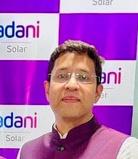








Bhuwan Singh Panwar HeadInternational SalesandMarketing AdaniSolar


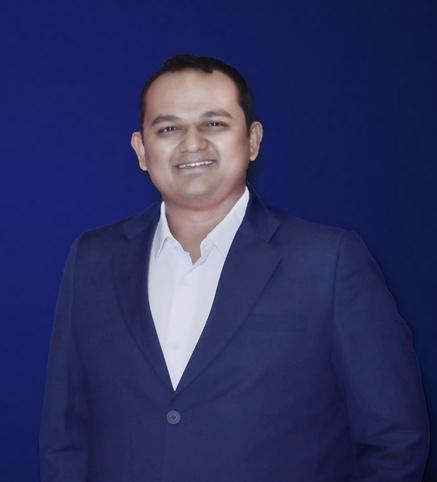




Kumar Arpit
Head-Marketing Communications AdaniSolar
Mandar Mainde
ManagingDirector AerocompactIndia PvtLtd
Jayesh Dhodapkar
Head-Sales AerocompactIndia PvtLtd
Ganesh Rai
HeadofTechnical Sales ArctechIndiaPvt Ltd
Deepak Ushadevi
MD&CEO CielEtTerreSolar Pvt Ltd

Pankaj Pandey COO EKIEnergyServices Ltd



Xavier Scaria
Director-Sales& Marketing FIMERINDIAPVT LTD
Rising Star
Darshan Pandya
MD(INDIA) FoxessCoLtd


Rajat Gupta
GMMarketing Communications GoldiSolarPvtLtd


Vinay Thadani
Director GrewEnergyPvt Ltd
Dhruv Sahni

HeadofMarketingSouth&CentralAsia JinkoSolarCo Ltd

Shantanu Sirsath
TechnicalHead India
ShenZhenGrowatt NewEnergyCo Ltd
Pravesh Bhargava



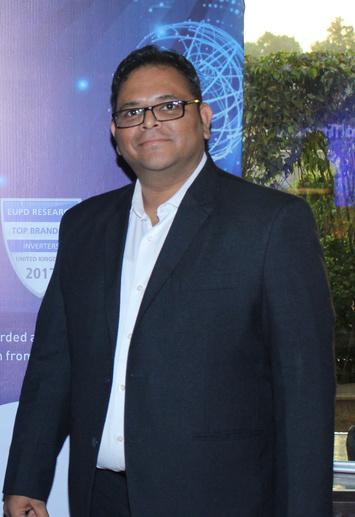
Co-Founder SpinkraftVentures PvtLtd
Pradeep Kumar
ManagingDirector LongiSolar Technology
Daniel Xi


SalesManager HoymilesPower ElectronicsInc


Shakti Kumar Dubey
Director IconSolar-EnPower TechnologiesPVT LTD

Ganesh Kumar TS
SeniorBusiness Leader LongiSolar Technology
Jigar Soni
SalesHeadSouth India
SinengElectric (India)Pvt Ltd
Ankit Singhania
Director&Co-Founder NavitasGreen SolutionsPvtLtd
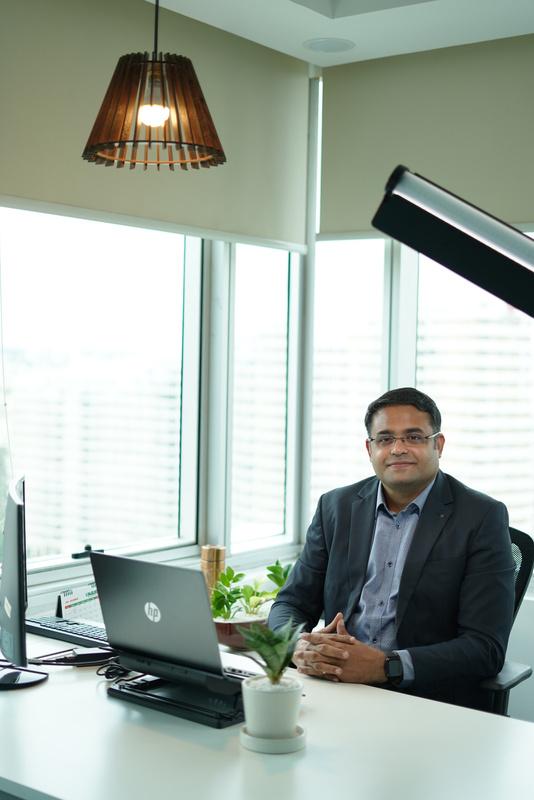


Brijesh Prajapati
ManagingDirectorAPAC INVTSolar TechnologyCoLtd
Bharat Singh
Head-Sales& Marketing(India) NingboDeye InverterTechnology Co Ltd

Bo Dong
HeadofAPACSales& Marketing SOFAR
Udit Kumar
SalesHead SolarLabs
Pratik Joshi
Asst General Manager NovasysGreenergy Pvt Ltd
Bharat Gupta
SolarHead-BDand InternationalSales JaksonLtd
Sai Charan Kuppili
TechnicalDirector-South Asia&CentralAsia JinkoSolarCo Ltd
PunitMRajnikant ehta Pushpendra Samadhiya
Director,PIXON GreenEnergyPvt Ltd
NationalHead-Sales SaatvikGreenEnergyPvt Ltd
Jerry Cui
AsiaPacificDivision MarketDirector SolaXPowerNetwork Technology(Zhejiang)Co Ltd
Nataraja MS
TechnicalHead-APAC SungrowIndiaPvt Ltd
Mirunalini Chellappan
Idrish Khan


ChiefTechnical Officer–India Solis
Naveen Kumar

Honey Raza
DirectorSales (India) Solis
Shivang Gupta MarketingManagerIndia andSouthEastAsia Solis



Acharan Chandel Director, SpinkraftVentures PvtLtd
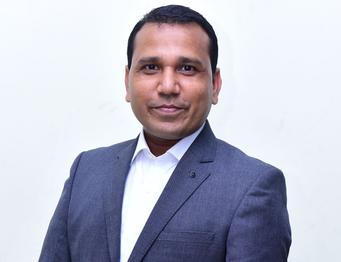
Praveen Kumar Jha
Officer SuryaLogixPvtLtd
Director-HeadofPV ModuleDivision SwelectEnergySystems Ltd
CTO-India,Asia, MiddleEast&Africa TBEA
AGM-Sales&Business Development VikramSolarlimited
Limited
WattpowerSystems PvtLtd
SolarQuarter is proud to unveil its exclusive list of top leaders of the Indian solar industry who are under the age of 40 The SolarQuarter 40 under 40 program is a prestigious initiative that seeks to highlight the work of young leaders who are driving innovation and change in the Indian solar industry. The program recognizes individuals who have demonstrated exceptional leadership skills, technical expertise, and a commitment to sustainability and renewable energy The SolarQuarter 40 under 40 list is a testament to the fact that young leaders are making a significant impact in the Indian solar industry and are playing a crucial role in shaping its future."




Head-O&MSolar AcmeCleantech SolutionsPvtLtd
Manager-Energy, Sustainability&Policy AdaniDataCenter

ManagingDirector AddwattPower SolutionsPvtLtd
HeadofBusiness Devlopmentand PublicAffairs Alfanar



SeniorDirectorInvestment AmpEnergyIndia


VP&Head-Asset Management AmplusSolar

AssociateVice President-HomeScape byAmplus AmplusSolar
Rohit Chandak




CFO
AyanaRenewable Power
AssociateVicePresident (AVP)BerkeleyEnergy CommercialandIndustrial Solutions(BECIS)
ManagingDirector ChirayuPowerPvtLtd
GeneralCounsel CleantechSolar
RenewablesBusiness Head ClimateConnectDigital













AssistantGeneralManager (SalesandRegulatory) ContinuumGreenEnergy IndiaPvt Ltd
ManagingDirector AsunSolarPowerPvt Ltd



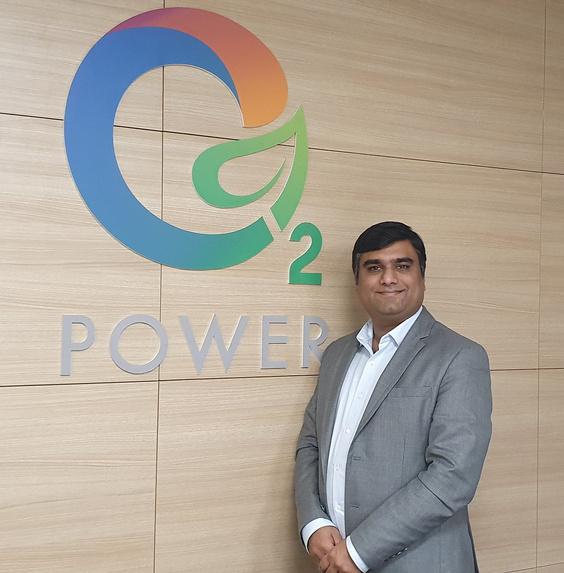


DeputyCountry Representative, EDFRenouvelables
Head–Performance Management FourthPartnerEnergy
( s) FourthPartnerEnergy
Gensol
CEO&Director SunsenzbyMoopens EnergySolutions
Finance&Asset Management MahindraSustenPvt Ltd

MahindraSuste Pvt Ltd



hiefBusiness Officer uniperGreen Energy
SeniorConsultant DNV r ianaPower
President-Asia MiddleEast&Pacific EcoppiaScientific

Sathya

Head–Operations–South (DomesticRenewables BusinessUnit), Larsen&ToubroLtd

In 2022, with support of Deye's partners we engaged with potential clients and achieved 443 90 Mw Hybrid Inverters are the best performing products and Deye is the world's leading supplier of energy storage solutions Deye products are one among the best and most preferred one because a complete energy storage solution for roof top is available which are user friendly, versatile, intelligent and safe
How has the business been for Deye last year? What are the plans for scaling up this year?
In 2022, Deye gained good respect and confidence from clients because of the quality products
With support of Deye's partners we engaged with potential clients and achieved 443 90 Mw
To improve our sales in the Indian market, we are increasing the resources both in sales & service to engage with more prospects and to work on bigger projects.
Apart from that, we have 6 service centers fully operational to rectify the problems and to reduce the turnaround time
Head - Sales & Marketing (India), Ningbo Deye Inverter Technology Co , Ltd

Which are your best-performing products and what are their USPs?
Hybrid Inverters are the best performing products and Deye is the world's leading supplier of energy storage solutions
6 time period for battery charging & discharging Max charging/discharging current DC couple and AC couple to retrofit existing solar system Support storing energy from diesel generators without any additional synchronizer Maximum 16pcs parallel for on-grid and off-grid operation IP65 protection degree In 3 phase systems, 100% unbalanced output each phase; Max output up to 50% rated power. transformer isolation design, hence increased efficiency
What is your outlook on the solar inverter market for this year?
Solar in India is really unique compared to other countries. Till date India was a price sensitive market and now it is transiting towards a quality conscious market
2023 & 2024 will be the best time for solar in India to fulfill the demand & completion of the projects because 2022 was slow due to non availability of Chinese modules which are used widely in C&I segments Due to the introduction of new technology of inverters (Hybrid inverters) & battery, supporting battery energy storage, the cost of the project goes high, so pricing of the modules which is high at the moment compared to other BOS components, has to come down to justify the project cost
India is moving towards solar projects with battery storage Deye products are one among the best and most preferred one because a complete energy storage solution for roof top is available which are user friendly, versatile, intelligent and safe
How do you differentiate your offerings from competitors?
CY 2022 - Q4 (October 2022 to December 2022) Materials shipped from China to India 289 20Mw
Are
In 2022 Deye introduced innovative products in India which are in high demand and widely accepted by the clients because of confidence in Deye's quality and seeing Deye's worldwide growth The game changer hybrid inverter up to 50Kw in high voltage along with 3 series of LFP batteries in low voltage and high voltage segment are planned in this year.
In 2023, Deye is planning to launch revolutionary bigger rating high voltage inverters for roof top segment along with All-in-one EV Charger for charging & changing the future world of EV's
Clients seeing the growth of Deye in the Indian market and having confidence in Deye's quality products came forward for procuring & installation of inverters in their prestigious projects
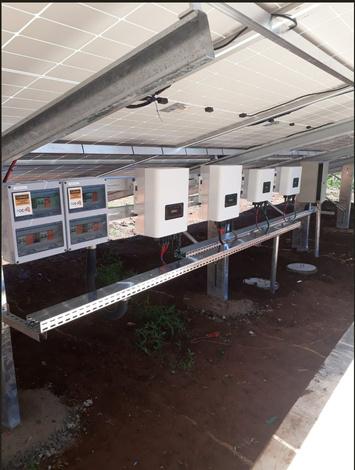
Deye's R&D team is working on space & cost optimization and for technically user friendly products with new technology into the energy storage
Apart from that, we have 6 service centers fully operational to rectify the problems and to reduce the turnaround time.

"In 2023, Deye is planning to launch revolutionary bigger rating high voltage inverters for roof top segment along with All-in-one EV Charger for charging & changing the future world of EV's."
Clients seeing the growth of Deye in the Indian market and having confidence in Deye's quality products came forward for procuring & installation of inverters in their prestigious projects. "
RW-M6.1 lithium iron phosphate battery is specially designed for LV hybrid inverter system researched by DEYE It was used to supply stable and reliable power for multiple types of equipment and systems
RW-M6 1 lithium iron phosphate battery measures 475*720*145mm, and it has energy of 6 14kWh, supporting up to Max 32 units can be clustered in parallel (196kWh) It’s available to be installed by Wall-Mounted and Floor-Mounted
Deye also unveiled the SE-G5 1 Pro low-voltage Lithium Battery, equipped with intelligent BMS With single module nominal voltage of 51 2V, single module capacity of 100Ah The SE-G5 1 Pro features 19-inch standard embedded design, making it can be expanded easily It weights 44kg single module, supporting Max 64 units connected in parallel
The low-voltage battery is a backup energy resource for household electricity usage application As it is supporting to back up larger home appliances like air conditioners, dryers, boilers and pool pumps The large-capacity storage is designed to provide homeowners an opportunity to maximize solar energy self-consumption reducing power input from the grid and increasing the extra power output generated from the battery and PV solar



Deye has also launched the BOS-G series high-voltage Lithium Battery, with single module nominal voltage of 51 2V,single module energy of 5 12kWh,single module capacity of 100Ah The BOS-G series feature 19inch standard embedded design, safety and reliable performance, and the intelligent BMS etc.
The battery has a capacity range from 20 48kWh to 61 44kWh, composed out of 4-12 battery modules, respectively Both these embedded designed modules and plug and play wire connection methods promise flexible installation and maintenance
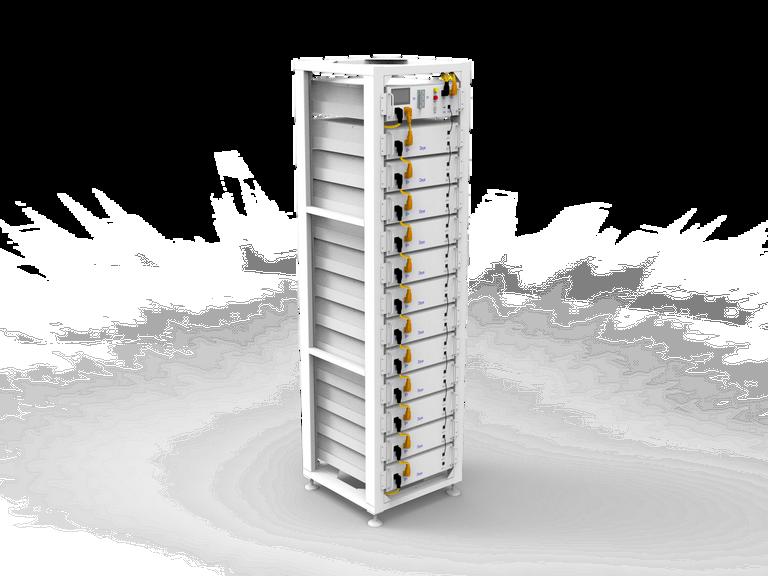
Meanwhile, the BOS-G series is stable and safety for its protection functions including over-discharge & charge, over-current and overtemperature protection The system can manage charge and discharge state and balance current and voltage of each cell automatically

Deye is an industry-leading energy storage solutions provider, committing to research and optimize products in the energy storage segment to meeting residential and C&I application demands


AeroTOOL is the company’s visualisation and planning software that supports the client in developing the layouts and computing the wind loading forces on the system
Aerocompact has provided solutions to multiple metal sheet projects in the last 2 years where its unique solution of PS/PL has supported clients in inclining the panels towards South for the North, East or West roofs achieving 7 10 depending on site locations
With the availability of the revolutionary S system and increase in retail demand, Aerocompact is focussed on strengthening its team for sales, pre-sales technical support and supply “Made in India” products to provide faster deliveries and smoother service
Please highlight the latest major developments at Aerocompact
Aerocompact is pioneer in developing innovative solutions for mounting structure taking due consideration of stability and longevity of structure for the period of 25 years of system In India, it is focussed on providing engineering & manufacturing support globally as well as catering to the Indian markets with its unique portfolio for metal as well as flat roof products The export in Y2022 has increased by 70% since Y2021 and further giving more thrust to expand in Y2023.
The COMPACTMETAL system developed around 2019 with patented technology has already seen its success globally For flat roofs, the company has introduced its SN2 product in Europe, suited for higher class of panels and the S/S+ systems in India suited for non-penetrative requirements

AeroTOOL is the company’s visualisation and planning software that supports the client in developing the layouts and computing the wind loading forces on the system The structural analysis outcome is the foundation of our warranties which we offer to our clients An Engineering hub is setup in India to work on Aerotool and cater the clients globally for which are on the lookout for fresh and experienced engineers in India
COMPACTFLAT S System is one of the unique and flagship system of Aerocompact The aerodynamic design has excellent structural properties and requires significantly less ballasts than other systems on the market The system is wind tunnel tested, UL, CE & TUV certified for its technology and strength and can withstand wind speed up to 250kmph
S system is a ballasted racking solution with non-penetrative philosophy to ensure the safety and reliability of the existing waterproofing of the roof The ballast can be made of concrete to create the counter weight to resist the uplift forces of wind Ballast Trays can be used to keep the ballast blocks depending on the requirement.
The average installation time is approximately 5minutes for 1kWp of system The number of components developed are minimal, light weight and ensures the ease of stocking and installation.
The product range comes in various segments of S10, S15 & S10+ The S10 and S15 provides fixed inclination of 10 and 15 true South respectively to fulfil the optimum angle requirement of India S10 & S15 systems come with wind deflectors to deflect the pressure created by wind from one panel row to the next one
S10+ provides East-West solution with 10 inclination for the roofs oriented other than true South S10+ can be used to increase the capacity over the roofs Estimated increase in the capacity ranges between 10 15% thus increasing the generation numbers
What have been the major projects for you recently? Are any new projects lined up?

Aerocompact has provided solutions to multiple metal sheet projects in the last 2 years where its unique solution of PS/PL has supported clients in inclining the panels towards South for the North, East or West roofs achieving 7 10 depending on site locations
The product has been suited for clients looking to increase the yield of the panels without compromising on the strength of the system and has been supplied and accepted all across India
Aerocompact, as a part of its global programme, is providing solutions for one of the major warehousing client for nearly 50 facilities located globally with the first of these installations being in India.
What can we expect from Aerocompact this year?
Aerocompact’s engineering software Aerotool and product standardisation is the key for the growing retail segment in India The company has recently engaged distributors like Festa Solar and Evervolt to cater to across regions in the retail segment With the help of such partners, Aerocompact aims to minimise hassles for installers for BoS and create a one stop solution
With the availability of the revolutionary S system and increase in retail demand, Aerocompact is focussed on strengthening its team for sales, pre-sales technical support and supply “Made in India” products to provide faster deliveries and smoother service

"Aerocompact is focussed on providing engineering & manufacturing support globally as well as catering to the Indian markets with its unique portfolio for metal as well as flat roof products. "
Kindly brief our readers about the reliable COMPACTFLAT S system which has revolutionized the world of PV substructures and Could you give us a few insights into S10 and S10+ products that are to be launched in India?
We, at Navitas Solar, want to clock a turnover of 250 Cr in FY 23. Our modules are ideal for large-scale and rooftop installations as they provide optimum generation and efficiency We are amongst the few module manufacturing companies in India having backward and forward integration.


How has the year 2023 begun for Navitas? What is the roadmap ahead?
New Year brought new opportunities for us We are setting up a new manufacturing facility of 1 2 GW p a We have already purchased land for the new expansion We, at Navitas Solar, want to clock a turnover of 250 Cr in FY 23 We are establishing working opportunities in countries like the USA, South Africa, and Europe


How has the customer feedback been for your modules?
We have completed a decade in the solar industry. Until now, in the Indian module market, we have not received any recall of our modules Our modules are giving supreme performance than other competitors Our modules are ideal for large-scale and rooftop installations as they provide optimum generation and efficiency. We are supplying pan India successfully because of our good service and installations All the customers from pan India are satisfied with our service We believe to provide the best quality modules, as we truly believe, “Quality is remembered long after the price is forgotten”
What technology upgrades are you planning this year?
We have plans to set up a new manufacturing plant of 1 2 GW p a The manufacturing line will manufacture Bonito Series-Mono PERC Half Cut modules Bonito Max modules will be available in 10 BB in 182 mm cell size (M10) in 144 & 156 cells producing 530 to 600 Watts The new line will be also able to manufacture 210 mm cell size(G12) modules In addition, the new line will be also capable of handling TOPCon & HJT technologies
How do you differentiate your offerings from competitors?
We are amongst the few module manufacturing companies in India having backward and forward integration Backward integration is provided by our subsidiary company called Navitas Alpha Renewables Pvt Ltd (NARPL), which manufactures EVA Sheets with a production capacity of 1 8 GW p.a. and it is in the top 5 EVA manufacturers in India Forward integration is provided by project execution & full-fledged EPC services for residential, commercial, and industrial clients on rooftops as well as open-access solar parks Having forward and backward integration, we have control over supply chains. We also have in-house labs to maintain the quality of modules due to which we’re benefitted a lot
We have launched Bonito Series-Mono PERC Half Cut modules Bonito Pro modules are available in 9 BB in 166 mm cell size (M6) in 144 cells & 156 cells producing 435 to 500 Watts. Bonito Max modules are available in 10 BB in 182 mm cell size (M10) in 144 & 156 cells and producing 530 to 600 Watts The modules are ideal for large-scale, commercial, and residential installations They offer High power, Better shading tolerance Lower LCOE & system cost and Excellent temperature performance
"We are supplying pan India successfully because of our good service and installations. All the customers from pan India are satisfied with our service. We believe to provide the best quality modules, as we truly believe, “Quality is remembered long after the price is forgotten."
Kindly highlight the top features of you best-selling products.
We are amongst the few module manufacturing companies in India having backward and forward integration."


Therefore, the market is evolving at a good pace, and after the extension of ALMM by the Government of India, we believe that the market will see a higher number of installations this financial year, 2023-24
We already have our office in Sri Lanka, and from year 2024, we will also be starting our operations in South Eastern Countries
We support all EPC companies, developers, and MSMEs, and welcome enquiries of all sizes, from large quantity enquiries to smaller ones Many MSMEs hesitate to directly approach distributors, resulting in them moving in circles and visiting different places to procure materials
How has the year 2023 begun for Power n Sun? Any major developments?
Yes, the year 2023 started on a very positive note
We began the year by shifting to our new office in January and starting our full-fledged operations across PAN India. We now have a team in the Eastern Region and a warehouse in Kolkata, WB, to provide services to the local EPC Companies, Developers, and Traders working in West Bengal, Odisha, Bihar, Jharkhand & North Eastern States This will help them get complete solar components including BOS under one roof locally, and reduce project turnaround time and project cost, ultimately increasing their margins Also, the ALMM has been extended by the Government of India through their notification on March 10, 2023, which will also help Developers & EPC Companies work on new projects and ultimately achieve the targets set by the GOI
under one roof Presently, we have Solar PV Modules of JA & LONGI and String Inverters and Hybrid Inverters of SOFAR and BOS Material which includes Connectors, Cables, AC & DC Combiner boxes, PV Mounting Structures and its accessories Solar Charge Controllers Weather Stations & Solar Pumping Controllers
We always support residential, industrial, and commercial installations and keep adding new products as per the market needs to offer them to our customers By doing so, we keep on connecting with new trends and products in the market and keep them available to the companies Recently we have added String Inverters of SINENG (Inverter Range of 50kW, 120kW, 250kW & 275kW), INVT (Inverter ranging from 2kW to 110kW) & SOLPLANET (Formerly known as SMA-Chinese, Inverter Ranging from 5kW to 110kW) and Hybrid Inverters of INVT & SOLPLANET We also are supporting the EV revolution taking place in India and for this we have EV Chargers of INVT & SOLPLANET brands with us
How do you see India's distribution market evolving in the near future?
India’s market is definitely increasing year by year. Recently, India has planned to install 500 GW (Gigawatt) of renewable energy capacity by 2030 which will involve an investment of INR

What are some milestones you are planning to achieve this year?
This year, we are focusing on growing our customer base by at least 10x from the previous year, only for our Indian operations Additionally, we are also starting our operations in South Asian Countries such as Bangladesh, Nepal, and Bhutan We already have our office in Sri Lanka, and from year 2024, we will also be starting our operations in South Eastern Countries
Would you like to convey any message to our readers about where to get more information about your offerings and services?
I would like to convey to your readers through Solar Quarter that this is the right opportunity for them to cater to the market and contribute to achieving the targets set by the GOI We support all EPC companies, developers, and MSMEs and welcome enquiries of all sizes from large quantity enquiries to smaller ones Many MSMEs hesitate to directly approach distributors, resulting in them moving in circles and visiting different places to procure materials. This can cause their margins to h i k d hi d l i f j
What are some products that you offer to customers? Any plan of adding a new product to your offering?
"India has planned to install 500 GW (Gigawatt) of renewable energy capacity by 2030, which will involve an investment of INR 2.44 trillion, out of which only a few have been achieved so far."
As mentioned earlier, we are the one-stop solar solutions provider and one of the largest distributors of many Tier-I brands We offer a complete range of products to our customers
As mentioned earlier, we are the one-stop solar solutions provider and one of the largest distributors of many Tier-I brands. We offer a complete range of products to our customers, under one roof."

Due to the region's abundant sunshine and favourable policies, solar PV is a rapidly growing sector in South India Andhra Pradesh, Karnataka, Kerala, Tamil Nadu, and Telangana are the states that make up South India.
The Telangana government announced a Solar Energy Policy in 2015, with the goal of encouraging the development of solar PV projects in the state The policy offers solar PV developers a number of incentives and concessions, including exemption from electricity duty, reduced wheeling charges, and reduced banking and transmission fees Telangana has established several solar parks Overall, Telangana's solar PV development has been impressive, and the state is well on its way to meeting its ambitious solar energy targets
Tamil Nadu, a southern Indian state, has been a pioneer in solar PV development in India, with a total installed solar PV capacity of 6.49 GW. The state has set an aggressive target of 9 GW of solar energy capacity by 2023 The state has put in place a number of policies and incentives to promote the growth of the solar PV industry
The Tamil Nadu government announced a Solar Energy Policy in 2019 with the goal of encouraging the development of solar PV projects in the state. The policy offers solar PV developers a number of incentives and concessions, including exemption from electricity duty, reduced wheeling charges, and reduced banking and transmission fees
Tamil Nadu has developed several solar parks, including the state's largest solar park, the 648 MW Adani Solar Park in Kamuthi Overall, solar PV development in Tamil Nadu has been impressive, and the state is well on its way to meeting its ambitious solar energy targets The state's commitment to renewable energy has also resulted in the creation of several job opportunities, contributing to the state's overall economic development
Kerala, a state in southern India, has been slower in developing solar PV than some of the other states in the region However, the state has begun to make some progress in this direction in recent years Kerala has an installed solar capacity of around 707 MW as of January 2023, which is relatively small when compared to some of the other states in the country. However, the state set a goal of 1,000 MW of solar energy capacity by 2022 but failed to meet it
South India has a total installed solar PV capacity of more than 24 4 GW as of January 2023, making it one of the country's fastest-growing solar energy regions
Karnataka is the country's southernmost state, ranking first However, Karnataka is one of the fastest-growing solar energy states in the country, with an ambitious target of achieving 20 GW of solar energy capacity by 2025, which if met would make it India's top solar PV state with installed capacity
Telangana, a southern Indian state, has made significant advances in solar PV development in recent years The state government has established an aggressive target for solar energy capacity
Telangana has over 4 6 GW of installed solar capacity as of January 2023, making it one of the country's leading solar states In addition, the state has implemented a number of policies and incentives to promote the growth of the solar industry
While Kerala's solar PV development is still in its early stages, the state is making efforts to promote solar industry growth and increase its share of renewable energy
Andhra Pradesh, a state in southern India, has been a major player in the country's solar PV development The state has set an ambitious goal of achieving 18 GW of renewable energy capacity by 2022, with solar energy accounting for 10 GW of that total

Andhra Pradesh has over 4 52 GW of utility-scale installed solar PV capacity as of January 2023, making it one of the leading solar states in India Andhra Pradesh has also established several solar parks, including the Ananthapuramu Solar Park, the state's largest
Overall, solar PV development in Andhra Pradesh has been impressive, and the state is well on its way to meeting its ambitious solar energy targets The state's commitment to renewable energy has also resulted in the creation of several job opportunities, contributing to the state's overall economic development
Our cumulative installation in India has crossed 1 GW+ and we continue to work towards scaling greater heights with strong focus on the timely project execution.
We have dedicated OA team who ensures availability of suitable land, connectivity permission and getting PPAs with the consumers having good credit rating It gives me immense pleasure to share that we continue to deliver profitable revenue and our order backlog maintained at a healthy level
How has the past year been for Addwatt? Any major developments?
The past year has been phenomenal for Addwatt, It gives me immense pleasure to share that we continue to deliver profitable revenue and our order backlog maintained at a healthy level Our cumulative installation in India has crossed 1 GW+ and we continue to work towards scaling greater heights with strong focus on the timely project execution
There are few major development as well, like we bagged prestigious international order worth for about 10Mw solar PV project in Mauritius. We are keen to explore more opportunities in Africa We have also launched solar parks in for C&I consumers in the states of Karnataka, UP, Maharashtra & Chhattisgarh The same are scheduled to be commissioned by Mar 2024 We are targeting the annual revenue of Rs. 500cr by FY 2025


What is your view on the present solar market in India? Are we on the right track to meet RE goals?
India has made significant strides in the solar energy sector in recent years, becoming one of the world's largest solar markets In addition, India has set an ambitious target of achieving 500 GW of renewable energy capacity by 2030, including 280 GW of solar energy. This is in line with the country's commitment to the Paris Agreement and its goal of reducing carbon emissions and increasing the share of renewable energy in its energy mix
India is making significant progress in the solar energy sector, and its efforts to meet its renewable energy goals is definitely on track However, the country still faces challenges such as policy changes in ALMM, land acquisition issues grid integration and the availability of financing, and there is room for improvement in terms of policy and regulatory frameworks to support the growth of the sector
Despite these challenges, India is on the right track to meet its RE targets, and the government has implemented several initiatives to accelerate the growth of the sector
How is Addwatt tapping opportunities in the Open Access power market? What projects are lined up?
The OA market growth in India depends on policies and the regulatory environment at both the central and state level Last year saw some positive developments in terms of regulations even as a few hurdles persist
With the OA market steadily maturing in India and the increasing awareness of C&I consumers about green OA, we expect the market to grow further The renewable energy OA segment will likely be a major contributor to reaching the national clean energy target of 450 GW by 2030
We have dedicated OA team who ensures availability of suitable land, connectivity permission and getting PPAs with the consumers having good credit rating
What do you think sets your company apart from other solar EPC companies, and what unique value do you offer to your customers?
We are one of the few fully integrated solar companies currently operating in the market with our own in-house construction teams with rich experience of working across geographies both within & outside India
How do you ensure that your company stays up-to-date with the latest technological developments and industry trends in the solar energy sector?
We believe a company is as good as its people In Addwatt, we promote a culture of learning within the organization which encourages everyone to learn experiment & try out their hands in latest technologies in the solar energy sector As a result, we are always ahead in adopting the latest technologies & exploring new markets

"We are one of the few fully integrated solar companies currently operating in the market with our own in-house construction teams with rich experience of working across geographies both within & outside India."
The renewable energy OA segment will likely be a major contributor to reaching the national clean energy target of 450 GW by 2030."
Our cumulative installation in India has crossed 1 GW+ and we continue to work towards scaling greater heights with strong focus on the timely project execution."


Pumped storage combined with solar power can provide a dependable and efficient way to store excess solar energy generated during the day and use it when demand is high or the sun is not shining. This technology has enormous potential in South India, where solar energy is abundant and there is a growing demand for reliable and clean energy sources
Excess solar energy is used to pump water from a lower reservoir to a higher reservoir in a pumped storage system When energy is required, the water is returned to the lower reservoir where turbines generate electricity This process can be repeated as many times as necessary to store and release energy In other words, combining solar power and pumped hydro storage entails using solar panels during the day to generate electricity and then using the excess energy to pump water from a lower reservoir to a higher reservoir.
South India has several sites suitable for pumped storage projects, including hilly areas with high solar energy potential and abundant water resources The Western Ghats, a mountain range that runs along India's western coast, is one such region with the potential for pumped hydro storage projects. There are several large dams and reservoirs in the region that could be used for pumped storage projects Given its abundance of solar energy and the availability of hilly areas with water resources suitable for pumped hydro storage, the region has significant potential for this technology
Furthermore, several large-scale solar power projects are already underway in South India, including the Kurnool Ultra Mega Solar Park in Andhra Pradesh and the Kamuthi Solar Power Project in Tamil Nadu These projects could be combined with pumped storage systems to provide the region with reliable and clean energy

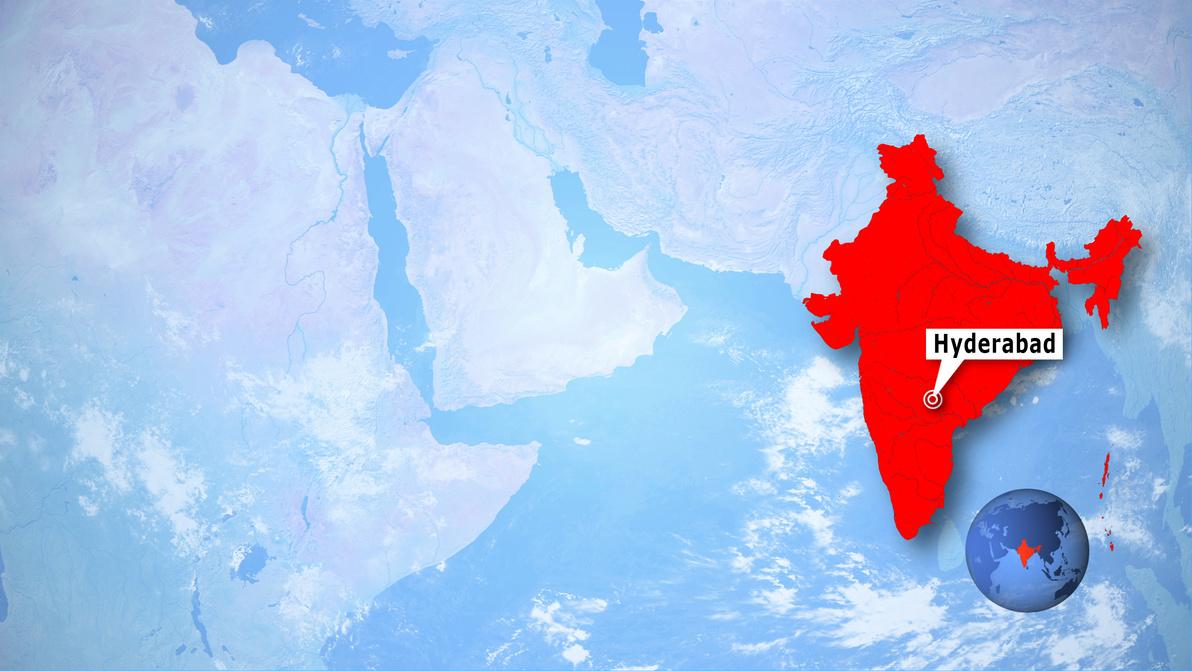
Overall, pumped storage combined with solar power has the potential to transform the South Indian energy landscape by providing clean and reliable energy to meet the region's growing energy demands
Solar power combined with pumped hydro storage has the potential to help meet 24-hour power needs Even during peak demand or when the sun is not shining, this combination can provide dependable and costeffective electricity
Furthermore, combining solar power and pumped hydro storage can help address some of the intermittency and variability issues associated with solar power Electricity can be supplied during periods of low or no solar generation by storing excess solar energy during peak generation periods, providing a more consistent and reliable source of power.
Solar energy generation is affected by weather and sunlight availability, which varies throughout the day and between seasons Hydro pump storage can provide electricity during periods of low or no solar generation by storing excess solar energy during peak generation periods, providing a more consistent and reliable source of power
This combination can also contribute to net-zero emissions by reducing reliance on fossil fuels and increasing access to clean, renewable energy It may also reduce the need for backup power sources, which are typically run on fossil fuels and emit greenhouse gases.
The Union Ministry of Power recently released draught guidelines on pumped hydro storage projects, which were announced in the recent Union Budget, with the goal of generating over 18 GW of electricity to stabilise grids and meet peaking power demand by 2032
Greenko, an India-based independent power producer (IPP), is constructing the single-site project in Andhra Pradesh's Kurnool District For a total of 5,230 MW, it includes 3 GW of solar PV, 550 MW of wind power generation, and 1,680MW/10,800MWh of pumped hydro energy storage (PHES)
Hydro pump storage combined with solar power can provide a solution for net-zero emissions and round-the-clock power This combination can provide a reliable and sustainable source of energy, reduce reliance on fossil fuels, and address the challenges of solar power's intermittency and variability Finally, the combination of solar power and pumped hydro storage has the potential to help meet South India's round-the-clock power needs by providing a reliable, cost-effective, and sustainable source of electricity to meet the region's growing energy needs
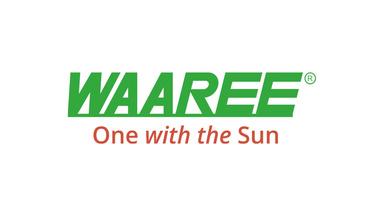


Millions of solar PV modules have been installed worldwide over the last four decades to meet energy demand and to maximise their potential as a sustainable energy source More than 90% of solar panels that have reached the end of their useful lives are being disposed of in landfills, which is dangerous for the environment
The recycling of PV panels involves five main steps: the separation of the junction box cable and aluminium frame; crushing and shredding of the panels; thermal treatment; automatic separation; and chemical treatment After shredding process, high temperature treatment is carried out to separate silicon cells from encapsulant layers and backsheet After that, an automatic separation procedure results in the recovery of silicon, metals, and plastic The final step involves chemically treating silicon cells to recover silicon for use in creating new solar cells
The size of the global PV module recycling market was estimated at USD 127 7 million in 2019 According to recent market research data, a CAGR of 37 0% growth is anticipated in the coming years starting at the end of 2022 With China being the largest market, the Asia-Pacific region is expected to see the fastest growth in the PV panel recycling market Asia-Pacific nations like China and India now have the most installed PV capacity
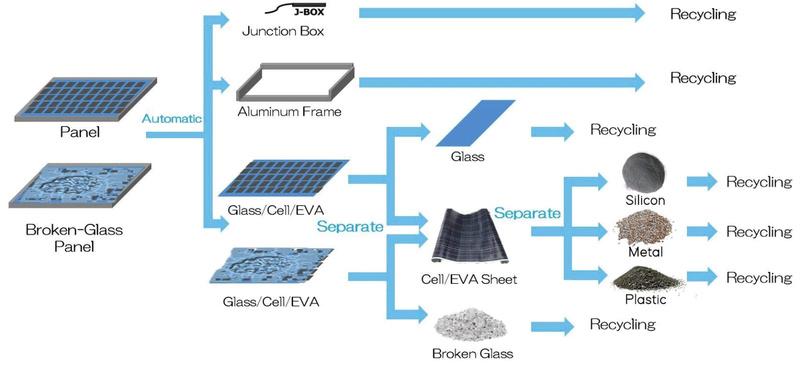
(Source: Mordor Intelligence)
Based on the process, the solar panel recycling market is split into three categories: thermal recycling, mechanical recycling, and laser recycling. Between 2022 and 2030, it is expected that the mechanical process would expand quickly, accounting for more than 50% of global sales
2022, and it is expected to grow at a significant CAGR through the year 2030. The fastest growing sector in the Asia Pacific area will be the solar module recycling market in China and India
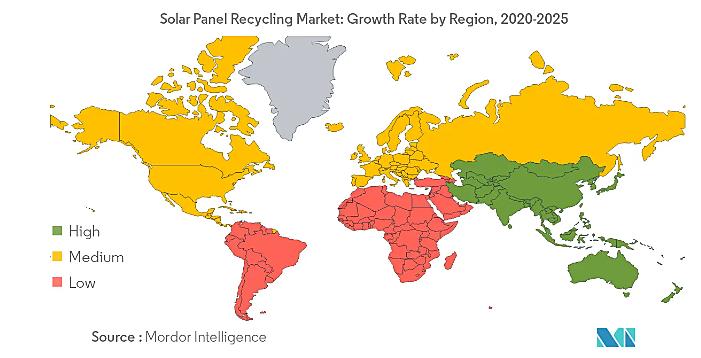
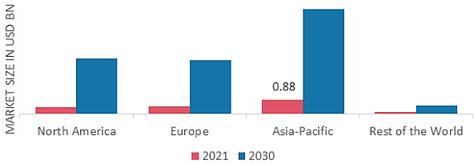
Rise in use of PV panels in solar installations globally
Landfill concern about spaces & stringent regulatory norms associated with solar panels disposal.
FIGURE 3: SOLAR PANEL RECYCLING MARKET BY PROCESS (USD MILLION)
(Source: Secondary Research, Primary Research, MRFR Database and Analyst Review)
Nevertheless, the laser process categories is expected to grow at fastest rate in terms of revenue and volume over the forecasted period. Although the thermal approach has limited set of applications, it is expected to increase over time due to decrease in silicon concentration in solar modules

Recovery of metals including Cu, Ag, Al, Pb, and silicon, as well as reusability options, are being explored in the face of a metals and semiconductor material shortage and rising prices
Glass recovery and reuse in panel manufacturing and other applications
PV Cycle (European body regulating compliance and waste management for PV panels and battery products and providing recycling certification)
Solar Cycle, CA, USA
Dynamic lifecycle innovations, Wisconsin, USA
Canadian solar Inc , Canada
Morgen industries Inc , NJ, USA

Reclaim PV recycling Pty Ltd , Australia
Silicontel Ltd , Israel
ENVARIS Gmbh, Berlin, Germany
FIGURE
(Source: Secondary Research, Primary Research, MRFR Database and Analyst Review)
The market is divided into four worldwide regions in the report: Europe, North America, specific Asia, and the rest of the world The market for recycling modules in the Asia-Pacific region was estimated to be worth USD 0 88 billion in
First solar, Arizona, USA
Total green recycling, Australia
Recycle solar technologies Ltd , UK
Suny Group, China
Vital Materials Co Ltd , Hong Kong
The company is equipped with a state-of-the-art turnkey facility of 1 GW to manufacture high quality Mono-Crystalline, Poly-Crystalline and MultiBusbar modules with European technology. The company also houses a cleanroom environment facility to 1GW manufacturing line for EVA films
PIXON is a firm believer in advancing with the market's recent innovations With the addition of introducing Multi-Busbar modules and Topcon, the company is further expanding the production line by 1 GW
The company is also backed with a strong financial background of its parent company – the Marwadi Shares & Finance Limited PIXON is a community of young talents and seasoned professionals who collaborate to carry out creative operations with sustainable innovations The team stays open to new ideas to foster creativity in every aspect
PIXON envisions to globally providing efficient solar energy products and solutions Thus, contributing and enhancing Global Climate Sustainability

Our premium range of solar modules are engineered in India using European technology Our Modules exude excellence through quality & high yield PIXON offers highly efficient modules tested in our in-house PV Module Test Lab which are as follows:-
Mono-Crystalline Perc Modules.
Poly- Crystalline Modules
Poly- Crystalline DCR Modules

Poly- Crystalline Half-Cut Cell Modules
Mono- Crystalline Perc Half-Cut Cell Modules
EVA Films
PIXON has a bandwidth capacity of up to 1 GW, for the manufacturing of EVA films EVA Films are conformable and flexible for ease of lamination with excellent UV and damp-heat stability Our EVA films are PID-resistant with lower shrinkage and provide excellent durability and transparency
PIXON EVA sheets goes through rigorous quality testing and verification
EVA Films are divided into two sub-categories which are as follows:-

PIX FAST CURE
With higher productivity and lower shrinkages, the PIXON EVA films ensure that the solar cells are protected and solar modules provide better performance, even while facing utmost harsh weather conditions
Available Variants
Top Layer-FC
Bottom Layer-FC
PIX ULTRA FAST CURE
PIXON's PID-free EVA films are suitable for all types of solar cells and back sheets with a cycling time less than 10 minutes that speeds up your module production to provide increased yield
Top Layer- UFC
Bottom Layer -UFC
POE ( Polyolefin Elastomer)
PIXON provides turnkey Engineering, Procurement & Construction Services for the installation of solar projects We have an in-house, well-trained, and dedicated EPC team for the execution of solar projects – from small solar projects to large-scale utility-based projects
Ground Mounted Solar Solutions
Rooftop Solar Solutions

Floating Solar Solutions


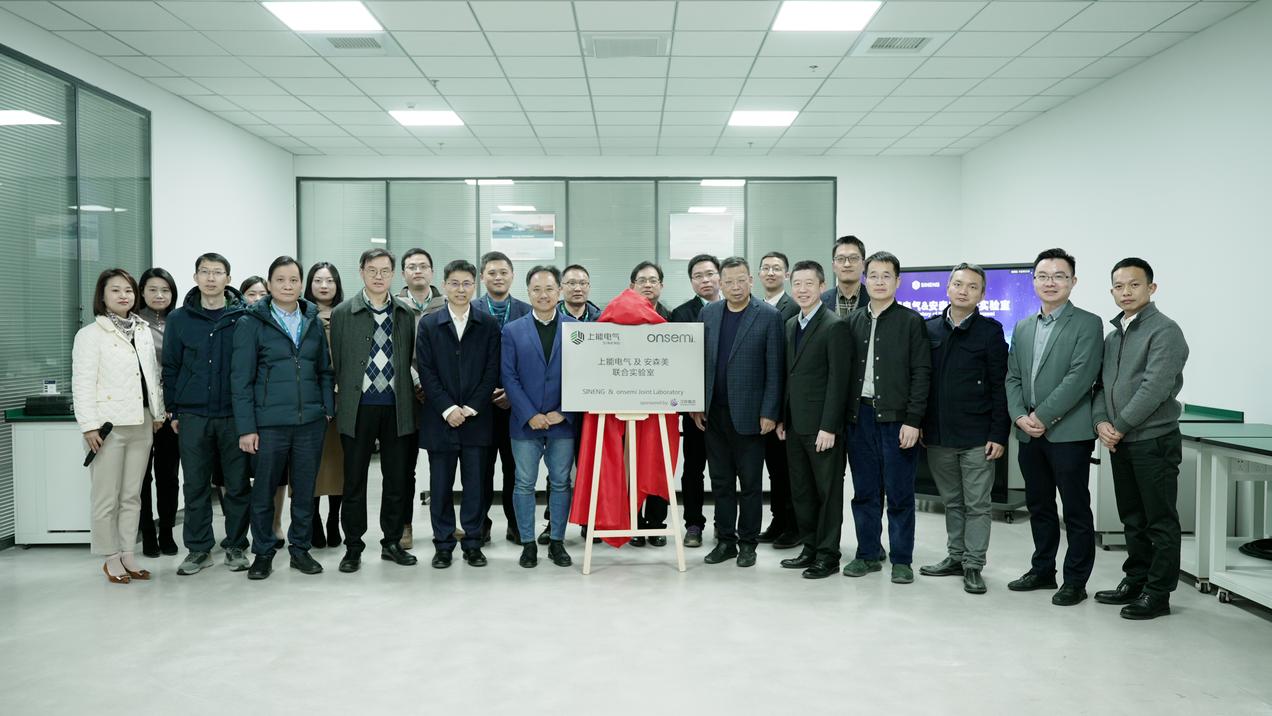

Amid feverish anticipation, the joint laboratory, which was set up by Sineng Electric and onsemi, was inaugurated, with a view to pursue tremendous opportunities for the renewable energy industry to flourish The grand opening ceremony was witnessed by Qiang Wu Chairman of Sineng Electric, Jianfei Li, Vice President & CTO of Sineng Electric, David Chow, Senior VP (Asia Pacific) of onsemi, Roy Chia, Vice President of Sales of onsemi China, and other leaders
Deploying onsemi’s best-in-class product line-up, R&D engineers from Sineng attempt at bringing new upgrades in the energy efficiency, product compatibility, and safety design of inverter applications Thus, the process to verify IGBT’s adaptability to PV inverters, including the evaluation of IGBT transistors SiC diodes SiC MOSFETs and IGBT modules becomes increasingly indispensable With the support of the lab, an industry-level evaluation system will be built to test the semiconductor’s features, including temperature rise, voltage stress, thermal resistance, temperature adaptation, and lifetime Through the partnership, we seek to advance in renewables and build a base for applications in various scenarios
As a global leader in intelligent power and sensing technologies, onsemi is one of Sineng’s most trusted allies. Chairman of Sineng Electric Qiang Wu claimed that “establishing a joint lab is not only a sign that we attach supreme importance to the relations with onsemi, but also a signal that we have forged ahead in great strides in reshaping the future of energy ”
“This cooperation is filled with expectations and we look forward to starting a brand new chapter with Sineng,” said David Chow, Senior VP (Asia Pacific) of onsemi “By teaming up with Sineng in resource sharing, product innovation exchange of expertise etc. we aim to drive technological development, spur innovations, facilitate the upgrading of the solar industry , and catalyze the energy transition ”
Deploying onsemi’s best-in-class product line-up, R&D engineers from Sineng attempt at bringing new upgrades in the energy efficiency, product compatibility, and safety design of inverter applications. Thus, the process to verify IGBT’s adaptability to PV inverters, including the evaluation of IGBT transistors, SiC diodes, SiC MOSFETs, and IGBT modules becomes increasingly indispensable.
As of December 2022, the nation had 120.85 GW of cumulative installed renewables capacity, according to India’s Ministry of New and Renewable Energy (MNRE) Solar energy accounts for around 52% of the overall renewables mix, followed by wind energy at 35%, bio-power at 9%, and small hydro at 4%
Aerocompact India Pvt Ltd is an extended arm of Aerocompact Group specialised in the supply of module mounting structure for solar rooftop Headquartered in Austria, Aerocompact is present in over 40 countries across Europe, Americas and Asia and continues to stand by its motto of providing intelligent racking solutions to enable secure solar installations
The aluminium based racking products have been developed and patented to meet the specific market requirements of each geographical locations over the world The products are UL certified and designed to withstand severe wind and snow loads and has been tested by undergoing wind tunnel testing Our aerodynamically optimized racking give security and mechanical stability require for projects.
Our AEROTOOL project software supports in solar PV system design It is fast, easy and carries detailed analysis of racking system with inbuilt programmed codes and standards of design Report generated consists of 3D layout, static analysis, bill of materials and other technical details
Aerocompact collaborated with URON Energy, a cleantech engineering and management entity with one of their prestigious projects at Balaji Wafers, Indore The company aims to provide their clients the world’s cleanest green energy electrons on time at affordable budgets
URON Energy partnered with Aerocompact India for the project at this facility with a challenge to propose a non-penetrative solution on an EastWest sloped seam sheet roof and tilt the panels towards south to enhance the generation This increase in tilt also assured enough clearance between the Bifacial panels and the roof, without affecting the loading on the structure.
After proper due diligence and understanding the client requirement and design parameters, Aerocompact supplied its tilting solution (PS/PL) here along with seam clamps suited to the sheet within record time to ensure
Aerocompact collaborated with URON Energy, a cleantech engineering and management entity with one of their prestigious projects at Balaji Wafers, Indore.
quicker installation for URON team The module mounting system and provision for this plant are extremely unique, the material and equipment are adhered to and are certified to ����, ������, ��������, ����, ������, ���������� standards
The plant complies with the Fire, pressure, and hazard-tested mounting systems complying with the ������������ and ������������ standards
URON is the first and only company across India to use P605 which is a 1:1 ratio power optimizer and Longi Hi-MO5 Bifacial Technology for this unique project

As quoted by the promoter of URON Energy, “This is the “Highest Energy Generating Rooftop Solar Project across India” The project is one of the "first & the Largest Solar PV Bifacial Plant" installed on an Industrial Roof & one of the first of its kind in the state of Madhya Pradesh

Aerocompact will continue to grow its stature in the Indian rooftop solar market by providing unique solutions to its partners and consumers. We are launching new product range for RCC/ Flat roof ballasted system comprising of 10 & 15 degrees and E-W solution to cater the C&I and residential segment of Indian market
Mandar Mainde ManagingDirectorAerocompactIndiaPvtLtd


GoodWe provides a solution to generate clean electricity for your own solar-powered home When it comes to residential solutions featuring superior safety and easy installation, GoodWe is the ideal choice for homeowners to going solar Enjoy your unparalleled experience of green energy, optimal solar energy usage, reduced electricity bills and much more.
GoodWe XS is an ultra-small residential solar inverter specifically designed to bring comfort and quiet operation as well as high efficiency to households Its capacity ranges from 0 7 kW to 3 0 kW and its most outstanding characteristic is lightweight which is only 5.8 kg and as well as its extremely compact size equivalent to an A4 paper, that make it particularly easy to carry & install. Remarkably, it offers 130% of DC input oversizing, and it's able to achieve maximum European efficiency of 97 2% for maximum performance Conveniently, the communication options available on this inverter are both LAN and Wi-Fi for smart home integration
Users can enjoy smart energy management with 24-hour load consumption monitoring enabled by GoodWe HomeKit 1000 Thanks to the integrated export power limit, XS Series can adapt to the power limit imposed by the local energy provider Smart solution, smart energy

The GoodWe SDT Series is one of the best options available on the residential & commercial segments thanks to its technical strengths that make it one of the most efficient in the market For enhanced safety, this inverter is able to incorporate AFCI. Its high efficiency (98.3%) and its enhanced oversizing & overloading capabilities represent an outstanding improvement in the industry. Moreover, its plug-in AC connector make operation & maintenance easier
Safety First. With AFCI the inverter is able to detect arc fault failure sending alarms through monitoring systems and breaking the circuit simultaneously GoodWe does not only deliver efficiency, reliability, but security as well
HighPowerGeneration,OptimalConsumption
2nd generation of GoodWe SDT series is downsized by more than 150% However, being compatible with bifacial modules, the competency of this half size successor is considerably improved With 150% DC input oversizing, 110% AC output overloading capability, it drives your inverter to its full capacity by adding extra reflections from the backside of bifacial panels, to increase your power output under low solar radiation conditions
GoodWe DNS series is a perfect match for residential installations thanks to its compact size and light weight Manufactured for durability and longevity under modern industrial standards GoodWe DNS series is IP65 rated so it can be mounted either inside or outside your home With a low start-up voltage of only 80V and the widest MPPT voltage range of 80550 V, these inverters can provide greater options for your household system The GoodWe DNS series is also extremely light, 30% lighter than other inverters
ExportControl
Control the amount of power exported to the grid up to zero output, in compliance with your electricity utility's requirements
EasyInstallation&Maintenance
With its compact size, simplified wiring, and weight 30% lighter than similar products, this inverter is extremely easy to install and maintain to save you from troubles during usage
GoodWe is a world-leading PV inverter and energy storage solutions manufacturer and is listed as a public limited company on the Shanghai Stock Exchange (Stock Code: 688390) With an accumulative delivery of more than two million inverters and installation of 35 GW in more than 100 countries and regions, GoodWe solar inverters have been used in residential and commercial rooftops, industrial and utility scale systems and range from 0.7kW to 250kW. GoodWe has more than 4,000 employees situated in over 20 different countries and is regarded as the Global Top 3 storage inverter supplier by Wood Mackenzie in 2021
CONNECT WITH US: sales@goodwe com | service@goodwe com http://www goodwe com


Our planet is facing a multitude of environmental challenges, including climate change, deforestation, pollution and much more Our founders believed in building something unique and hence ‘Ecofy’ was launched to bridge the financial gap and support India's transition to a more sustainable future
Ecofy is committed to resolving the climate finance gap in India, especially across the retail sector By collaborating with like-minded people and businesses who believe in reducing the overall carbon footprint and restoring balance in the world the one of its kind greenonly NBFC that received its NBFC license from RBI in November 2022 is aiming to build a fully digital greenfield NBFC ecosystem that can create a profound and measurable impact in today’s times
In its entirely retail centric focus, Ecofy will seek to finance only those climate-positive businesses and segments that are aligned with its overarching philosophy Building on the back of multiple strategic partnerships, the company is gearing to finance planet-friendly segments like EV, rooftop solar, and SMEs
Founded by the enterprising duo of Rajashree Nambiar Co-founder & CEO and Govind Sankarnarayanan, Co-founder & COO who command a collective expertise spanning almost 6 decades across finance, Ecofy is revolutionizing the green industry through a three-pronged approach This includes financing sunrise to sunset of EV ownership, Solarizing roofs of residences and small businesses, enabling savings & carving a unique approach to accelerate the growth of SMEs to create a veritable green impact
With the launch of its Digital platform and by providing transaction convenience and easy EMI options, Ecofy is making it easier for individuals and businesses to invest in solar energy. Some of the product features include – Easy application process, quick decisioning, attractive interest rates and an end-to-end digital process


By providing a comprehensive package of support, including financing options, product quality, AMC, and insurance, the company is making it easier and more accessible for individuals and businesses to adopt t h l i lik ft l
aims to help individuals and businesses achieve their green goals thus l ti th t iti t d b ildi

PRODUCT
As one of the world’s most famous manufacturers in the photovoltaic industry, SolaX Power continues to break through technological barriers and innovatively launch new products. On Jan.9 SolaX released the most updated X1-MINI G4, which is available in eight versions with power output ranging from 0 6kW to 3 3kW The new product builds on the previous generation, featuring a number of excellent features to truly meet the needs of customers


The newest X1-MINI G4 comes with a redesigned look, while the machine is still white, the functional panels have been more stylish and neat Compared with the former generation, X1-MINI G4 is smaller and lighter, weighing only 5 2kg, and measuring just 297 x 206 x 120mm (width, height, depth) smaller than an A4 paper sheet Its compact design makes it easy to handle with only one hand, and installation is simple.
SolaX X1-MINI G4 delivers a better performance despite being even smaller It has an efficiency of 98% (96-97% for the European version), a maximum MPPT input current of 16A, a MPP voltage range of 40-550V (for 2 5kW, 3kW and 3 3kW) and supports 200% oversized DC input It also features a built-in global MPP scan function for higher yield efficiency The low starting voltage of 50 V ensures that X1-MINI G4 can generate electricity for a longer time, bringing more profit to customers

As technology advances, product intelligence emerges as a vital trend and a key factor influencing the user experience. With SolaX Cloud, X1-MINI G4 can easily achieve remote maintenance updates and 24-hour monitoring of solar power generation, system data, load consumption, and other data at a glance With 10s level interval of data update, customers can track the performance of the product and pinpoint the period of abnormal data more precisely
O NG R I D I N V E R T E R


X1-MINI G4 is compatible with a heat pump system and a home EV charger, and it also supports microgrids with energy storage inverters, ensuring that customers' electricity supply demands and safety can still be guaranteed even if the external power grid fails Additionally, in order to improve the user experience and further achieve smart living, X1-MINI G4 supports Modbus for the extendable parallel solution as well as DataHub for mass management and extension solution
To improve product performance, X1-MINI G4 has also seen an upgrade in safety and reliability X1-MINI G4 supports a built-in export control function, I-V curve diagnosis, AC / DC built-in Type II SPD (optional), optional ARC detection (AFCI) external Rapid Shutdown Device (RSD) and other safety detection and emergency protection functions to guarantee overall protection during operation With a high IP66 Ingress Protection rating, X1-MINI G4 can operate reliably in most harsh conditions, including temperatures ranging from -25 60 °C or altitudes up to 4000 meters
The newly launched X1-MINI G4 represents another significant stride forward for SolaX's PV technology Being perhaps the smallest in its power range on the current market, X1-MINI G4 offers superior performance, which makes it stand out It features the most advanced technology of SolaX Power, representing that SolaX is moving forward steadily to improved efficiency, enhanced intelligence, in-depth compatibility, and strengthened safety. As a compact residential single-phase on-grid inverter, X1-MINI G4 will provide clients with a more satisfying experience
SolaX also introduced X1-BOOST G4 this year, designed for residential applications, with nominal power ratings of 2 5 kW to 6 kW As it reaches a maximum efficiency of 98% (97% for the European version) X1-BOOST G4 has an impressive performance as well
FEB-MAR ISSUE 2023 | PG 47 | INDIA

In solar Modules, after the solar cell, the most important element is Solar Encapsulants The Encapsulants are used in solar modules for adhesion, cushion, shock absorption, insulation and to avoid weather-induced degradation Currently, the solar market is using 3 types of Encapsulants like EVA (Ethyl Vinyl Acetate), POE (Poly Olefin Elastomer), and EPE (ENCAPSULANT-POE-ENCAPSULANT), etc
We, Navitas Alpha Renewables Pvt Ltd (NARPL), are a leading manufacturer of Solar PV Module Encapsulant sheets in India with a manufacturing capacity of 1 5 GW p a Encapsulants are used for the protection of solar cells from harmful UV rays and weather changes. Encapsulants are the significant raw materials in solar modules that provide long life to solar modules generally 25-30 years
There are two basic properties of Encapsulants First is Volume Resistivity (VR) and the other is Shrinkage Now, talking about Volume Resistivity, it is the measurement of electric resistance offered by ENCAPSULANT against the current passing through solar cells, usually measured in Ω-m At, NARPL, we follow the ASTM D257 standard for the volume resistivity of Encapsulants The specific instrument to calculate VR is called the “Volume Resistivity Tester” which is designed as per the ASTM D257 We, at NARPL, are using Keithley’s renowned VR testers.
Solar panels are being valued for their power generation Hence, if there’s not enough electricity generation, then the big structure on the rooftop or ground mount becomes useless by not serving the purpose The VR ensures the life of solar modules of up to 25 years by offering better electric insulation better Power Generation long-lasting performance minimum electric degradation, and nearly zero leakage current A good encapsulant has VR ≥ 1 0E+15 Ω-cm
Talking about Shrinkage in the Encapsulant industry, Shrinkage is the molecular deconstruction of the polymer-based material at a certain high temperature In PV module manufacturing, Solar Encapsulant sheets with specific dimensions are used for solar modules Solar Encapsulant offers better cushioning, protection of solar cells from weather changes, and electrical insulation to the solar cell Solar Encapsulant film shrinks when it is used in sandwiching the PV module at high processing temperatures in the laminator A specific limit of maximum of 3% shrinkage is allowed by the PV module manufacturers
There are many standards referring to the shrinkage property test like ASTM D 2732, ASTM D 1204, ISO 11501, and others But, in the PV Module manufacturing market, most of the companies carry out this test in the same condition as they assemble the module in the laminator, like by putting the 100 by 100 mm of sample in an oven at 160°C on a solar glass plate for 5 minutes. This is the standard method adopted by approximately all the module manufacturers

The inspection is done by checking the edge deformation of the actual size of the sample The shrinkage is basically measured by two main parameters like Machine Direction (MD) and Transverse Direction (TD) MD is higher than TD due to the specific manufacturing process of Solar Encapsulants. Typically MD of <3% is accepted and TD of <1% is accepted in the module manufacturing industry But, with the increasing size of modules, shrinkage values of <2% in MD and <0 5% in TD are preferred by the manufacturers
Shrinkage is a crucial parameter in the Solar industry. It is one of the crucial parameters after the Gel Content (degree of cross-linking) If the cell gets exposed out of the encapsulant, the module gets directly rejected The best shrinkage value of encapsulant ensures that no mechanical displacement takes place of solar cells or bus bars in the lamination process Also, the best shrinkage of Solar encapsulants offers the best encapsulation, zero leakage current zero delamination of solar cells best power generation long-lasting performance, etc
 Khan QA&SystemsManager(MR) NavitasAlphaRenewablesPvt Ltd
Khan QA&SystemsManager(MR) NavitasAlphaRenewablesPvt Ltd


(NARPL)




The APX HV Battery has a storage capacity of 5 kWh with one battery Wh with six modules The smallest battery measures 0 mm and weighs 65 kg The largest one weighs 315 o columns of three battery modules, each measuring 1,250 mm The system has a maximum parallel
oltage is 650 V and the operating voltage is between omes with a 10-year warranty and has an ambient nge of -10C to 50 C. It also features IP66 protection. does not include information on the life cycle

safety of the APX HV battery system, we apply five e protection in the product,” said Lisa Zhang, vice at Growatt “Protections include the active Battery BMS) for each cell, the pack-level energy optimizer on of aerosols for each module an arc-fault circuit replaceable fuse for the whole system ”
ble with a range of Growatt inverters for residential tions
w APX HV cobalt-free lithium ate (LFP) battery has a storage 5 kWh and a nominal voltage of 650 V.


On account of this perceived loss of CSS and ADS, we have seen significant resistance from Discoms for seamlessly allowing Captive & Group Captive projects However, if one sees holistic impact of intra state generation and overall vale added by open access projects, it is evident that overall net loss to Discoms is negligible.

Total benefit of Intra state open access projects include replacement of imported power from other states/exchanges (esp with ongoing power crisis, open market costs of electricity have been hovering around Rs 612/kWh), allocation of RPO benefits to Discoms and other ancillary charges i e transmission/wheeling costs paid for wheeling of electricity
Since Levelized Cost of Energy (LCoE) for Solar Open Access has become lower than marginal cost of coal power production, many new business models i e VPPA, ISTS Supply, I-RECs have emerged These business models are enabling Corporates to meet RE100 and Net Zero targets in most cost effective manner. While a lot has been written on these business models, I would like to focus on how we can align business interest of Open Access industry with Discoms and therefore reduce the conflict
We must appreciate that Grid Parity has been achieved for large scale solar projects selling electricity to SECI/NTPC, the same cannot be said for Open Access or Distributed Solar Projects LCOE of Open Access Projects is higher than Average Power Purchase Cost (APPC) of most of the states for following reasons:
Size

Utility scale projects have scale of 150-300MW generally which fetches significantly better prices for procurement of modules/invertors etc
Following is the illustration of net economic value added by a Hybrid Project in the state of Gujarat:
Open Access Project ranges from 30-50MW and therefore relatively limited buying power
Generation Project Timeline
Execution Project Timeline Execution Interest Cost Pass through Taxes and Duties
There are no location constraints in Utility scale projects and therefore are being planned in high irradiation zones in the country
Utility projects are given timeline of 24-30 months from the date of bid
25 years without any termination clause This effectively help developer raise debt at tenure of as high as 18 years
Cost of debt is significantly cheaper on account of being sovereign govt backed PPAs and volume of fund raise
Discovered Prices in Utility bids are exclusive of Taxes and Duties i e Safeguard Duty or BCD Hence, PPAs are actually executed and paid for at much higher rates than being discovered in the bids
Open Access projects are state specific and located where earliest delivery of power is possible There is significant difference in specific yields in Rajasthan and in other states
Open Access projects needs to be completed within 8-9 months from PPA execution (largely because project needs to capture special dispensation provided in state specific policies)
10-12 years with termination clause Accordingly, debt tenure is significantly squeezed
Cost of debt is at least 100-150 bps higher than standard utility scale projects on account of contractual and regulatory risks
All the risks of taxes and duties are being borne by Developers and objective behind the PPAs is to maximize savings to Consumer
For the above reasons, Intra State projects are viable only for Captive and Group Captive Projects which provides permanent exemption from Cross Subsidy Surcharge (CSS) and Additional Surcharge (ADS) This must be anges from Rs 1.5-3/kWh and hence very dia’s power sector value chain
Apart from this, there are multiple intangible benefits to state i e net GST accruals (which is now substantial part of project cost) and significant no of direct and indirect job creations
Overall, we believe that Intra-state open access projects bring significant value to Consumers, Generators & Discoms We need to streamline the benefits and work closely with Discoms to educate them on these benefits so that a sustainable operating framework can be developed for vibrant open access market
SR DIRECTOR OPEN ACCESS & REGIONAL BUSINESS HEAD, WEST REGION AT AMP ENERGY INDIA ADITYA MALPANIIt is common sense that you should constantly save the files you are editing to prevent data loss if the PC stops working due to a power failure From an industrial point of view, more and more companies are evolving towards automation and intelligence, with programs moving machinery to control production lines An unanticipated power outage can greatly affect the work of a factory, affecting production planning and delivery, and possibly causing damage to the machine, resulting in losses From the company's point of view, the utility power failure affects the company's work progress, and the PC is too late to save the status of the project being worked on, which will affect data preservation and cause data information loss or leakage, resulting in incalculable losses
However what is less known is that the PC can only work for about 16ms when the mains power is lost Fast on/off-grid switching technology can achieve fast on/off-grid switching within 10ms, timely power supply to the PC and other types of equipment to avoid the above situation
How is on/off-grid switching achieved?

The PCS obtains grid information through grid-side sampling points and switches off-grid through control switch K1

People blink for 200-400ms 10ms delay is much faster than the blink of an eye Kehua has more than 30 years of power electronic conversion technology precipitation, in the field of fast on/off-grid switching has long obtained the relevant patents Kehua has been steadily applied in the field of UPS for a long time Therefore, Kewa is able to realize the switching within 10ms, which means that Kehua has already matured and completed the commercial application of this technology
So, how does a proven fast off-grid switching solution work?

The following is a comparison of a common solution and a state-of-the-art one on the market
On grid-Off grid Common Solution steps:

Controller detects grid anomaly
controller controls switch disconnection
controller sends message to PCS to change off-grid mode
PCS receives message and switches to off-grid mode
On grid-Off grid Kehua Solution Steps:
PCS detects grid anomaly
PCS directly controls switch disconnection
PCS switches to off-grid mode
Kehua's seamless switching technology supports PCS of 500KW and below power section to sample AC side information and grid-side information directly, which can easily achieve the process of fast and off-grid switching.
It can be clearly seen that the common solution on the market is controlled by an external controller to switched on/off-grid mode, and the intermediate controller collects information, processes it, and controls the PCS and switch This solution has a long transmission delay, and there is computational redundancy, and the switching time is greatly extended, so it is difficult to achieve the purpose of fast on/off-grid protection of data and information to guarantee production
Kehua's seamless switching technology supports PCS of 500KW and below power section to sample AC side information and grid-side information directly, which can easily achieve the process of fast and off-grid switching
In conclusion, fast grid switching technology is one of the most advanced and effective energy storage technologies, and the application of this technology in energy storage products has an important risk control significance for commercial and industrial owners
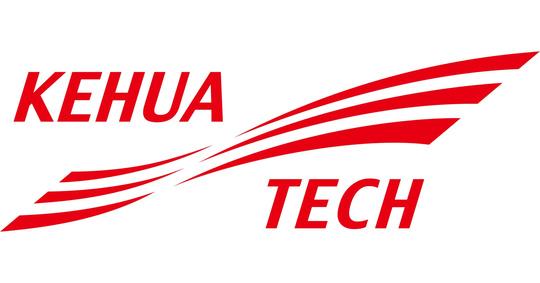

voluntary commitments by state and non-state actors introduced by the UN as a platform to showcase commitments by the international community, including India, in energy access, renewable energy and energy efficiency
RESEARCH ANALYST, COUNCIL ON ENERGY, ENVIRONMENT AND WATER (CEEW)

PROGRAMME ASSOCIATE, COUNCIL ON ENERGY, ENVIRONMENT AND WATER (CEEW)

The Delhi government is revamping the national capital's 2016 solar policy and had recently circulated a draft for public comments The 2022 policy sets an ambitious target of 6 GW of installed solar capacity by 2025–three times higher than the last policy It plans to do this by broadening the scope of the policy to include utility-scale solar projects set up outside the state In conformity with India’s national targets, the policy also aims to substitute 25 per cent of Delhi’s electricity demand through solar energy
Delhi’s solar policy is envisioned as an action-oriented document with a shorter timeframe of three years The policy puts major impetus on utilityscale projects, with more than 80 per cent of the target met through installations outside the state Deployments within the state are promoted through rooftop solar with a separate target of 750 MW by 2025-26 This is crucial, considering Delhi has land constraints and limited potential for other renewable energy deployments such as wind or hydro
The Delhi draft solar policy is a welcome step in the right direction Delhi can demonstrate leadership in solar adoption, especially for states with a land-lock situation or limited opportunities for other renewable energy sources However, to strengthen the policy and facilitate adoption further we propose the following.

First, focus beyond rooftops to leverage untapped solar opportunities within the state The policy already encourages the installation of energy storage projects and the deployment of solar on agricultural land Similarly, the policy can recognise the potential of floating solar projects (i e installing solar photovoltaic modules mounted on floating platforms on the surface of water bodies) in the state and solar-based electric vehicle charging considering the ambitious targets of the state’s EV policy The policy can also acknowledge and set targets for diverse distributed solar opportunities within the state This will help track segment-wise progress
Second, leverage innovative policy tools such as energy compacts, green tariffs and behind the-meter installations to further accelerate the can introduce energy compacts, which are
In the case of the Delhi solar policy, energy compacts will provide the necessary impetus for the solarisation of government offices and residential buildings, schools, hospitals, and police stations This will further nudge the other large electricity consumers in the private sector to adopt energy compacts In addition, the policy can propose a green tariff mechanism for power purchases by consumers who wish to utilise energy from renewable sources without undertaking the installation or participating in peer-to-peer trading This has been adopted by other states (such as Andhra Pradesh, Karnataka, Maharashtra, Gujarat, and Uttar Pradesh) and will promote clean energy adoption among non-obligated consumers as well Also, the policy can recognise the behind-the-meter captive installation without requiring to integrate the system into the power distribution grid Behind-the-meter captive installations refer to electricity produced and consumed on-site without having to pass through a meter
Third, clearly recognise the roles and responsibilities of the Delhi Electricity Regulatory Commission (DERC) in scaling solar in Delhi The draft policy only partially discusses the responsibilities associated with DERC The role of the DERC will be crucial in notifying the appropriate regulatory frameworks to promote the deployment of grid-connected solar projects such as notifying the framework for peer-to-peer trading platforms, green tariff regulations, and feed-in-tariffs, among others
Finally, emphasise on consumer awareness programmes to promote rooftop solar deployment Unlike utility-scale projects, the deployment in the distributed renewable energy segment is largely consumer-driven According to a CEEW study, 78 per cent of consumers were aware of rooftop solar in East Delhi but only 41 per cent had knowledge about the technology. There is a need to educate consumers about potential benefits, new business models, incentives, DISCOM processes for grid integration, availing affordable solar loans and various financing options The Delhi Solar Cell should conduct such campaigns in partnership with key stakeholders such as DISCOMs, leveraging the trust enjoyed by such entities among consumers
These steps can be adopted to create a more holistic solar policy for Delhi and to ensure that its provisions and mechanisms are implementable It will help realise the policy’s vision of making solar energy accessible and affordable for all consumers in Delhi
In the case of the Delhi solar policy, energy compacts will provide the necessary impetus for the solarisation of government offices and residential buildings, schools, hospitals, and police stations. This will further nudge the other large electricity consumers in the private sector to adopt energy compacts."


Power consumption across India has been increasing rapidly, a sign of continued economic growth and strength in the overall Indian economy Surging demand creates an opportunity for states to rebalance their power mix toward renewables, by adding additional solar, wind and storage capacity
For example, Delhi is projected to hit 8,100 MW of peak demand (5% growth), while Uttar Pradesh is projected to hit nearly 28,000 (8% growth) While this represents a challenge for states, it also creates a tremendous opportunity for renewable energy
Each 100 MW of firm load requires approximately 200 MW of solar, 160 MW of wind (due to their low CUF) and 100 MW/400 MWh of Energy Storage (though could be less, depending on load profile) to have a reliability of 85% (the planning standard for coal, though in practice, the average coal plant has a lower availability). This means nearly 12 000 MW of new RE capacity is required annually for Delhi and UP alone (see Figure 1) Though UP and Delhi have both been moving in the right direction, the scale of RE deployment is not nearly fast enough to meet the needs of economic growth and development
than ₹5 0/unit Note that due to inflation and the Russia-Ukraine war the coal prices are even more expensive now, but FY21 is the latest available full-year data
This creates opportunity for developers within these states (especially for solar rooftop), as well as out-of-state (as both Delhi and UP have weak wind resources, building wind would require access to ISTS), with an investment required of ₹11,000 Cr for Delhi and ₹62,000 Cr for UP
Of course, many regulators are still advocating for continued investment in coal plants However, there is a substantial savings to be made by choosing RE + storage instead. For example, the most recently developed coal plant in Uttar Pradesh (Harduaganj Extension), provides power at ₹5 61/kWh, well above the blended price of ₹4 0/kWh for new RE + storage By meeting new capacity with RE + storage instead of new coal, Delhi and Uttar Pradesh can save ₹500 Crore/year and ₹2700 Cr/year against the business-as-usual of contracting new coal capacity
Admittedly, there are some concerns about past “overbuild” during times of heady demand growth only to be followed by overcapacity during lulls in demand growth (eg During covid) However, solar, wind and storage are superior in two respects Firstly, they can be built in 12-18 months (vs 4-5 years for a coal plant), so if demand projections are off it is much easier to then slow the rate of growth Secondly, there is a substantial amount of existing coal capacity that are beyond their PPA lifetime that could be retired, if overbuild were to occur (though in the current power crisis, o erb ild sho ld be the least of our worries)
existing plants in Uttar Pradesh/Delhi which nsumed > 200 MU in FY21 and were more
In the long run, ideally as part of a financial deal with developed countries and/or multi-laterals, existing high-cost PPAs can be “bought out” prematurely and be replaced with RE + storage as well In total, the savings would be ₹4000 Cr/year for Delhi and ₹9000 Cr/year for Uttar Pradesh (see Figure 3)
It is worth re-iterating that none of these savings are possible unless enough RE + storage is first built to meet demand growth So on top of the 12,000 MW of wind/solar/storage per year required, an additional 38,000 MW of wind and solar would be required to retire the above coal (again for Delhi and UP alone) and replace with lower-cost, higher-reliability RE + storage The challenge is significant but creates a tremendous opportunity for RE developers in these states (and across India)
In addition to the tremendous cost savings to DISCOMs, embracing RE + storage can also substantially improve reliability as storage can be ramped up and down within milliseconds to meet fluctuating demand (unlike coal which is slow to ramp up/down and extremely expensive to turn off during periods of low load such as 2 AM – 6 AM). Furthermore, there is a strong benefit to energy security as solar and wind, once built, do not require further imports Of course, India is doing a commendable job building RE manufacturing capacity, but even if RE were to be 100% imported, the $16 Billion spent on coal imports in FY22 could instead be used to import 133 GW of solar cells Solar lasts 25+ years (and longer if recycled) whereas coal, once imported and burned is used up and must be imported again the next year Finally, ramping up RE investments can create substantial employment opportunities, particularly in states like Uttar Pradesh, not only in the construction and maintenance of RE facilities, but also in manufacturing
Drastically ramping up RE investments across India can save DISCOMs tens of thousands of Crores, improve energy security, improve grid reliability and create jobs. There is a huge opportunity for RE developers to support DISCOMs and consumers in making a clean energy future a reality
The new high power FIMER central inverter raises the performance, cost efficiency and ease of installation to new levels The inverters are aimed at system integrators and end users who require high-performance solar inverters for large - photovoltaic (PV) power plants and are optimized for multi-megawatt power plants

Like other FIMER central inverters, the PVS980 58 has been developed on the basis of decades of experience in the industry and proven technology platform Unrivalled expertise from the world’s market and technology leader in frequency converters is the hallmark of this solar inverter series.
The PVS980 58 inverter is one of the most efficient and cost-effective ways of converting the direct current (DC) generated by solar modules into high quality and CO2 -free alternating current (AC) that can be fed into the power distribution network
FIMER central inverters have a high total efficiency Precise, optimized system control and maximum power point tracking (MPPT) combined with the unit’s highly efficient power converter design deliver the maximum energy from the PV modules to the power distribution network For end users, this generates the highest possible revenues from the energy sales
PVS980 58 inverter utilizes patented self-contained cooling system in power module cooling This innovative, low-maintenance cooling solution is also used in other industrial applications and is designed for demanding environments. The cooling system needs no separate commission and it ensures outstanding endurance
PVS980 58 inverters are designed for fast and easy installation The industrial design and modular platform provide a wide range of options, such as remote monitoring fieldbus connection and modular and flexible DC input connections
The integrated DC cabinet saves space and costs as the solar array junction boxes can be connected directly to the fused busbars in the DC cabinet PVS980 58 inverters are customized for the needs of end users
Versatile design for large-scale PV plants to minimize system costs
FIMER’s PVS980 58 central inverter enables system integrators to design PV power plants that use the optimum combination of inverters with
different power ratings. Equipped with extensive electrical and mechanical protection, the inverters are engineered to provide a long and reliable service life of at least 25 years
Advanced grid support features

The PVS980 58 software includes all the latest grid support and monitoring features, including active power limitation, fault ride through (FRT) with current feed-in and reactive power control.
Active and reactive power output can be controlled by an external control system or automatically by the inverter All grid support functions are parameterized, allowing easy adjusting for local utility requirements FIMER central inverters are also able to support grid stability at night by providing reactive power with the DC input
Maximized reliability
Industrial design based on FIMER industrial drives platform
Reduced levelized cost of energy (LCOE) High efficiency with low auxiliary power consumption Low maintenance cost
Lower PV system costs
High 1500 Vdc system voltage Bigger power block size lower BOS cost up to 17 5MVA size
FIMER service

Global support with local presence



Prime Minister Shri Narendra Modi recently declared the village of Modhera in Gujarat as India’s first 24 x7 solar-powered village

FIMER supplied its 1MVA inverters for the BESS system and successfully executed the Integrated Solar Energy Project at Sun Temple Town of Modhera District Mehsana Gujarat. This is India’s first integrated state of art Solar Project The battery energy storage system (BESS) is one of the largest to date under operation in India The project was supplied through one of India’s biggest EPC players, Mahindra Susten


Additionally, the town is solar powered by a 100kW rooftop system on govt buildings, 50kW Solar parking infrastructure, 271 nos X 1Kwp solar systems on residential buildings and 150kWh Battery storage for the solar charging systems This small town in the state of Gujarat is self-reliant on energy consumption now
The project which is a remarkable project features a 6MW grid connect system with a 6MVA BESS system with an 18MWh Battery energy storage system


FIMER supplied PCS of rating 1MVA x 6 nos for BESS application, During Solar hours, the Solar inverter powers the load and excess power charges the batteries, PCS can also support load demand during solar deficit conditions FIMER PCS is also equipped with Black Start mode / Grid forming mode, during grid failure conditions FIMER PCS can form the Grid in V/F mode and other sources ( inverters) can synchronize to AC bus and start supporting load or charge batteries. If the grid comes back PCS can operate in the grid following mode and act as backup whenever required This is the first time the Bi-directional converter 1MW was supplied to Indian market

inverters contribute to India’s first solar-powered village Modhera’s BESS system, One of the largest battery energy storage systems (BESS) under operation in India
This is India’s first integrated state of art Solar Project. The battery energy storage system (BESS) is one of the largest to date under operation in India.

India installed around 10 GW of Solar PV projects in the financial year 2022-23 from April 2022 to January 2023 The country's total installation crossed 63 89 GW by the end of January 2023 Rajasthan installed over 16 35 GW, there is a growth of 56% year over year with the installation of over 10 5 GW by the end of January 2022. Among the Top Solar States such as Gujarat, and Telangana stepped one position ahead compared to their position in the same period in 2022 except Karnataka and Andhra Pradesh while Tamil Nadu maintains its previous position in the same period There was a growth of over 27% year over year compared to the total Solar PV installation of 50 3 GW by end of January 2022
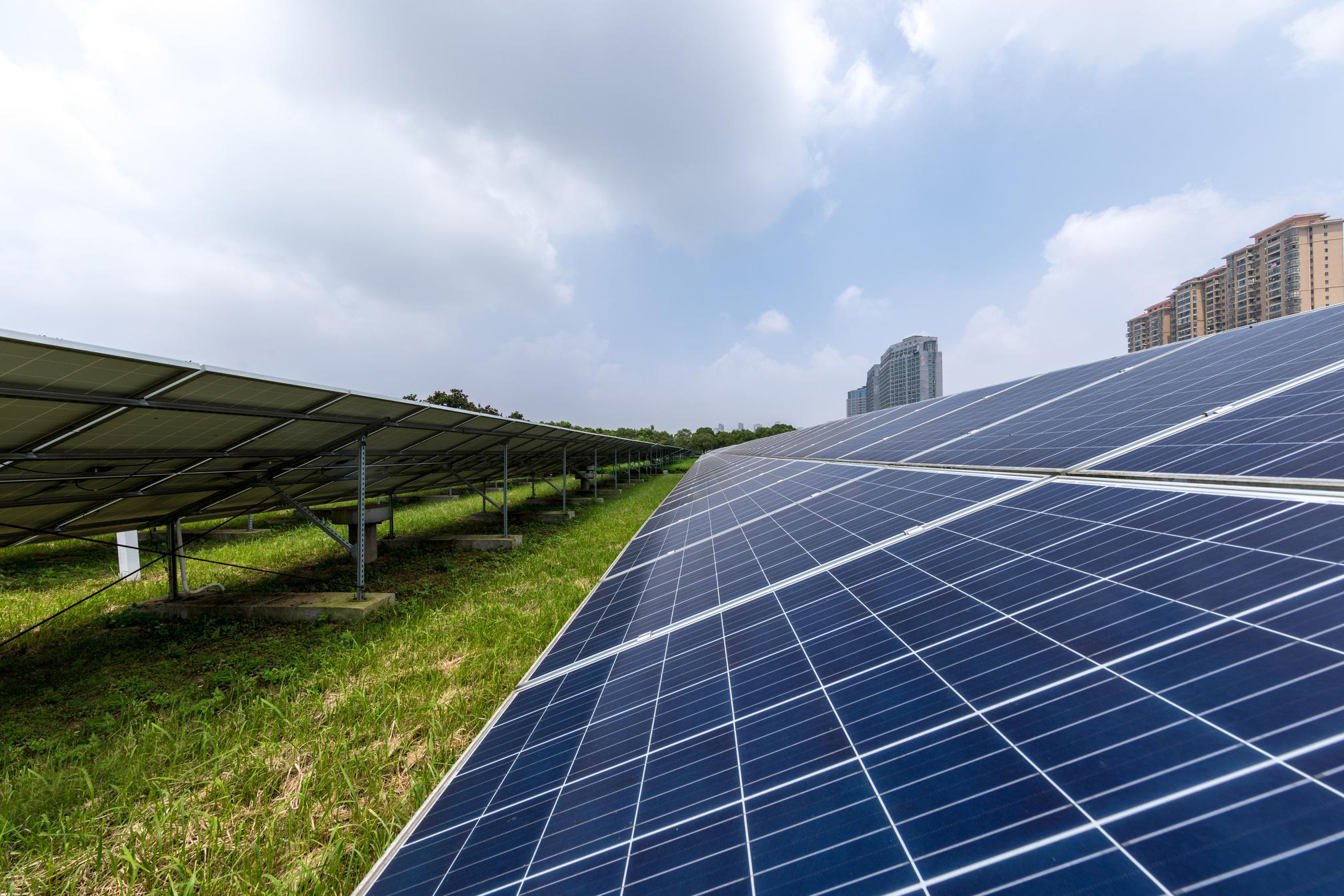
SOURCE:MNRE
Renewable capacity additions continue to increase at a rapid pace in India, accounting for approximately 29 5% of total India’s power capacity at the end of January 2023 India’s total installed power capacity stood at over 411 GW at the end of the first month of the calendar year 2023 from all the sources, with renewables accounting for ~121 55 GW making up 29.5% compared to cumulative renewable energy installations of 105 85 GW at the end of January 2022, which represented a growth of 14 8% yearover-year Solar power accounted for approximately 50 3 GW of installations, which represents 26 8 % of the total installed power capacity. The share of Solar power in the installation mix grew by 27 02 % in January 2023 compared to January 2022 Among the renewable, Wind and Solar constitute around 87 1% of the total renewable, Wind Power installed capacity at the end of January in the Calendar Year 2023 was around 41.9 GW which represents 10.2% of the total power capacity installed
SOURCE:CEA,SOLARQUARTERRESEARCH

Total renewable energy generations in January 2023 reach 17,735 38 million units there is a growth of RE generations by around 35% over January 2022, where the RE generations were 11,158 26 million units Solar Power generation has been increasing by over 59% year-over-year from January 2023 (9,290 01 million units) to January 2022 (6,611 09 million units), Wind Power generation has increased by almost 48% in the same period and reaches to 5,013 74 million units in the month of January 2023

In the calendar year 2022, 97,758 million units (MU) of total volume were traded in IEX (Indian Energy Exchange) which shows a yearover-year growth of 0 4 percent compared to the calendar year traded volume of 97,326 million units in the calendar year 2021 The monthly traded volume shows the highest in April 2022-23
The Indian Energy Exchange, India’s premier energy exchange, achieved a 16,652 million units’ total volume in the first two months of 2023, including Green Power trade of 688 million units, and 7 68 lac RECs (equivalent to 769 MU) While 1 54 ESCerts (equivalent to 154 MU) in the month of January 2023
While the average daily volume traded on the Exchange increased in February 2023 by 5% month over month (MoM), the overall volume declined 5% MoM due to lesser trading days vis-à-vis the previous month The electricity volume on the Exchange in February 2023 at 7,673 million units, registered a 6% decline on a year-overyear basis and a 7% MoM basis The overall volume on the Exchange during the month was 8,200 MU, a de-growth of 7% on a YoY basis
Solar Energy Corporation of India (SECI) paid ₹89 1 billion (~$1 086 billion) to Solar and Wind developers for power purchased in the calendar of 2022 The disbursed amount was highest in the mid of 2022 which was June & July There were many ups and downs in the payment to generators in the full year of 2022 as shown in the above chart The highest and lowest payments were made in July and January (lower due to lower wind speeds, and winter months across India) While SECI paid ₹15 94 billion for the purchase of Solar & Wind in the first two months of the fourth quarter of the calendar year 2022 The payment made to the power generators such as wind and solar were quite high in the second half compared to the first half of the calendar year 2022
TREND OF SOLAR TARIFF, 2022-23
SOURCE:SECI
lowestTariff(INR/Kwh)

After the imposition of BCD on Solar PV modules and Cells, the tariff rate of Solar auctions has increased
Other factors for the increase in tariff rate are the ong with the ongoing war between Russia and Ukraine But the relief for the developers is that the government is extending the to ongoing disruption in the solar supply chain.


Public or private, there has been no dearth of interest for India’s solar sector to succeed, but ironically, a few policies intended to give a fillip to domestic manufacturing have ended up contributing to the widening gap between the aimed and the gained in this sector. The proposed extension on ALMM is a welcome move; however, to hit the mark, the government must increase the tenure till at least 50 GW capacity of higher efficiency modules is available in India The domestic solar PV module manufacturing market is nascent, quite contradictory to the ambitious RE targets the country has set and till a strong base is created, it is only unfair to expect the indigenous manufacturers to deliver on the strenuous demand
The first approved list of models and manufacturers, comprising only domestic module manufacturers, was notified by the government of India in March 2021. This was also when the industry was dealing with pandemic-induced delays in solar installations The order restricted the use of imported modules, (including brands which are globally in demand for their quality) for utility-scale solar effective April 1, 2021 While aligned with the very encouraging PLI scheme, the order did not drive results even for the non-utility players, who were allowed to import modules for smaller capacities but with a 40% hike on the Basic customs
duty on such imports All of these, put together, not only hampered the availability of high-efficiency modules with a proven track record but also negatively impacted the price mechanism, thus discouraging developer confidence in the sector There have been multiple retrospective changes to the order since then, but nothing so far has brought much-needed relief to the developers struggling to meet capacity addition targets
The recent amendment to the ALMM order, dated 10 March 2023 allows imports of high-quality solar PV modules for projects that will be commissioned till March 31, 2o24 only. However, unlike utility-scale, smaller developers undertaking open-access solar plants seek approvals from multiple state authorities which generally takes more time than one year to commission a project Considering these kinds of timelines, the recent amendment which limits the extension to just a year risks capital investment on module purchase if the project commissioning goes beyond the set deadline, thus making the case for a longer extension even more pressing
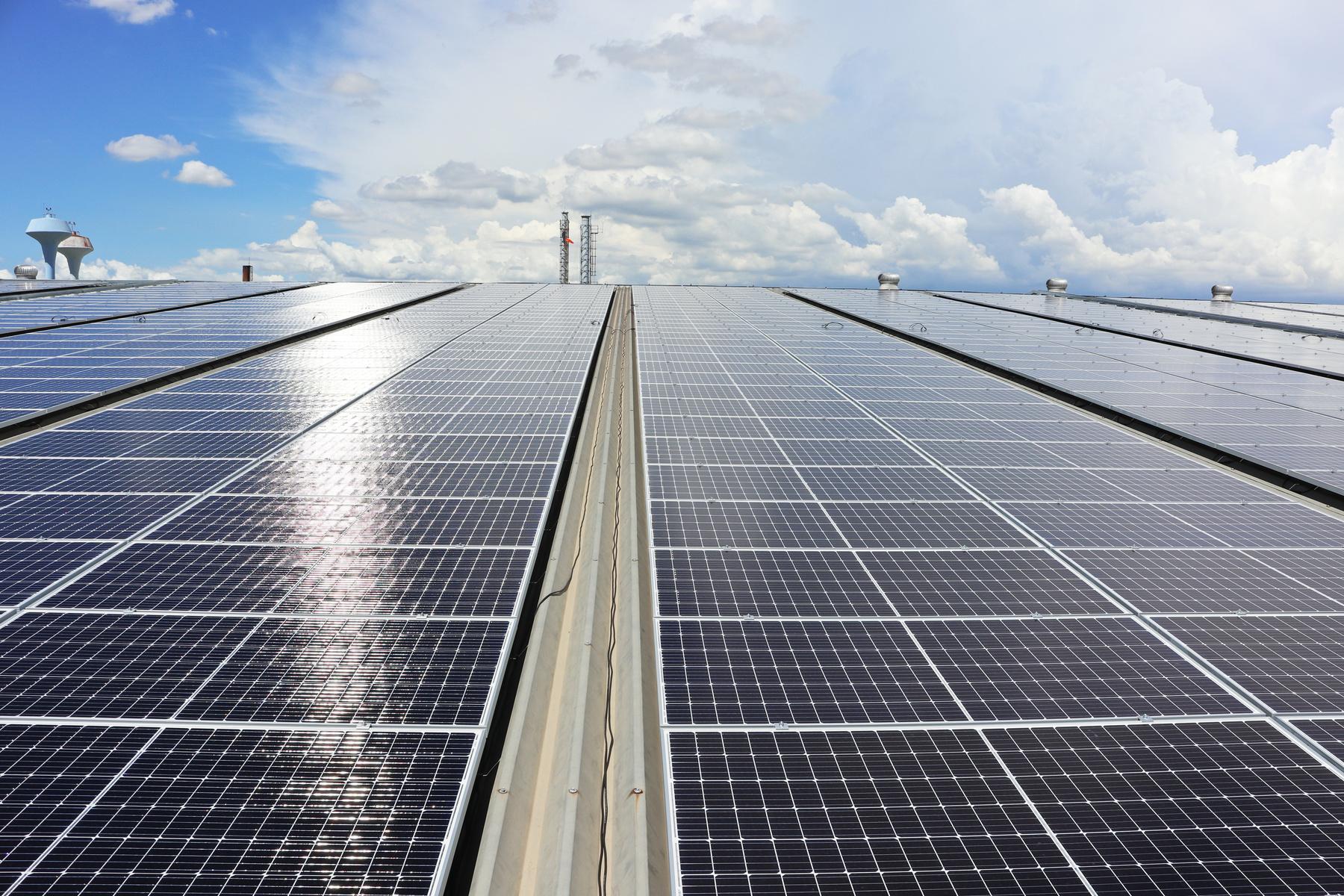
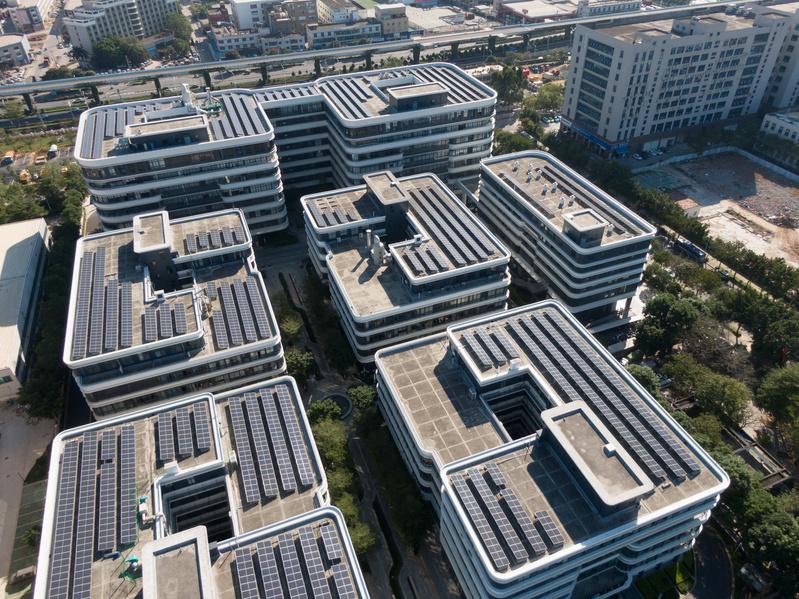
Recently, a parliamentary panel has attributed the low installation of solar roof-top and wind energy projects as key reasons for the shortfall in achieving India's renewable energy capacity target of 175 GW by 2022. While stakeholders across the board are aiming at a unified goal of achieving a global edge in the sector, it is policies that make the value chain cost-competitive without challenging the quality will direct the growth in this sector In the same breath, whenever the domestic market will be ready to take on the ever-increasing demand for high-performing solar PV modules the ALMM should be kept out of the purview of rooftop solar till the requirement of utility and bid-out large-scale solar is addressed first
To sum it up this welcome move by the government, which is positive for both, the developers and the discoms can drive real change in the sector with a little more time than offered
Distributed SOLAR LEADERSHIPAWARDS 2023
Project Developer of the Year: RESCO Model
HFM Solar Power Private Limited
Project Developer of the Year: Capex Model
U-Solar Clean Energy Solutions

EPC Company of the Year: C&I
Helios Natural Renewtech Pvt. Ltd.
EPC Company of the Year: Residential
Moopens Energy Solutions Pvt. Ltd.



EPC Company of the Year: Industrial (North East Region) System Integrator of the Year (North East Region)
NATSAKEE INCORPORATION
EPC Company of the Year: Industrial
Prozeal Infra Engineering Pvt. Ltd.


Congratulations to all the
BUSINESS EXCELLENCE AWARDS WINNERS
Distributor of the Year
Impulse Green Energy Pvt. Ltd.

Best Open Access Solar Project

Fourth Partner Energy

Solar Platform of the Year
Oorjan Cleantech Private Limited
Smart Technology Innovation of the Year - International Manufacturer
LONGi Solar Technology Co., Limited


Smart Technology Innovation of the Year - Domestic Manufacturer
Vikram Solar Limited
Channel Partner of the Year
J.S. Solartech India Pvt. Ltd.


Smart Technology Innovation of the Year (HomeScape App)
Amplus Solar

Company of the Year: InverterDomestic Havells India Limited


Company of the Year: BIPV NATSAKEE INCORPORATION
Company of the Year: Equipments & Machinery
SOLIS
Company of the Year: Module (Platinum)
Company of the Year: Inverter - International Vikram Solar Limited
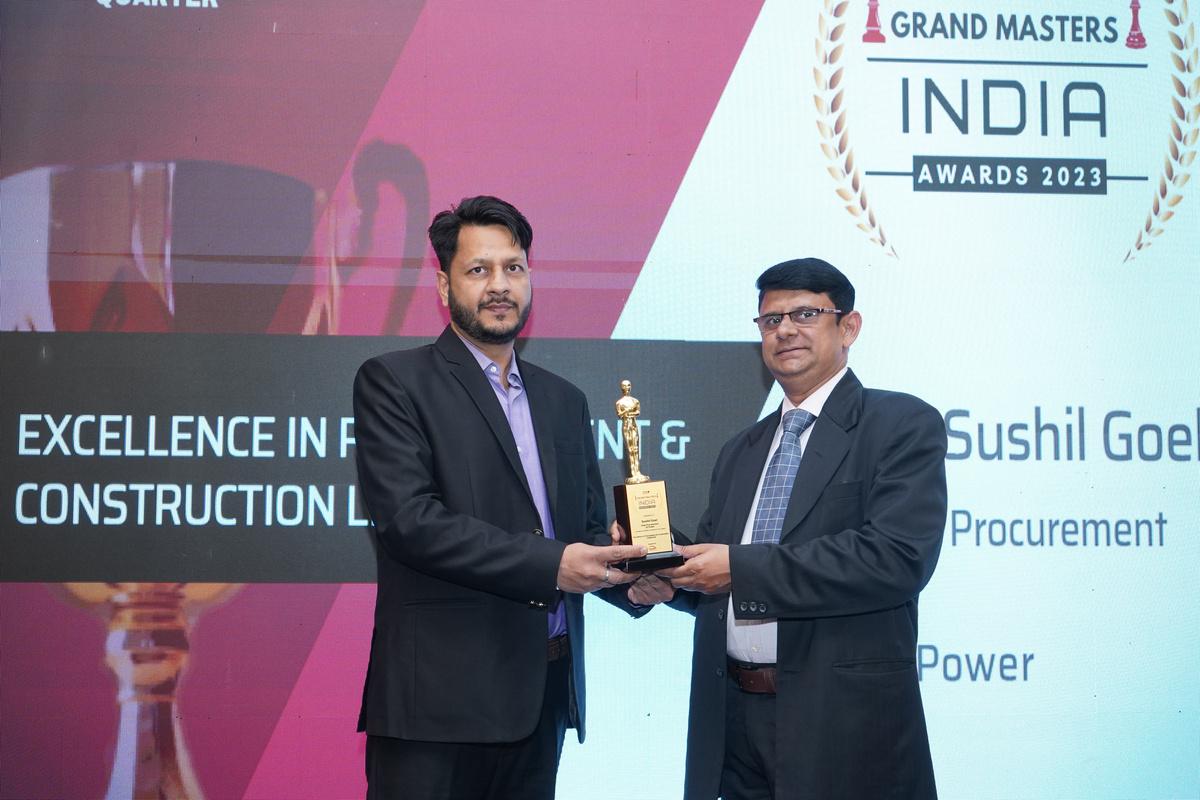
Sudhir Engineering Works Pvt Ltd.

Company of the Year: Safety Life Line
M/s Arista Support Inc.

Company of the Year: Module(Gold)
Saatvik Green Energy Pvt Ltd
Operations & Maintenance Team of the Year
Project Technology Team of the Year: Team Hawk Ai

Company of the Year: Energy Storage
Amara Raja Batteries Ltd.

Excellence in Investor Relation Leadership
Jignasa Visaria - HeadRenewable Capital, Fourth Partner Energy
Excellence in Operations & Maintenance Leadership
Shashidhar G V - Head O&M, USolar Clean Energy Solutions
Excellence in Procurement & Construction Leadership
Male Srinivasa Reddy - Head of Operations, Fourth Partner Energy




Excellence in Business Management Leadership
Mohammed Fayaz - CEO, Moopens Energy Solutions Pvt. Ltd.

Business Development Team of the Year
Amplus Solar

CEO of the Year
Sharad Pungalia, MD & CEO, Amplus Solar
Excellence in Design & Engineering Leadership
Ravi Shaw - Head Solar, ArcelorMittal Group Solar Division

Excellence in Procurement & Construction Leadership
Sushil Goel - Head Procurement, O2 Power

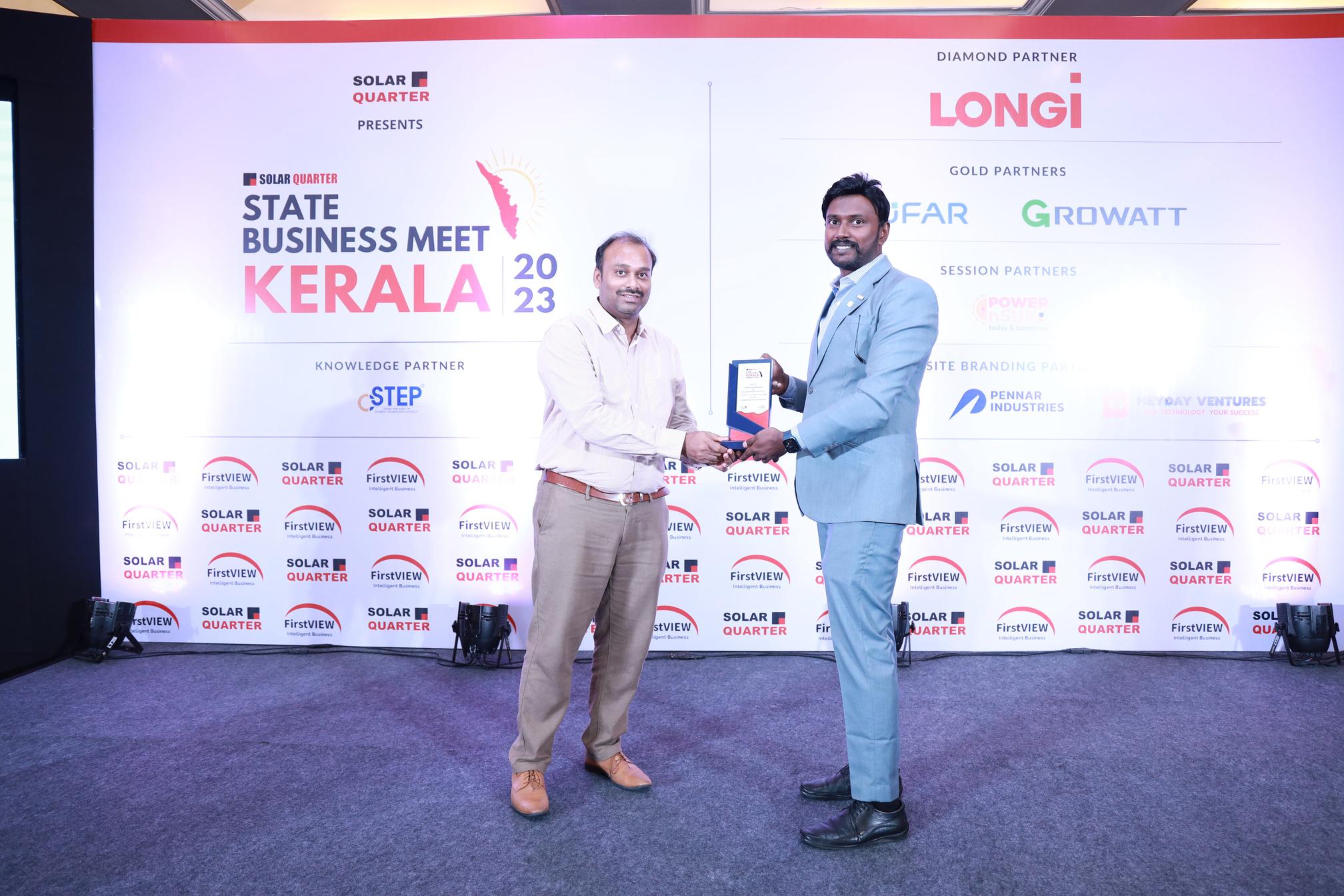
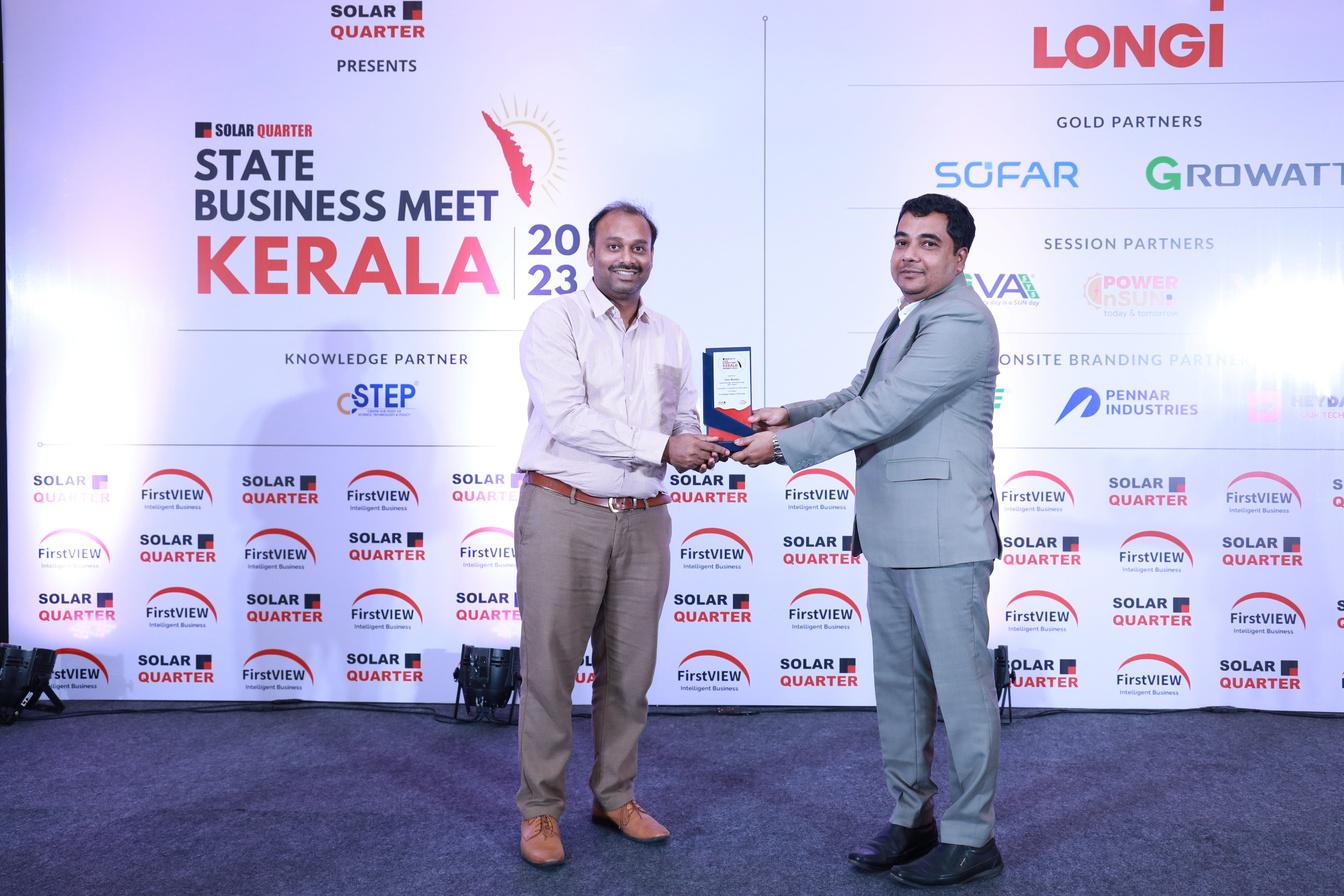
SOLARQUARTER STATE BUSINESS AWARDS:



State Market Leader AwardInverter
ShenZhen Growatt New Energy Co.,Ltd.

State Market Leader Award- EPC
Best Project Of The YearRooftop
State Customer's Choice Award
- EPC (Residential & C&I)
Solar EPC Company Of The Year
- Residential
Moope Ltd.
State Customer's Choice Award - EPC (Residential)
Havells India Limited

State Customer's Choice Award - Inverter
SHENZHEN SOFAR SOLAR CO LTD

States Customer Choice Award- PV Modules




Novasys Greenergy Pvt Ltd
INESS
STATE Best P Floatin
Axis P

ayaz, CEO & s Energy

d.


r of the Year
Managing of Solar Pvt. Ltd.
r of the Year ger ited ear ya td.



NET ZERO ENERGY LEADERSHIP AWARDS
Best Corporate Green Portfolio Award
Viviid Renewables Pvt. Ltd.


Best Game Changing Product Innovation
Best Game Changing Project Innovation
BrightNight India Pvt. Ltd.





Technology & Business Innovation Award
InSolare Energy Pvt Ltd

Sustainability Champion Award

Enerture Technologies Pvt. Ltd.

Green Energy Initiative Of The Year
Pacific Development Corporation













